One app for all your travel planning needs
Create detailed itineraries, explore user-shared guides, and manage your bookings seamlessly — all in one place.
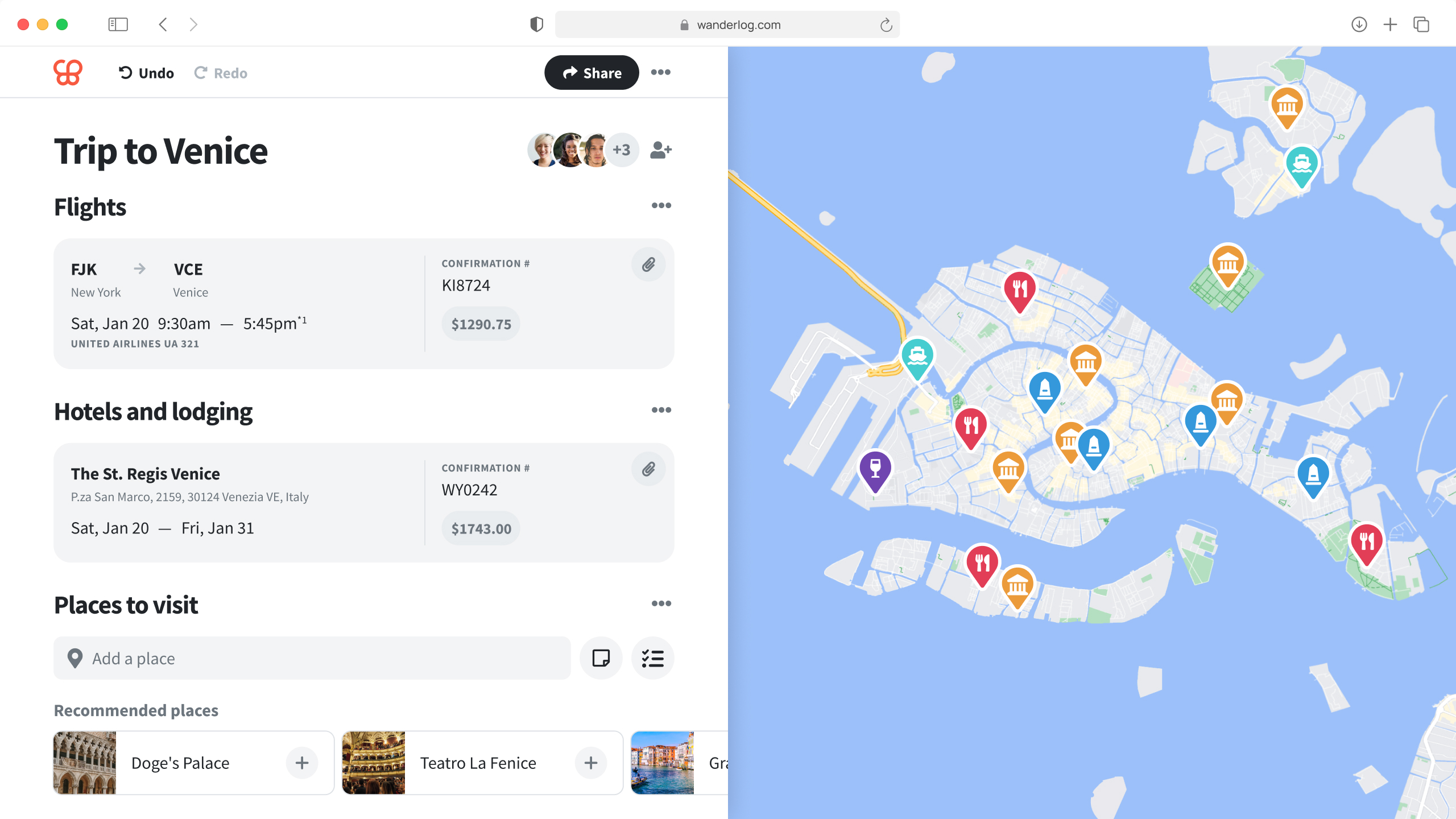

Route optimization
Let us auto-arrange the best route for a smooth and efficient trip!
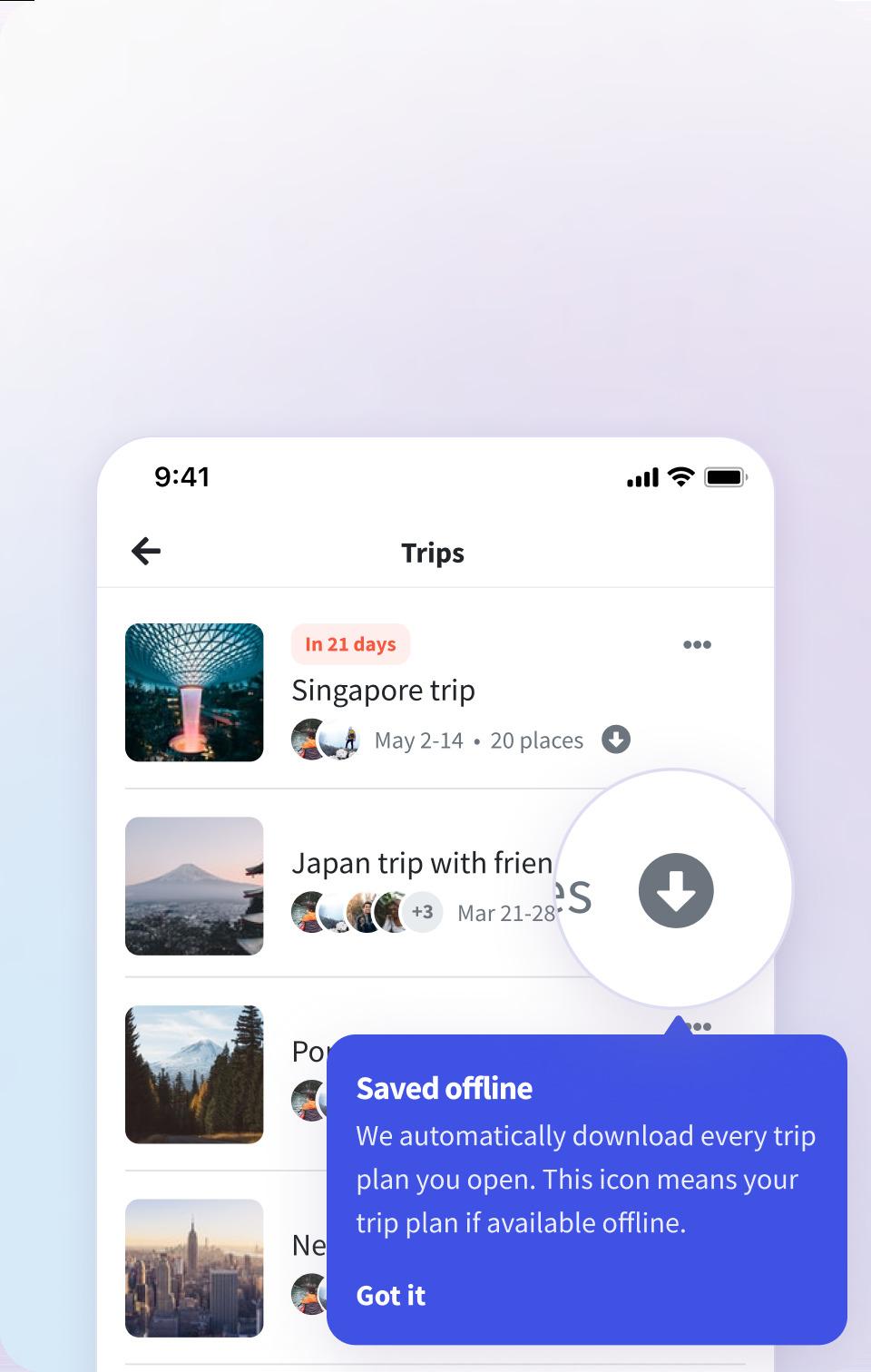
Offline access
Download your trip plan and access it anytime, even without an internet connection.
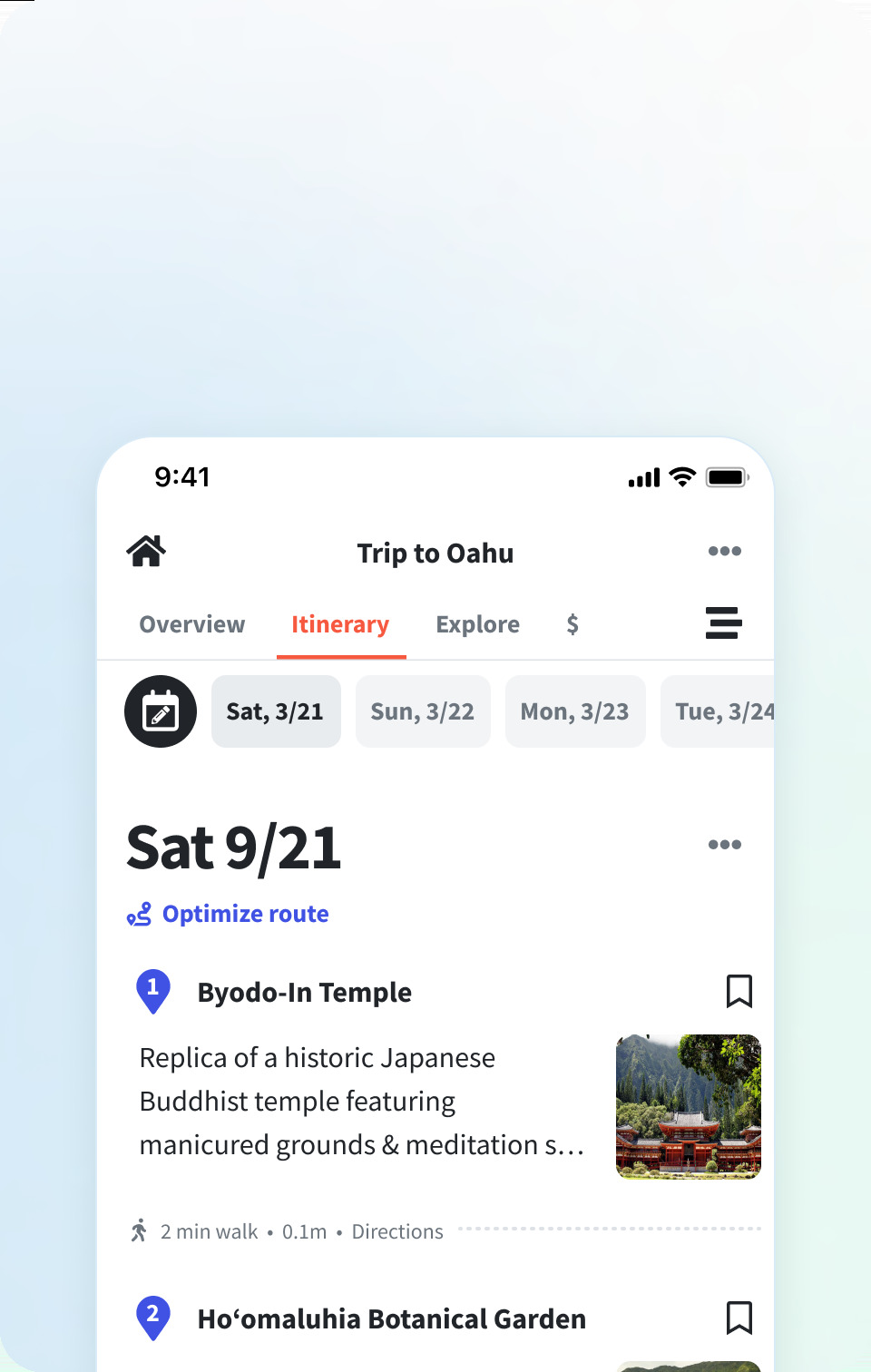
See your trip details—dates, destinations, reservations, and activities—all in one place.
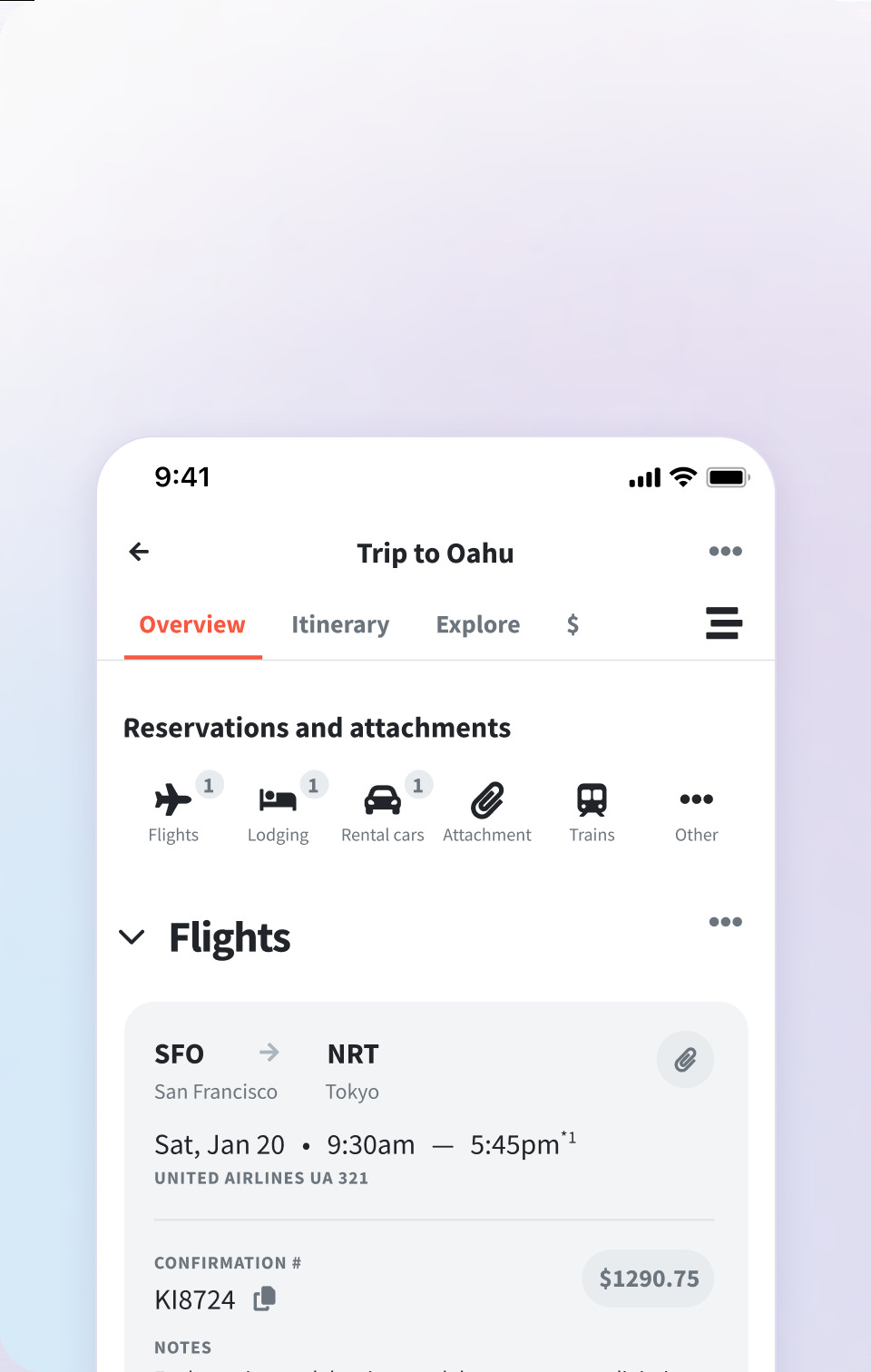
Reservations
Keep all your hotel, flight, and other reservations in one place.
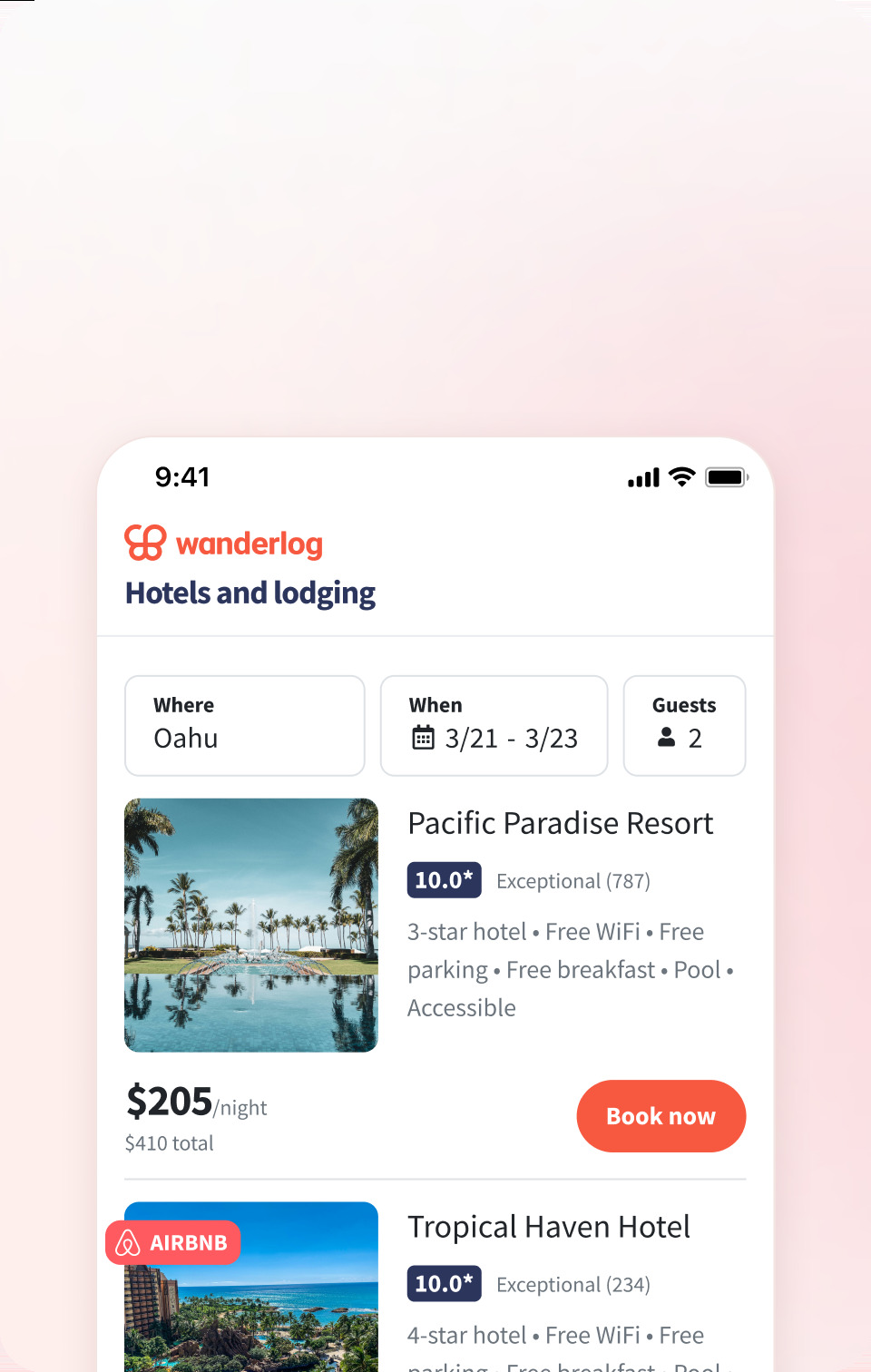
Book a place to stay: we gather all suggestions in one spot and compare prices for you!
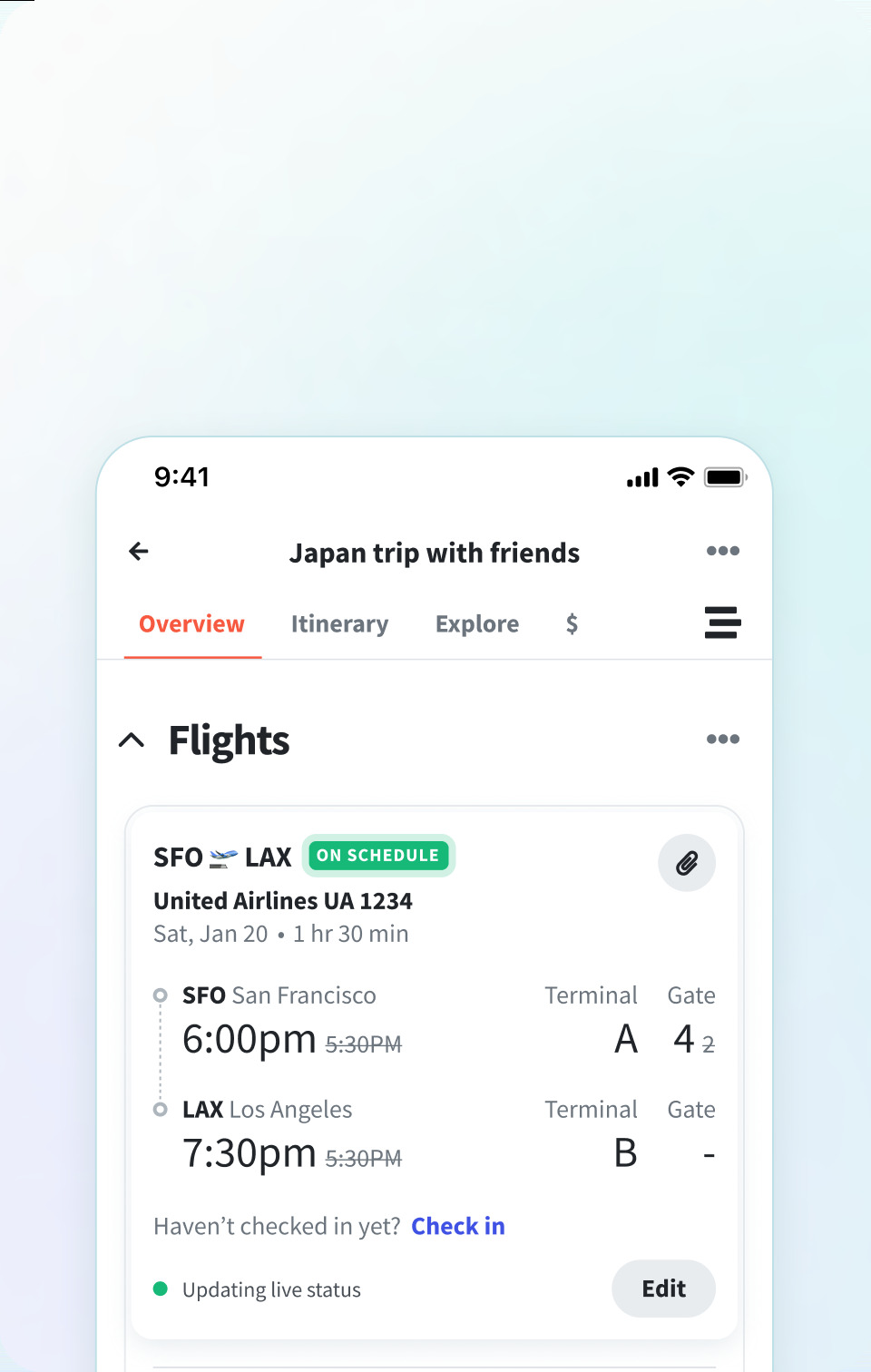
Flight status
Track live flight status for real-time updates on delays and gate changes.
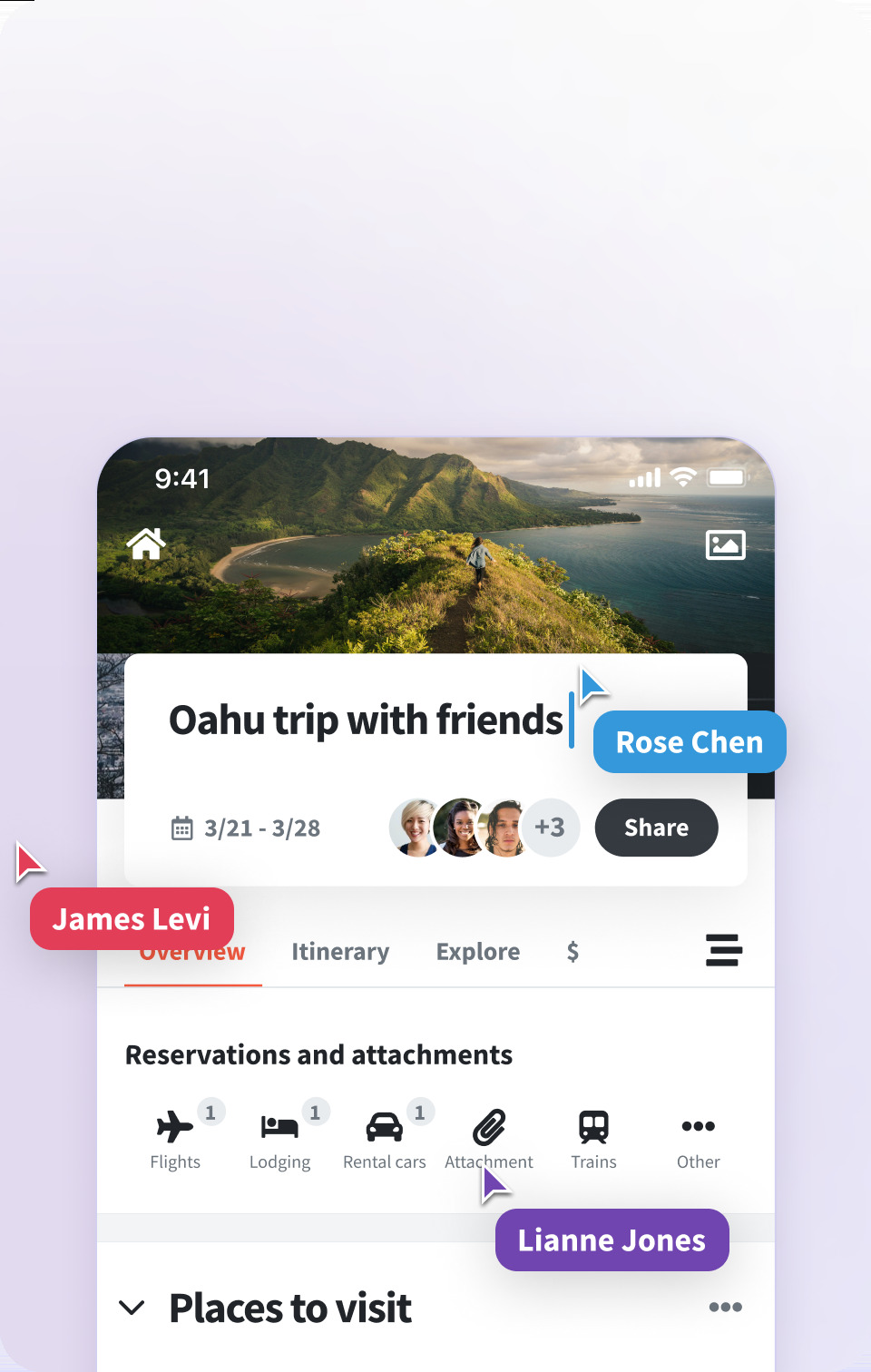
Collaboration
Invite your trip mates and plan your upcoming trip together in real-time!
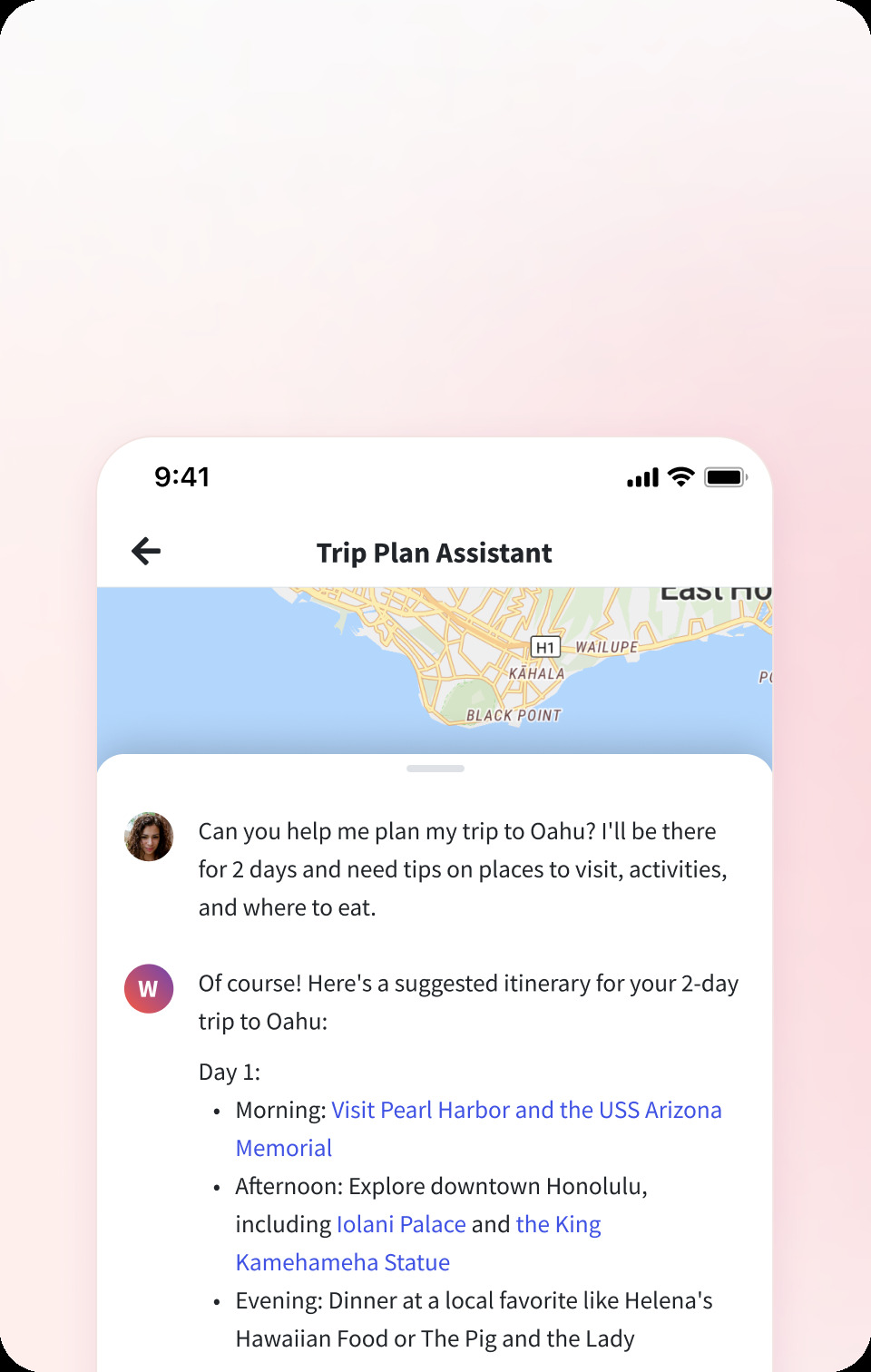
AI Assistant
Ask the AI Assistant to help plan your travel or answer any questions!
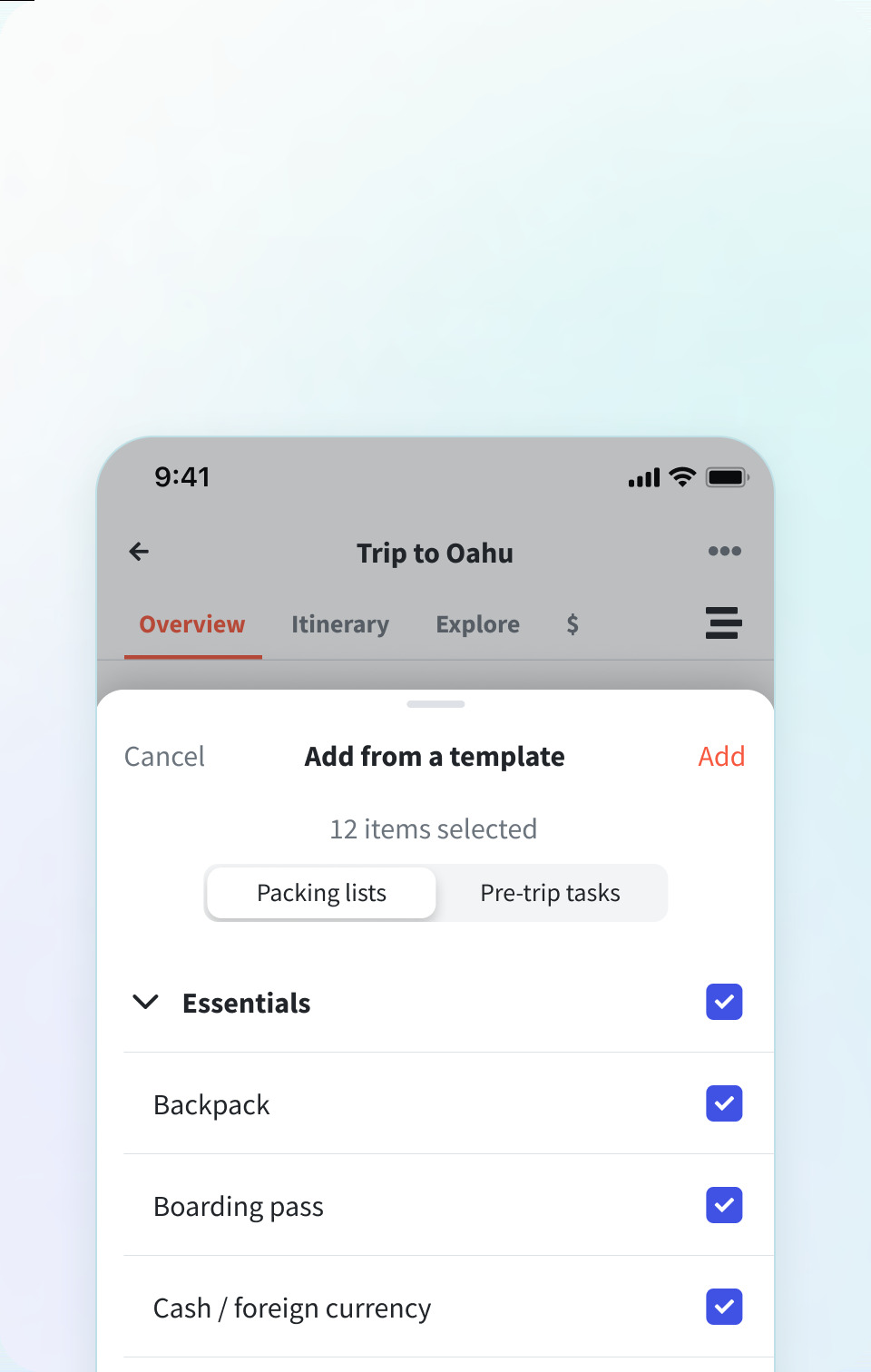
Packing checklist
Create and manage a checklist of items to pack to ensure you don’t forget anything important.
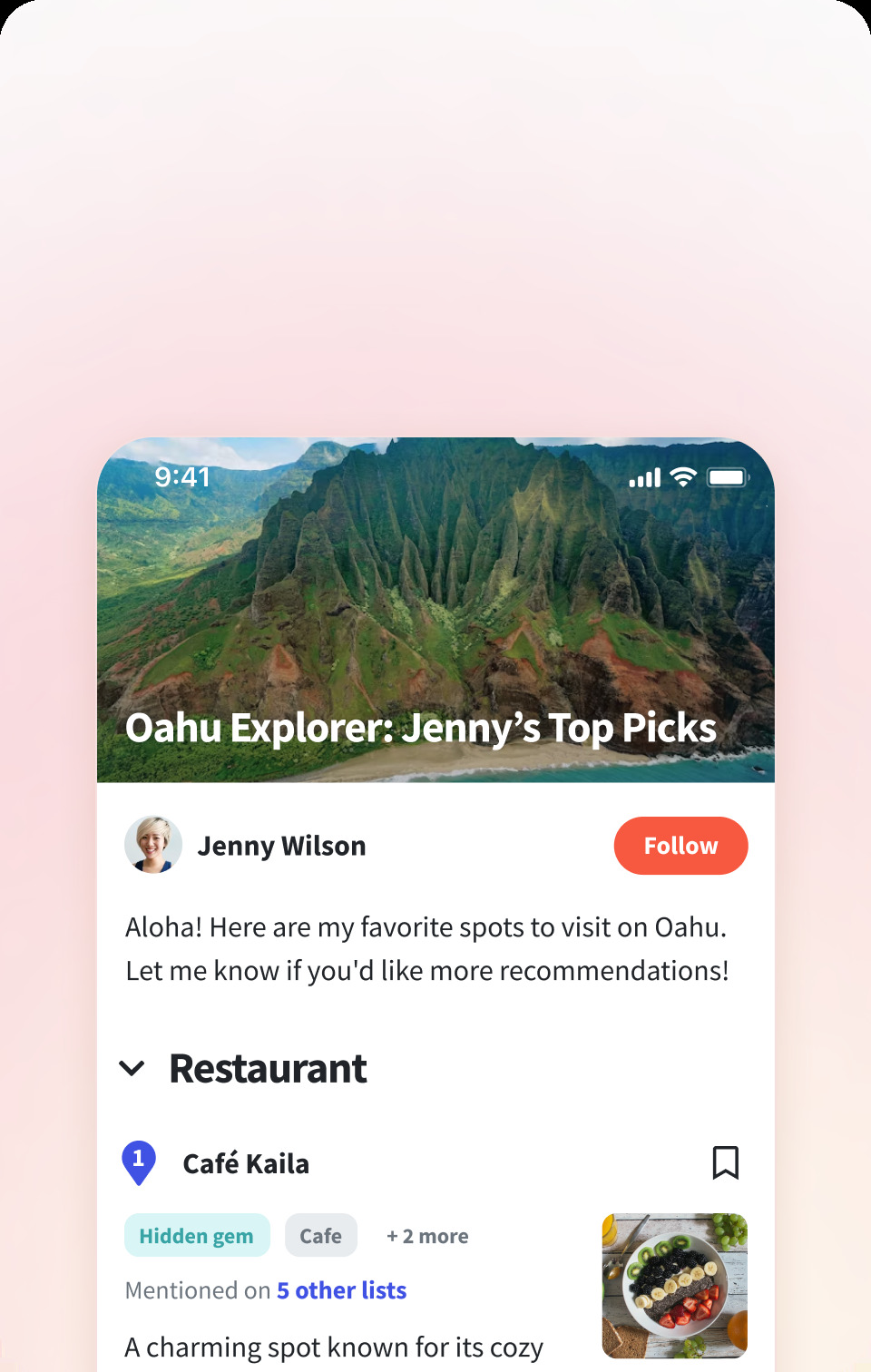
Travel guides
Get inspired by global guides with expert tips and recommendations.

Set and manage your budget, track expenses, and split costs for group trips.
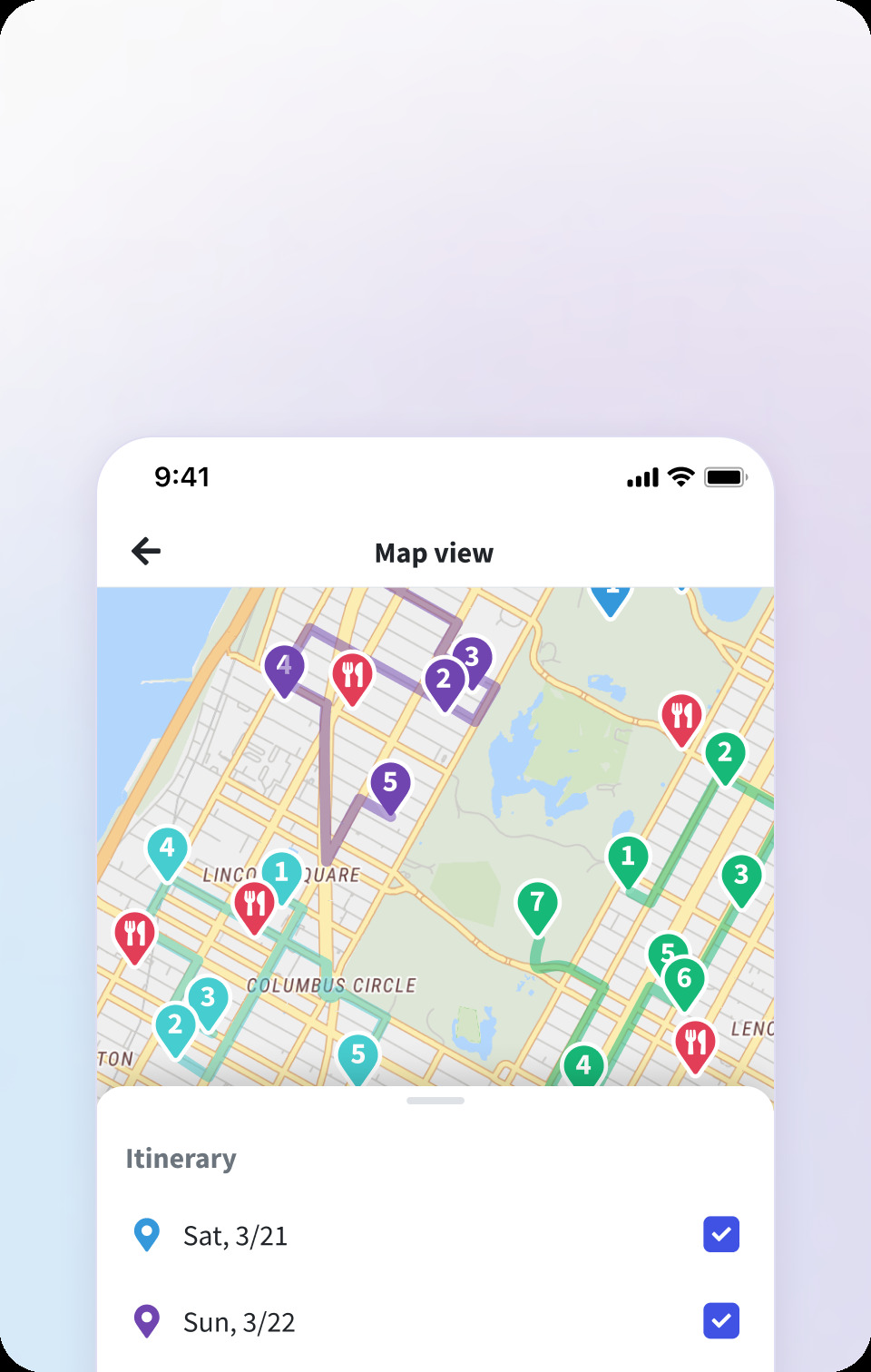
Add a place, and it’ll pop up on your map. Track your route and easily export it to Google Maps!
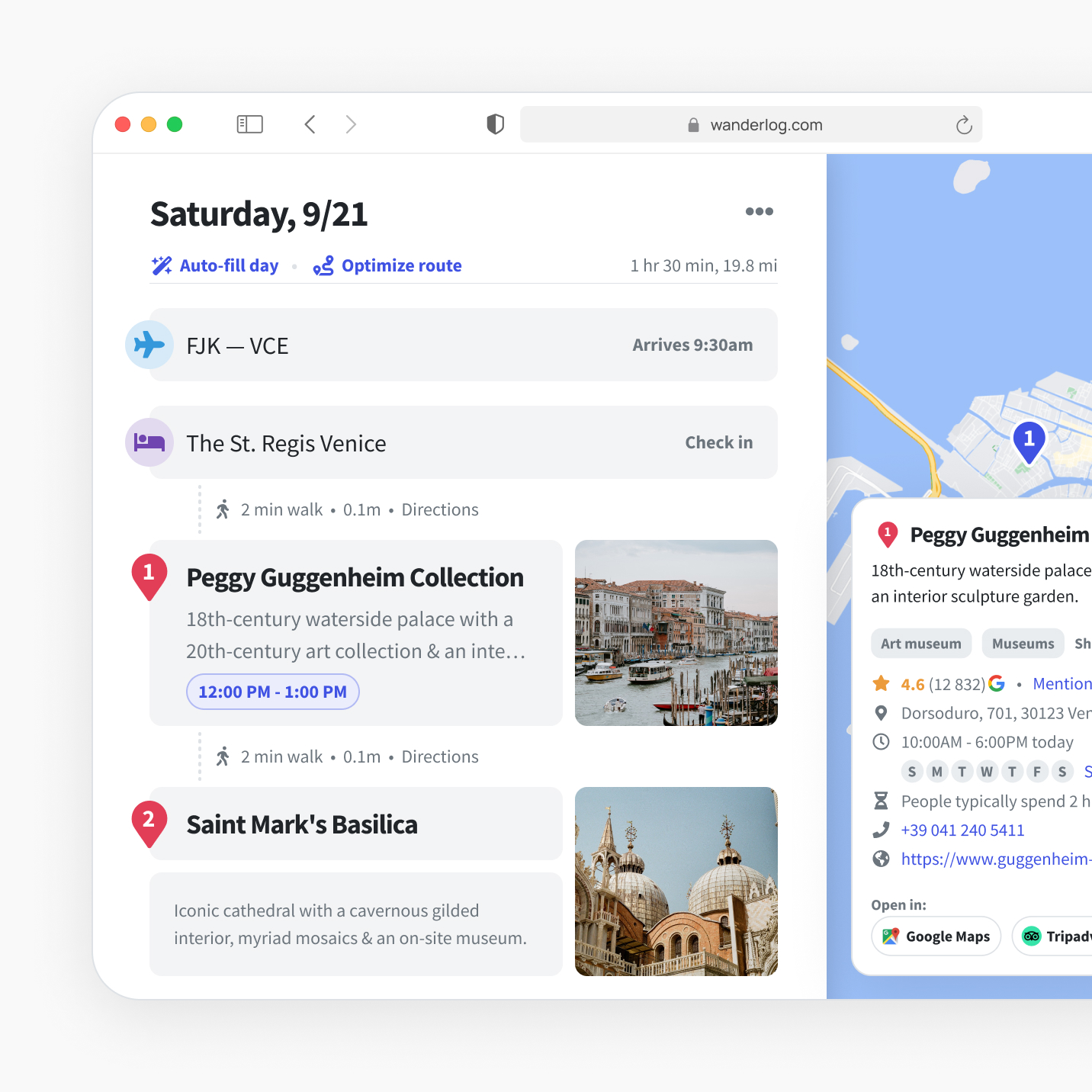
Create a trip itinerary to see everything in one place
Add the attractions you want to visit and see how to go between them on a map. Check distances and travel times between locations and attractions, schedule specific times for your visits, and optimize your route so you can make the most of your trip. See your flights and hotels for the day to keep track of what’s coming up.
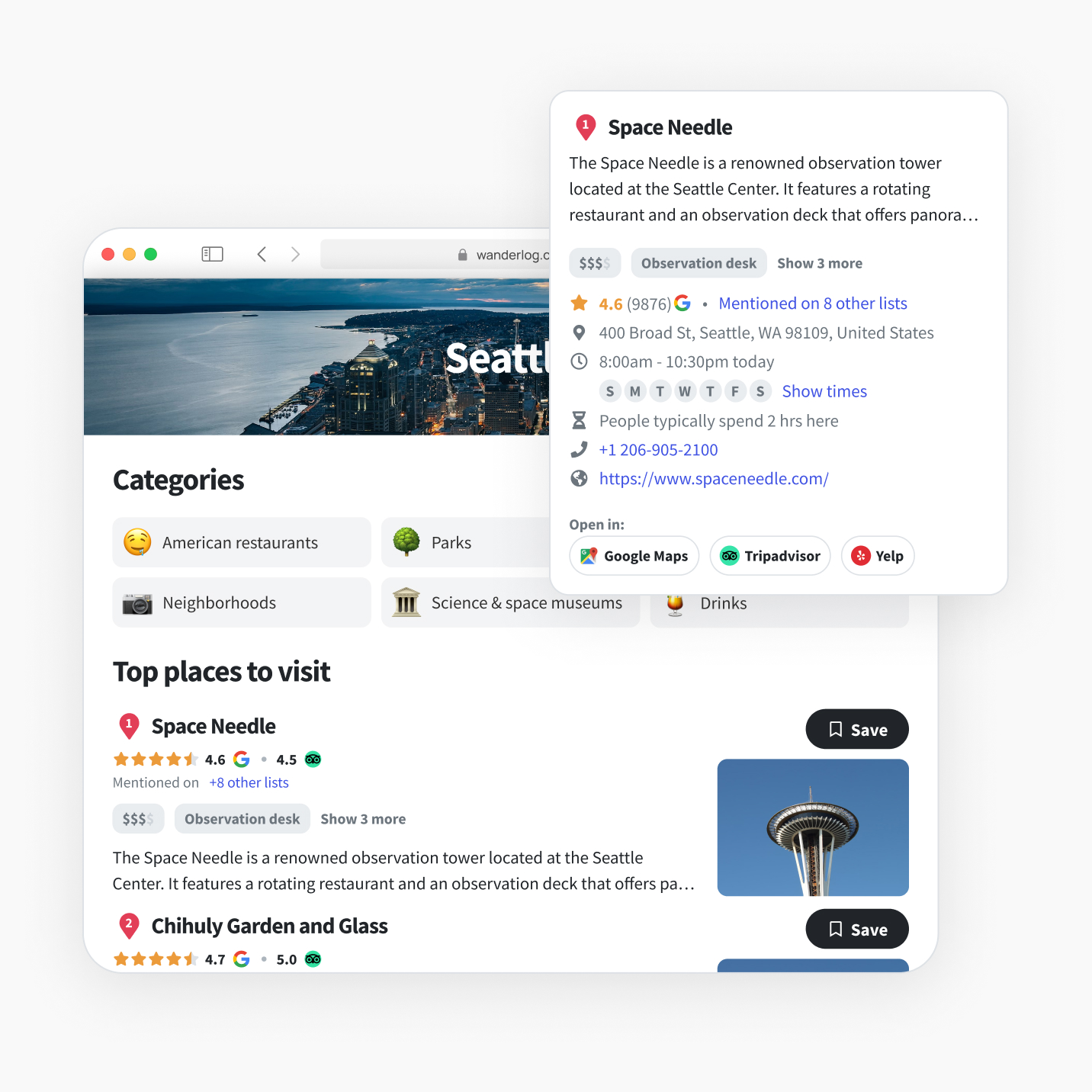
See top attractions and restaurants from the entire web
Get recommended the top places to visit and the best restaurants. Get ratings for top attractions, check their opening hours, and access links to official websites. We’ve gathered the top attractions from across the web in one place so you can see what are the consensus picks.
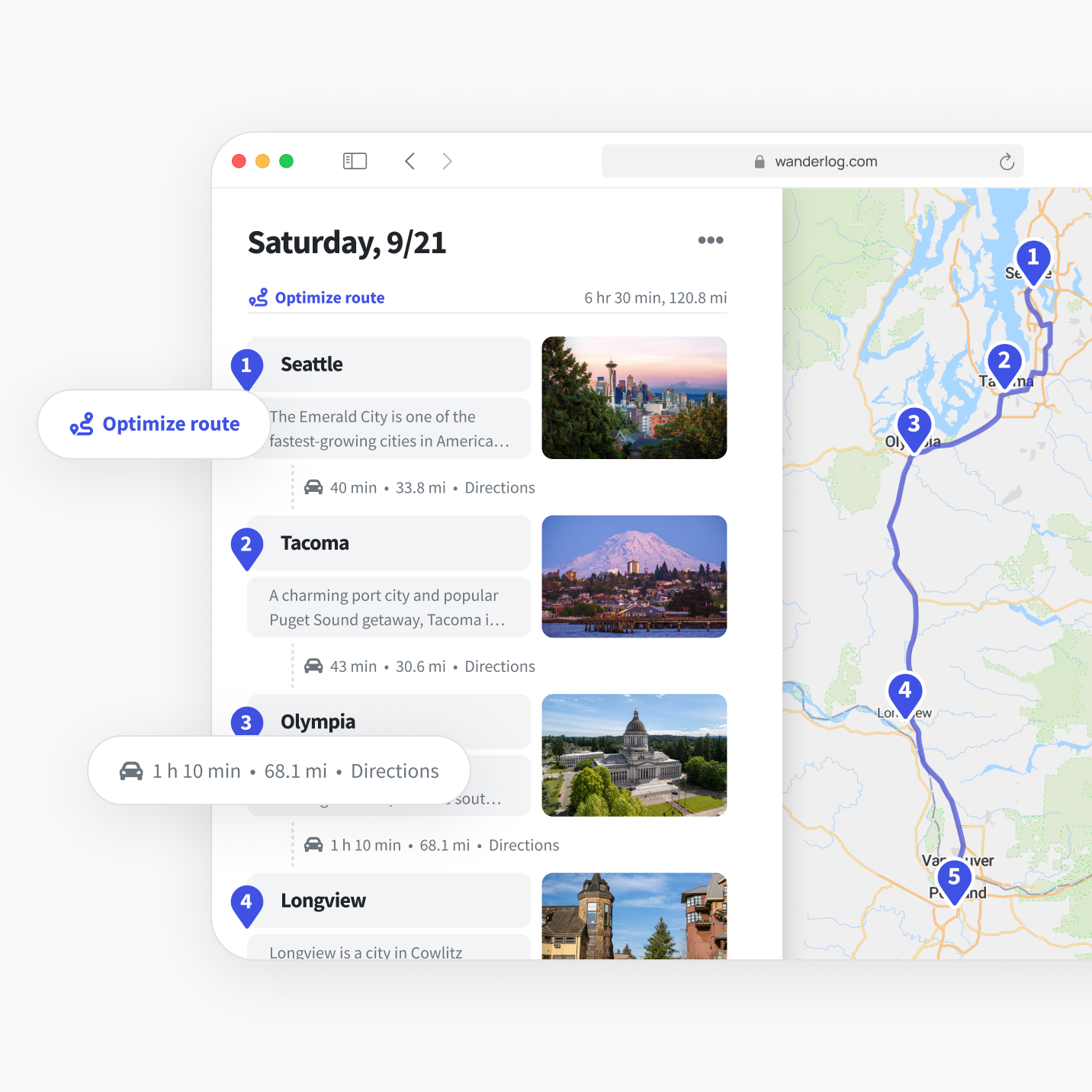
Plan road trips and hit the road
Create a detailed itinerary for your road trip. Add all your stops, check distances and time between each location. See lists of best stops on your route between cities. We optimize your route to save gas and ensure a smooth journey.
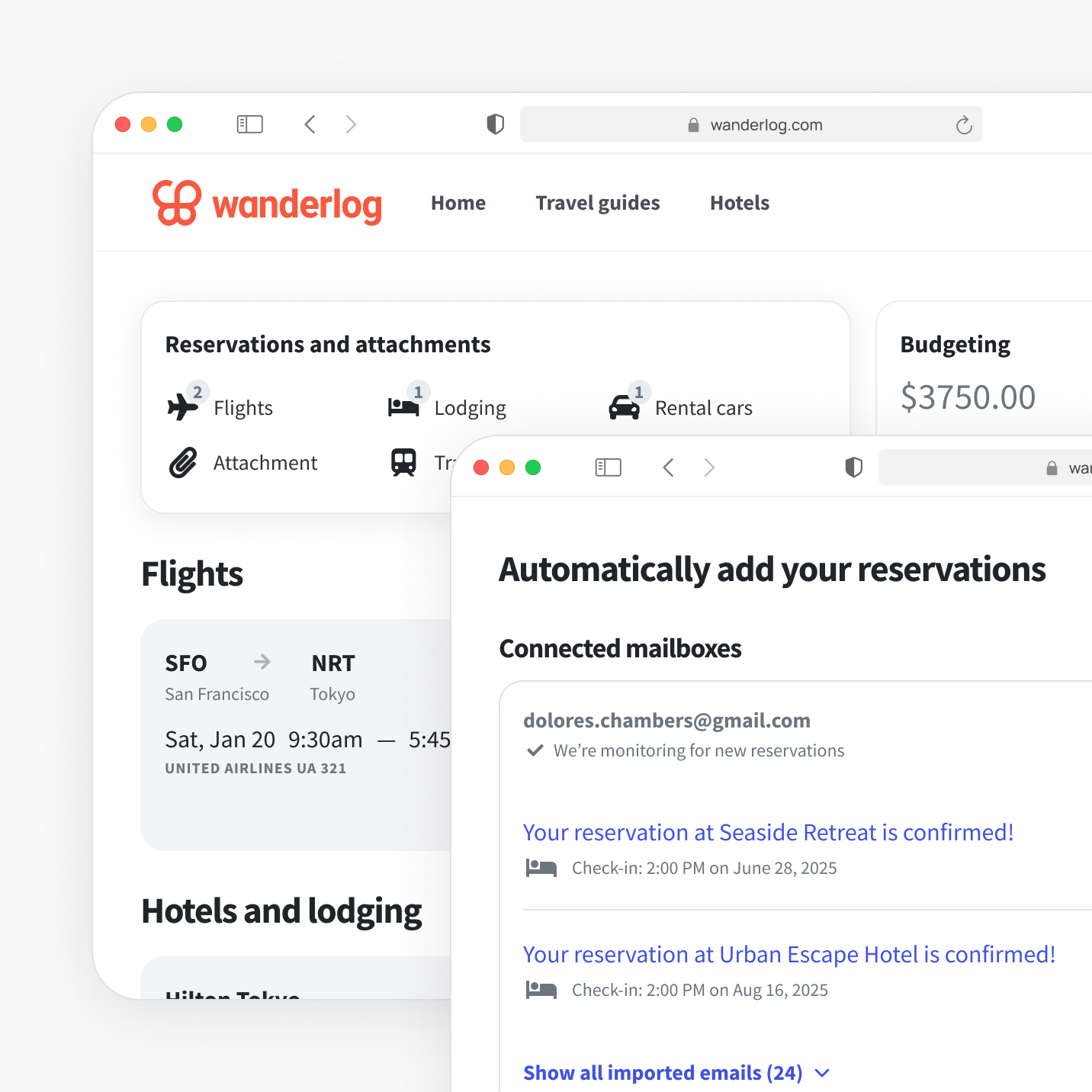
Manage your reservations with ease
See your reservations, attachments, and confirmation emails in one place without having to search for them. Forward your reservation emails directly to Wanderlog. Prefer it automatic? Connect your Gmail to automatically scan and import your hotel, flight, and other reservation details. We organize all your bookings in one place.

Pack and budget efficiently
Keep track of your budget and split costs with your trip mates. View expense breakdowns. Use our preset packing lists or create your own. Customize to-do lists, shopping lists, and more to ensure you bring everything you need on your trip.
Find your next adventure
Browse through itineraries and guides crafted by fellow travelers. Get inspired by real experiences and detailed plans for your next adventure.

Explore hundreds of places to visit for every corner of the world

Recommended by the press
Leading companies and media outlets are talking about Wanderlog. Discover why we're their top choice for travel planning.

Maximize your trip planning with Pro
Experience the full potential of Wanderlog with a Pro subscription. Enjoy enhanced features and streamlined planning.
What travelers are raving about
Over 1 million people have already tried Wanderlog and loved its easy trip planning features.
Planning your trip by having all the attractions already plugged into a map makes trip planning so much easier.
I have used several trip planning apps. This one by far is the best. The interaction between goggle maps makes the planning so much easier. Adding an adventure not in the app is also easy. Love the connection to Trip Advisor also. Everything is connected including booking a stay. Easy to use on phone, tablets and computer! Well thought through development.
I'm a rather extensive planner when I take trips so this was great. I liked how it auto-filled all of my travel information from my email account.
This is everything I needed in a trip-planning app. Everything is in one place - lodging, restaurants, destinations. I can put notes to write out little schedule details like when I plan to put my son down for a nap. Each destination you set up automatically puts in a link to that place's website, their hours of operation, travel distance from you place of lodging and more. The app is easy to use and so so helpful.
So much easier to visualize and plan a road trip to my favourite rock climbing destinations and explore the area around.
I absolutely love this app!!! I would recommend to anyone who is seriously planning a trip. It will take you through there entire process with ease and all the features you would ever need. The pro version has some features that would be nice to have, especially during the trip itself, but none of it is absolutely necessary. My only criticism is of the pro payment options. You can only buy an annual subscription, and no monthly options exist. Even a 3 month/semi annual sub would be nice.
It left me speechless that I can add places to my trip and they get automatically populated with a featured pic and description from the web.
I’ve been dreaming of a tool like this for years and finally it’s here! Wanderlog is my new go-to tool after decades of professional travel.
I really like how user friendly it is and the auto-save. I also enjoy being able to look at trips that others have planned for inspiration.
Absolutely love this app! It is so helpful when planning my trips. I especially love The optimize route option. When I have all my information in place like my starting point and my ending point it is fabulous! I found it was worth it for me to buy the subscription to the app to use this feature. I especially love how it will suggest things to do if you don't have any plans. I do wish it had a biking option for travel between points of interest. But other than that I love the app!
Very intuitive and simple while still providing a bunch of features, like photos on the destinations, descriptions and suggestions for nearby places to visit.
Yesterday I walked my kids through the vacation timeline that I've built so far and their excitement levels went way up!
Create your ultimate travel itinerary

Join Wanderlog
Plan your itinerary, find lodging, and import reservations—all in one app.
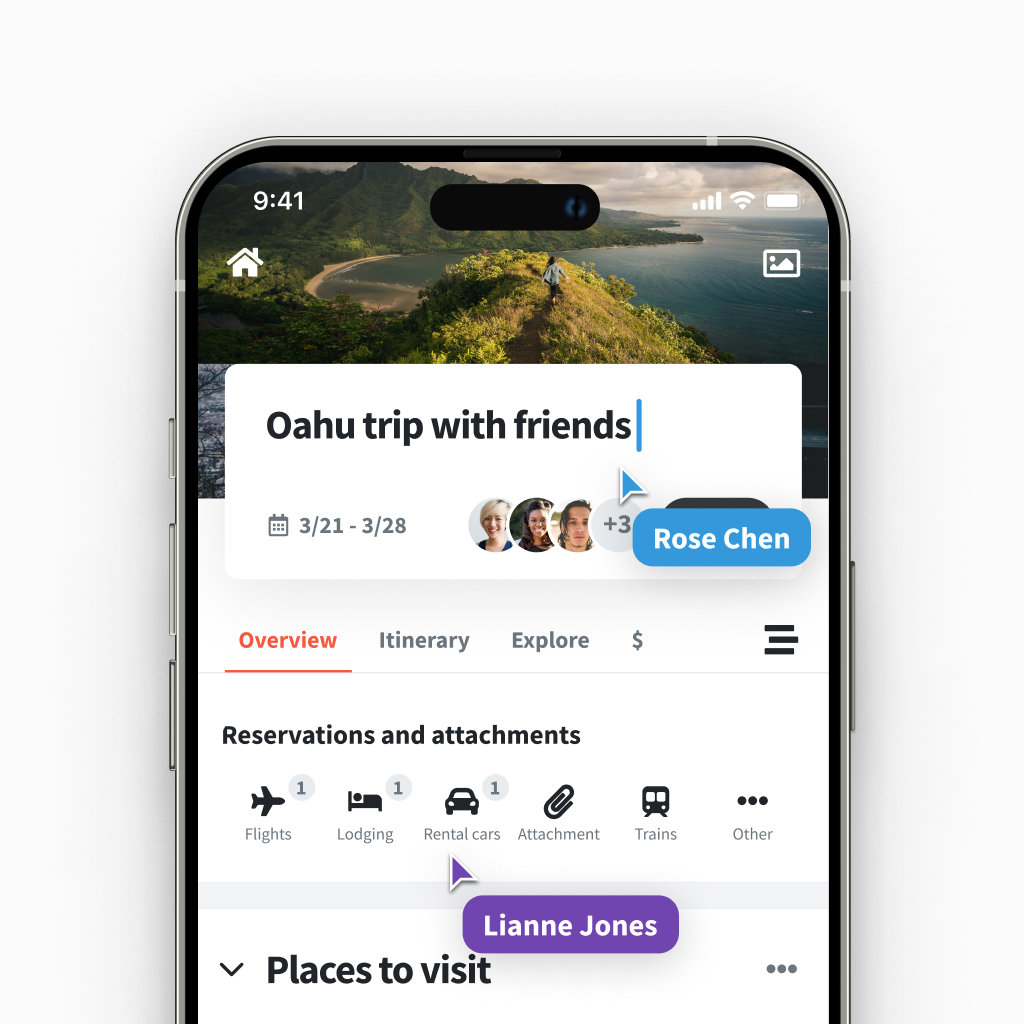
Plan your itinerary, find lodging, and import reservations — all in one app.
Top 20 Cities
New York City
Rio de Janeiro
Buenos Aires
San Francisco
Top 20 parks & nature
Banff National Park
Grand Canyon National Park
Yellowstone National Park
Yosemite National Park
Arenal Volcano National Park
Jasper National Park
Table Mountain National Park
Parque Nacional del Este
Zion National Park
Peak District National Park
Death Valley National Park
Snowdonia National Park
Great Smoky Mountains National Park
New Forest National Park Hampshire
Bryce Canyon National Park
Plitvice Lakes National Park
Dartmoor National Park
Chapada dos Veadeiros National Park
Haleakala National Park
Hawaii Volcanoes National Park
Top 20 attractions
Anne Frank House
Tower of London
Saint Mark's Basilica
Ryman Auditorium
Fenway Park
The National WWII Museum
Space Needle
Gardens by the Bay
Denver Botanic Gardens
Barton Springs Municipal Pool
Little Havana
Edinburgh Castle
Sydney Opera House
St. Stephen's Basilica
Brandenburg Gate
My itinerary
This is a free demo version of our mapping software.
Create an account to save your current itinerary and get access to all our features.
Otherwise your data will be automatically deleted after one week.
- © Roadtrippers
- © Mapbox
- © OpenStreetMap
- Improve this map
You are using an outdated browser. Please upgrade your browser to view this site.

Create Your Free Travel Map
With minimal effort you'll have a beautiful map of your travels to share with friends and family.
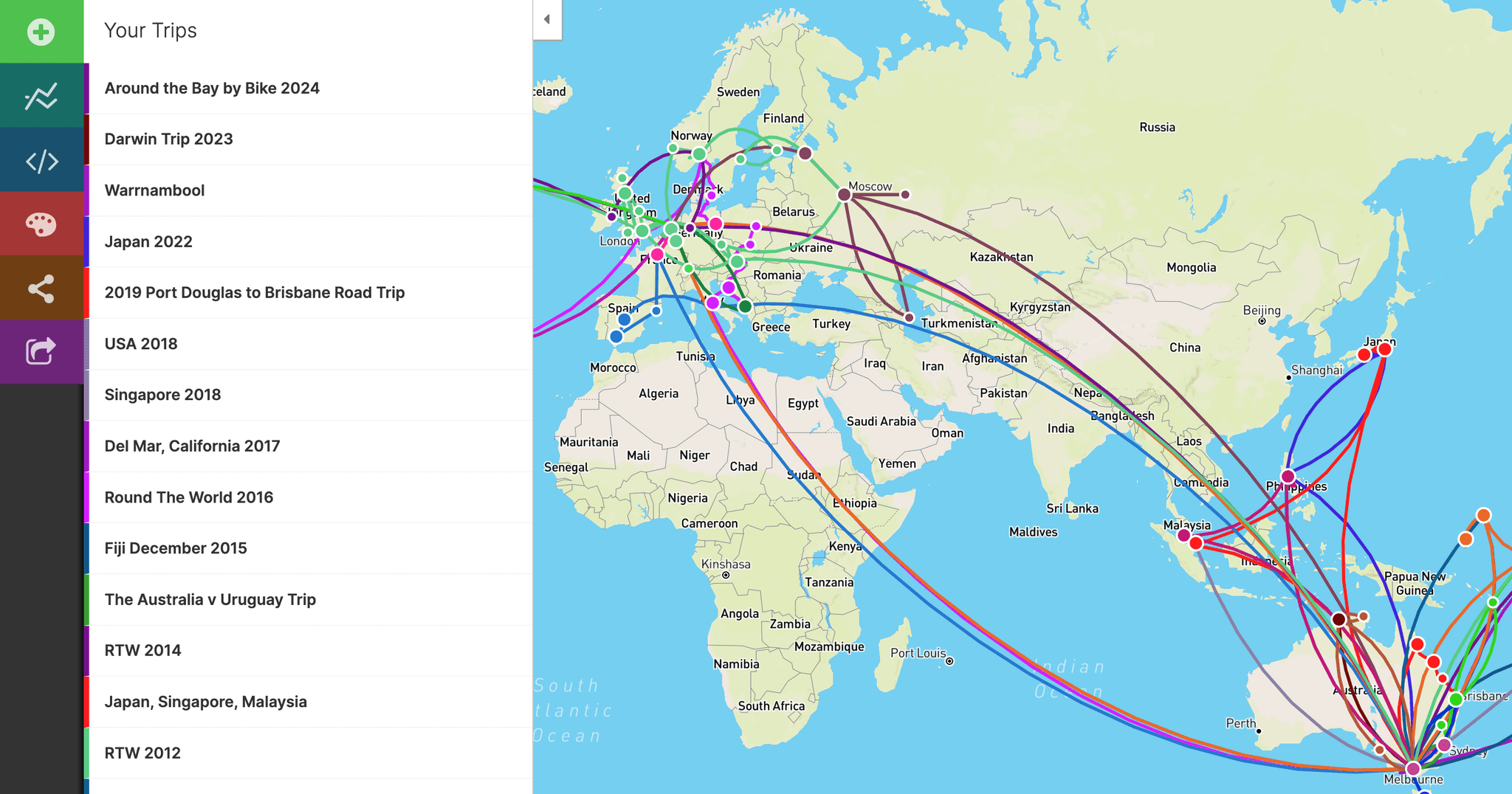
Map and visualise your trips. It's fast, simple, fun and free
- 📅 Plan upcoming trips and map previous travels
- ✍🏽 Tell a rich story of your travels with linked photos, notes and blog entries
- </> Embed your trip map on your own blog
- 🗺️ Save your map as a high resolution image
- 🧭 Draw custom routes between your trip stops
- 🚀 Unlimited trips on one map
- 📈 Discover just how much travelling you've done on your travel stats page
- 🔖 Bookmark websites to your trip plan
See how easy it is to make a trip map in this video
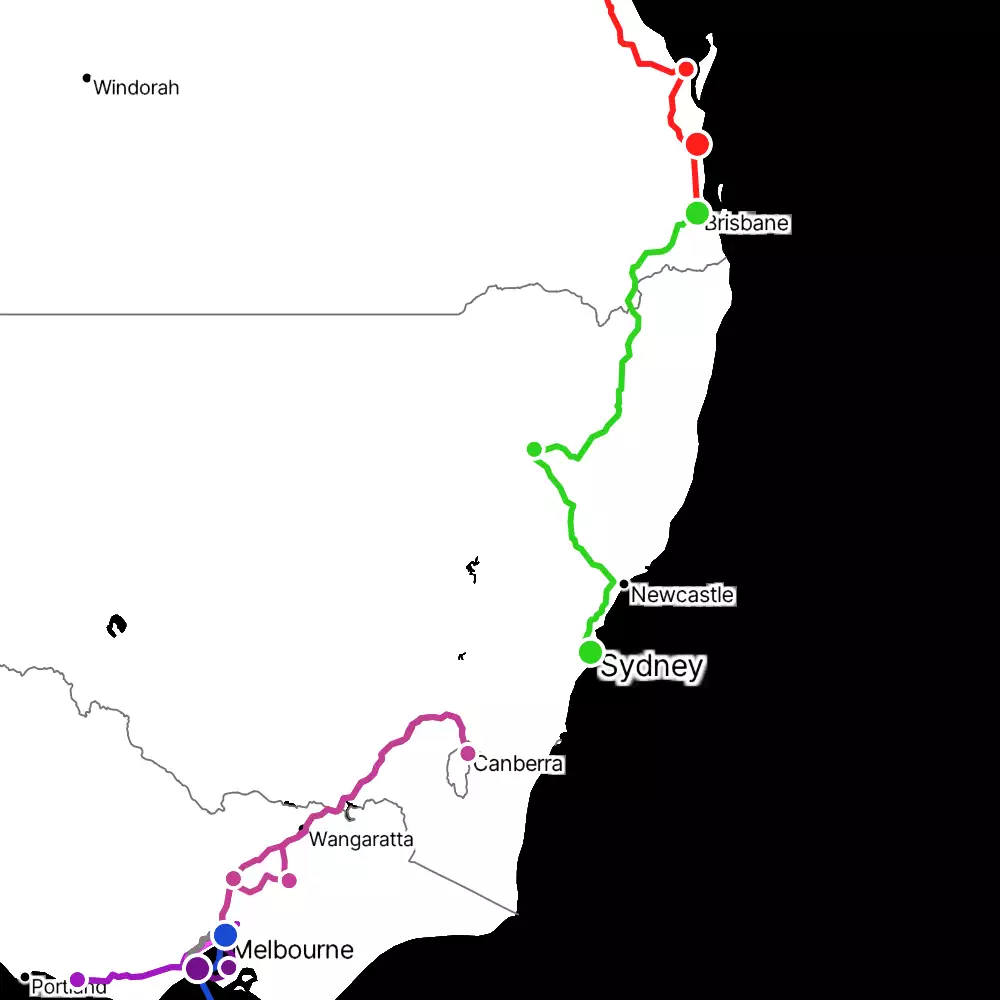
Choose a map style to suit you
We offer a variety of different map styles to choose from as well as customisation options that will help you get the map looking just the way you want it to.
Clarify your travel plans with an itinerary map
Our free travel mapping tool can be a great resource when you are planning your trips. If you are travelling to multiple cities and want to get an idea of which itineraries are going to be the most efficient, just map all your stops out and see what the route looks like. After figuring out the route, you can add notes and bookmarks to each stop to keep all your ideas in one place.
- Exploring the Silk Road
- Skiing in the alps
- Beach days in Thailand
- Frolicking around France
Map out all your old trips
We spent a lot of time making this as easy to use as possible, especially when mapping out lots of stops and lots of trips. You can very quickly add new stops to trips with as much or as little detail as you like. Mapping out all your travels can be a huge amount of fun and a great way to relive memories.
The total distance travelled is roughly equivalent to
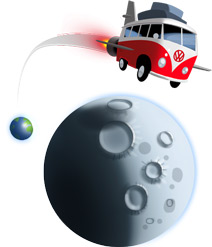
1.3 trips to the moon!
Show off your travel stats
After you've mapped out your trips, you'll be able to view your very own travel stats page which will show you how many kilometres you travelled, which countries you visited, which modes of transport you used and more. It's a great visual summary of your life's journeys
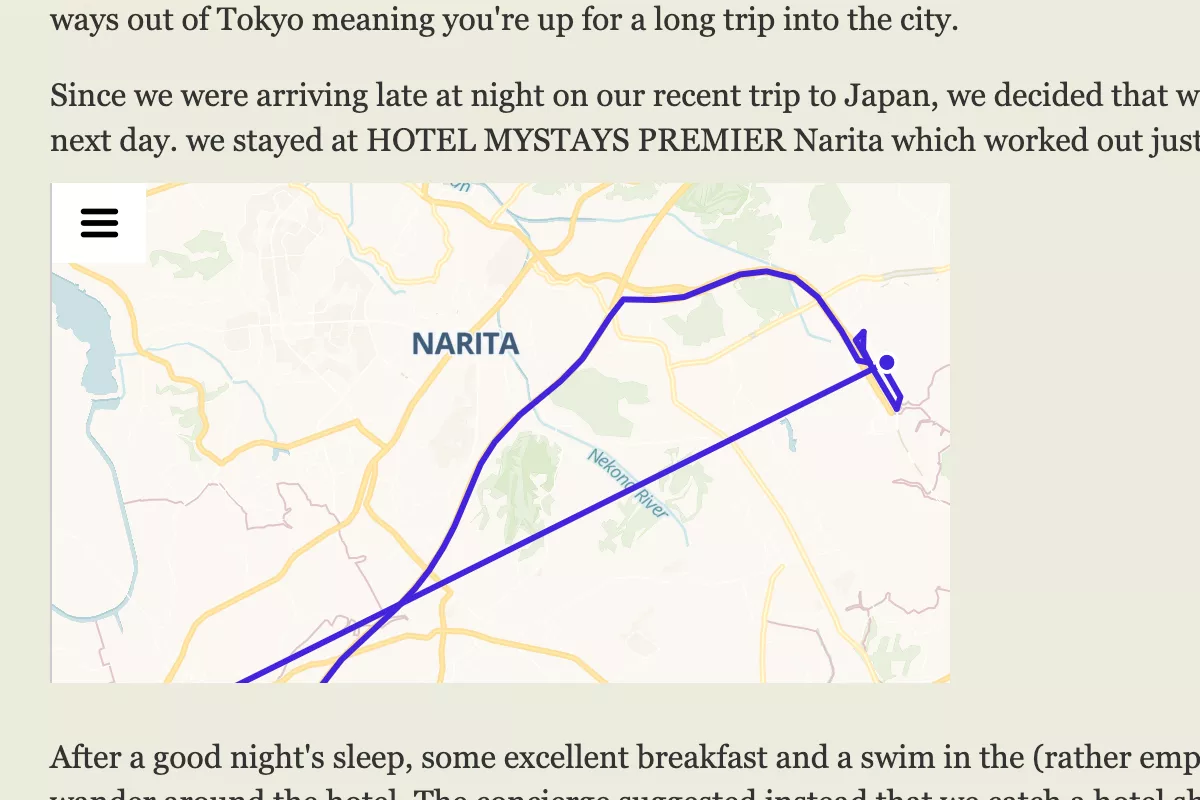
Embed your map on your blog
If you are just looking for a simple route map to add to a blog post you're creating then this will do that for you nicely. You can either use the standard embed code or customise the map tiles to various other looks as well. A beautiful interactive travel map will ensure your blog entry stands out from the crowd.
Show me the maps!
You want to interact with some maps?
Below are some maps created by members of the Travellerspoint community. Click on any of the maps below to see a fully interactive version.
🏞️ Add photos to your trips
🎁 a generous free offering, 🤝 a great community, we've been doing this mapping thing for a while.
Millions of trips mapped
It's so easy to create trips on Travellerspoint that people just keep creating them.
Frequently asked questions
What are some typical users of this mapping platform.
- People wanting to map out an upcoming trip
- People wanting to map out all their previous travels
- Travel agents wanting to create a trip map for their clients
- People wanting to explore different destinations for an upcoming trip
What tool do you recommend people use to map out their life's travels?
How many stops can i add to a trip, is there a limit to how many trips i can map, what mapping platform do you use, how can i use the maps i've created on travellerspoint, can i save the map as an image, how long has travellerspoint been around for, where do you get the travel information from that's used in the map, can i turn off the guide content that's included, can i get turn by turn directions from this tool, can i create custom routes, looking for a step by step guide.
This How To Create a Map of Your Travels guide will take you through the process of creating your travel map in a series of easy to follow steps.
Need more convincing?
You can do a lot more than just map your travels on Travellerspoint. Creating an account is totally free and gives you acess to other handy features like:
- ✍🏽 A blogging platform where you can write about your travels
- 💬 An active travel forum to ask for advice from other travellers
- 📷 Unlimited photo uploads. We also feature our members' best travel photos
Customer Journey Maps: How to Create Really Good Ones [Examples + Template]
Updated: April 17, 2024
Published: May 04, 2023
Did you know 70% of online shoppers abandoned their carts in 2022? Why would someone spend time adding products to their cart just to fall off the customer journey map at the last second?
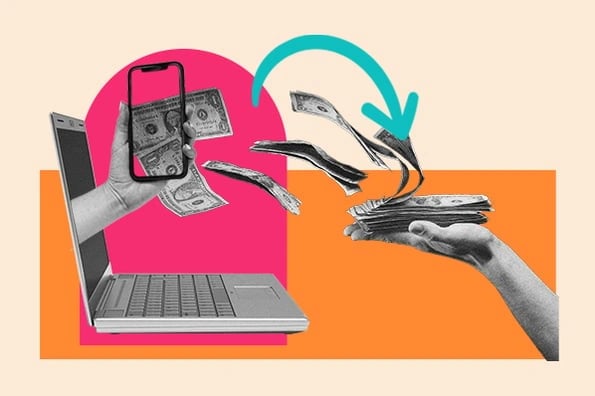
The thing is — understanding your customer base can be very challenging. Even when you think you’ve got a good read on them, the journey from awareness to purchase for each customer will always be unpredictable, at least to some level.

Download Now
While it isn’t possible to predict every experience with 100% accuracy, customer journey mapping is a convenient tool for keeping track of critical milestones that every customer hits. In this post, I’ll explain everything you need to know about customer journey mapping — what it is, how to create one, and best practices.
Table of Contents
What is the customer journey?
What is a customer journey map, benefits of customer journey mapping, customer journey stages.
- What’s included in a customer journey map?
The Customer Journey Mapping Process
Steps for creating a customer journey map.
- Types of Customer Journey Maps
Customer Journey Mapping Best Practices
- Customer Journey Design
- Customer Journey Map Examples
Free Customer Journey Map Templates
.webp)
Free Customer Journey Template
Outline your company's customer journey and experience with these 7 free templates.
- Buyer's Journey Template
- Future State Template
- Day-in-the-Life Template
Download Free
All fields are required.
You're all set!
Click this link to access this resource at any time.
The customer journey is the series of interactions a customer has with a brand, product, or business as they become aware of a pain point and make a purchase decision. While the buyer’s journey refers to the general process of arriving at a purchase, the customer journey refers to a buyer's purchasing experience with a specific company or service.
Customer Journey vs. Buyer Journey
Many businesses that I’ve worked with were confused about the differences between the customer’s journey and the buyer’s journey. The buyer’s journey is the entire buying experience from pre-purchase to post-purchase. It covers the path from customer awareness to becoming a product or service user.
In other words, buyers don’t wake up and decide to buy on a whim. They go through a process of considering, evaluating, and purchasing a new product or service.
The customer journey refers to your brand’s place within the buyer’s journey. These are the customer touchpoints where you will meet your customers as they go through the stages of the buyer’s journey. When you create a customer journey map, you’re taking control of every touchpoint at every stage of the journey instead of leaving it up to chance.
For example, at HubSpot, our customer’s journey is divided into three stages — pre-purchase/sales, onboarding/migration, and normal use/renewal.

Don't forget to share this post!
Related articles.
![mapping your journey Customer Journey Maps: How to Create Really Good Ones [Examples + Template]](https://www.hubspot.com/hubfs/customer-journey-map_13.webp)
How to Maximize Your Success with a Customer Experience Platform
![mapping your journey How to Measure Customer Experience: 8 Metrics 1000+ Service Reps Prioritize [+Data]](https://www.hubspot.com/hubfs/customerexperiencemetrics.webp)
How to Measure Customer Experience: 8 Metrics 1000+ Service Reps Prioritize [+Data]
![mapping your journey How AI Image Misuse Made a World of Miscommunication [Willy's Chocolate Experience]](https://www.hubspot.com/hubfs/ai%20image%20misuse%20the%20willy%20wonka%20experience%20%281%29.png)
How AI Image Misuse Made a World of Miscommunication [Willy's Chocolate Experience]

7 Ways to Delight Your Customers This Holiday Season

14 Customer Experience Fails that Companies Can Learn From
![mapping your journey How Customer Experience Has Evolved Over the Last Decade [+ 2024 Trends]](https://www.hubspot.com/hubfs/future-of-customer-experience.png)
How Customer Experience Has Evolved Over the Last Decade [+ 2024 Trends]
![mapping your journey Memorable Examples of AR in Customer Experience [+Tips for Implementing the Technology]](https://www.hubspot.com/hubfs/augmented%20reality%20customer%20experience.png)
Memorable Examples of AR in Customer Experience [+Tips for Implementing the Technology]

Digital Customer Experience: The Ultimate Guide for 2024
![mapping your journey How to Implement a Hybrid Customer Service Strategy That Works [Expert Tips]](https://www.hubspot.com/hubfs/hybrid%20customer%20service_featured.png)
How to Implement a Hybrid Customer Service Strategy That Works [Expert Tips]
Outline your company's customer journey and experience with these 7 free customer journey map templates.
Service Hub provides everything you need to delight and retain customers while supporting the success of your whole front office
Are you an agency specialized in UX, digital marketing, or growth? Join our Partner Program
Learn / Guides / Customer journey mapping (CJM) guide
Back to guides
Customer journey mapping in 2 and 1/2 days
How to create a customer journey map that improves customer success.
Last updated
Reading time.
There’s a common saying that you can’t understand someone until you’ve walked a mile in their shoes—and that’s exactly what customer journey maps do: they help you put yourself in different customers’ shoes and understand your business from their point of view.
Why should you do it? How should you do it? Find the answers in this guide, which we wrote after interviewing 10+ customer journey experts who shared methodologies, dos and don’ts, and pro tips with us.
On this page:
What is a customer journey map?
How to create a customer journey map in 2 and ½ working days
4 benefits of customer journey mapping for your business
In later chapters, we dive deeper into customer journey analytics, workshops, and real-life examples.
Start mapping your customer journey
Hotjar lets you experience the customer journey through their eyes, so you can visualize what’s working and what needs improvement.
A customer journey map (CJM) is a visual representation of how customers interact with and experience your website, products, or business across multiple touchpoints.
By visualizing the actions, thoughts, and emotions your customers experience, a customer journey map helps you better understand them and identify the pain points they encounter. This is essential if you want to implement informed, customer-focused optimizations on your site.

Mapping the customer journey: narrow vs. wide focus
A customer journey map can have a very narrow focus and only look at a few, specific steps of the customer experience or buyer’s journey (for example, a product-to-purchase flow on a website), or it can take into account all the touchpoints, online and offline, someone goes through before and after doing business with you.
Each type of customer journey map has its advantages:
A CJM with a narrow focus allows you to zero in on an issue and effectively problem-solve
A CJM with a wide focus gives you a broader, holistic understanding of how customers experience your business

Regardless of their focus, the best customer journey maps have one thing in common: they are created with real customer data that you collect and analyze . The insights are usually organized into a map (hence the name), diagram, or flowchart during a group workshop, which is later shared across the entire business so everyone gets a clear and comprehensive overview of a customer’s journey.
How to create your first customer journey map in 2 and ½ working days
The process of creating a customer journey map can be as long or short as you need. Depending on how many people and stakeholders you involve, how much data you collect and analyze, and how many touchpoints there are across the business, you could be looking at days or even weeks and months of work.
If you’re new to customer journey mapping, start from a narrower scope before moving on to mapping every single customer touchpoint .
Here’s our beginner customer journey mapping framework to help you create your first complete map in 2 and ½ working days:
Day 1: preliminary customer journey mapping work
Day 2: prep and run your customer journey mapping workshop.
Final ½ day: wrap up and share your results
Download your free customer journey map checklist (as seen below), to mark off your tasks as you complete them.

On your first day, you have three essential tasks:
Define the goal and scope of your CJM
Collect customer data and insights
Invite your team to a customer journey mapping workshop
Step 1: define the goal and scope of your CJM
Clarifying what part(s) of the journey you're looking at, and why, helps you stay focused throughout the mapping process.
If this is your first map, start from a known issue or problematic area of your website. Keep the scope small, and focus on anything you can break down into four or five steps. For example:
If you have a high drop-off on a pricing page with five calls-to-action, each of which takes users to a different page, that’s enough for a mappable journey
If your purchase flow is made of five self-contained pages, each of which loses you potential customers, that’s a good candidate for mapping
✅ The output: a one- or two-sentence description of what your map will cover, and why, you can use whenever you need to explain what the process is about. For example: this map looks at the purchase flow on our website, and helps us understand how customers go through each step and the issues or obstacles they encounter. The map starts after users click ‘proceed to checkout’ and ends when they reach the 'Thank You' page .
Step 2: collect customer data and insights
Once you identify your goal and scope, the bulk of your first day should be spent collecting data and insights you’ll analyze as part of your mapping process. Because your map is narrow in focus, don’t get distracted by wide-scale demographics or data points that are interesting and nice to know, but ultimately irrelevant.
Get your hands on as much of the following information as you can:
Metrics from traditional analytics tools (such as Google Analytics) that give you insight into what’s happening, across the pages and stages your customer journey map covers

Data from analyzing your conversion ‘funnels’ , which record how many visitors end up at each stage of the user journey, so you can optimize those steps for potential customers and increase conversions
Behavior analytics data (from platforms like Hotjar) that show you how people interact with your site. For example, heatmaps give you an aggregate view of how users click, move and scroll on specific pages, and session recordings capture a user’s entire journey as they navigate your site
Quantitative and qualitative answers to on-site surveys relevant to the pages you’re going to investigate, as customer feedback will ultimately guide your roadmap of changes to make to improve the journey

Any demographic information about existing user and customer personas that helps you map the journey from the perspective of a real type of customer, rather than that of any hypothetical visitor, ensuring the journey makes sense for your target audience
Any relevant data from customer service chat logs, emails, or even anecdotal information from support, success, and sales teams about the issues customers usually experience
✅ The output: quantitative and qualitative data about your customers' interactions and their experiences across various touchpoints. For example, you’ll know how many people drop off at each individual stage, which page elements they interact with or ignore, and what stops them from converting.
💡Pro tip: as you read this guide, you may not yet have most of this data, particularly when it comes to heatmaps, recordings, and survey results. That’s ok.
Unless you’re running your CJM workshop in the next 12 hours, you have enough time to set up Hotjar on your website and start collecting insights right now. The platform helps you:
Learn where and why users drop off with Funnels
Visualize interactions on key pages with Heatmaps
Capture visitor sessions across your website with Recordings
Run on-site polls with Surveys
When the time comes for you to start your customer journey mapping process, this data will be invaluable.
Step 3: invite your team to a customer journey mapping workshop
In our experience, the most effective way to get buy-in is not to try and convince people after things are done—include them in the process from the start. So while you can easily create a customer journey map on your own, it won’t be nearly as powerful as one you create with team members from different areas of expertise .
For example, if you’re looking at the purchase flow, you need to work with:
Someone from the UX team, who knows about the usability of the flow and can advocate for design changes
Someone from dev or engineering, who knows how things work in the back end, and will be able to push forward any changes that result from the map
Someone from success or support, who has first-hand experience talking to customers and resolving any issues they experience
✅ The output: you’ve set a date, booked a meeting space, and invited a group of four to six participants to your customer journey mapping workshop.
💡Pro tip: for your first map, stay small. Keep it limited to four to six people, and no main stakeholders . This may be unpopular advice, especially since many guides out there mention the importance of having stakeholders present from the start.
However, when you’re not yet very familiar with the process, including too many people early on can discourage them from re-investing their time into future CJM tasks. At this stage, it’s more helpful to brainstorm with a small team, get feedback on how to improve, and iterate a few times. Once you have a firm handle on the process, then start looping in your stakeholders.
On workshop day, you’ll spend half your time prepping and the other half running the actual session.
Step 1: prepare all your materials
To run a smooth workshop, ensure you do the following:
Bring stationery: for an interactive workshop, you’ll need basic materials such as pens, different colored Post-its, masking tape, and large sheets of paper to hang on the wall
Collect and print out the data: use the data you collected on Day 1. It’s good to have digital copies on a laptop or tablet for everybody to access, but print-outs could be the better alternative as people can take notes and scribble on them.
Print out an empathy map canvas for each participant: start the workshop with an empathy mapping exercise (more on this in Step 2). For this, hand each participant an empty empathy map canvas you can recreate from the template below.

Set up a customer journey map template on the wall: use a large sheet of paper to create a grid you'll stick to the wall and fill in as part of the workshop. On the horizontal axis, write the customer journey steps you identified during your Day 1 prep work; on the vertical axis, list the themes you want to analyze for each step. For example:
Actions your customers take
Questions they might have
Happy moments they experience
Pain points they experience
Tech limits they might encounter
Opportunities that arise

Step 2: run the workshop
This is the most interactive (and fun) part of the process. Follow the framework below to go from zero to a completed draft of a map in just under 2 hours .
Introduction [🕒 5–10 min]
Introduce yourself and your participants to one another
Using the one-two sentence description you defined on Day 1, explain the goal and scope of the workshop and the activities it will involve
Offer a quick summary of the customer persona you’ll be referring to throughout the session
Empathy mapping exercise [🕒 30 min]
Using the personas and data available, have each team member map their observations onto sticky notes and paste them on the relevant section of the empathy mapping canvas
Have all participants take turns presenting their empathy map
Facilitate group discussions where interesting points of agreement or disagreement appear
Customer journey mapping [🕒 60 min]
Using Post-its, ask each participant to fill in parts of the map grid with available information. Start by filling in the first row together, so everybody understands the process, then do each row individually (15–20 min). At the end of the process, you should have something like this:

Looking at the completed map, encourage your team to discuss and align on core observations (and take notes: they’ll come in handy on your final half day). At this point, customer pain points and opportunities should become evident for everybody involved. Having a cross-functional team means people will naturally start discussing what can, or cannot, immediately be done to address them (35–40 min).
Wrap up [🕒 5 min]
Congratulations! Your first customer journey map is complete. Finish the session by thanking your participants and letting them know the next steps.
Final half-day: wrap up and share
Once you’ve gone through the entire customer journey mapping workshop, the number one thing you want to avoid is for all this effort to go to waste. Instead of leaving the map hanging on the wall (or worse: taking it down, folding it, and forgetting about it), the final step is to wrap the process up and communicate the results to the larger team.
Digitize the map so you can easily update and share it with team members: it may be tempting to use dedicated software or invest time into a beautiful design, but for the first few iterations, it’s enough to add the map to your team’s existing workflows (for example, our team digitized our map and added it straight into Jira, where it’s easily accessible)
Offer a quick write-up or a 5-minute video introduction of the activity: re-use the description you came up with on Day 1, including who was involved and the top three outcomes
Clearly state the follow-up actions: if you’ve found obvious issues that need fixing, that’s a likely next step. If you’ve identified opportunities for change and improvement, you may want to validate these findings via customer interviews and usability testing.
4 benefits of customer journey mapping
In 2023, it’s almost a given that great customer experience (CX) provides any business or ecommerce site with a competitive advantage. But just how you’re supposed to deliver on the concept and create wow-worthy experiences is often left unsaid, implied, or glossed over.
Customer journey maps help you find answers to this ‘How?’ question, enabling you to:
Visualize customer pain points, motivations, and drivers
Create cross-team alignment around the business
Remove internal silos and clarify areas of ownership
Make improvements and convert more visitors into customers
We’ve done a lot of customer journey work here at Hotjar, so we know that the above is true—but don’t just take our word for it: all the people we interviewed for this guide confirmed the benefits of journey mapping. Let’s take a look at what they shared.
1. Visualize customer pain points, motivations, and drivers
It’s one thing to present your entire team with charts, graphs, and trends about your customers, and quite another to put the same team in front of ONE map that highlights what customers think, want, and do at each step of their journey.
I did my first customer journey map at MADE.COM within the first three months of joining the company. I was trying to map the journey to understand where the pain points were.
For example, people who want to buy a sofa from us will be coming back to the site 8+ times over several weeks before making a purchase. In that time, they may also visit a showroom. So now I look at that journey, at a customer’s motivation for going to the website versus a physical store, and I need to make sure that the experience in the showroom complements what they're doing on-site, and vice-versa, and that it all kind of comes together.
The map helps in seeing that journey progress right up to the time someone becomes a customer. And it also continues after: we see the next touchpoints and how we're looking to retain them as a customer, so that they come back and purchase again.
A customer journey map is particularly powerful when you incorporate empathy into it, bringing to light specific emotions that customers experience throughout the journey.

2. Create cross-team alignment around the business
The best, most effective customer journey maps are not the solo project of the user experience (UX) or marketing team (though they may originate there).
Customer journey maps are a quick, easy, and powerful way to help everybody in your business get a clearer understanding of how things work from a customers’ perspective and what the customers’ needs are—which is the first step in your quest towards creating a better experience for them.
Our first goal for preparing a customer journey map was to improve understanding customers across the company, so that every employee could understand the entire process our clients go through.
For example, people from the shipping department didn't know how the process works online; people from marketing didn't know how customers behave after filing a complaint. Everything seems obvious, but when we shared these details, we saw that a lot of people didn't know how the company itself works—this map made us realize that there were still gaps we needed to fill.

If we discover that customers have a pain point in a specific section of the map, different teams can look at the same section from several angles; customer support can communicate why something is not possible, and engineering can explain why it’s going to take X amount of effort to get it done. Especially in cross-functional teams where we all come from really different disciplines, I find these maps to be an incredible way for us all to speak the same language.
3. Remove internal silos and clarify areas of ownership
As a company grows in size and complexity, the lines of ownership occasionally become blurry. Without clarity, a customer might get bounced like a ping pong ball across Sales, Success, and Support departments—not great for the seamless and frictionless customer experience we all want to offer.
A central source of ‘truth’ in the form of a customer journey map that everybody can refer to helps clarify areas of ownership and handover points.
We were growing as a team, and we realized we needed to operationalize a lot of the processes that, before then, had just been manually communicated. We did it through a customer journey map. Our goal was to better understand where these hand-off points were and how to create a more seamless experience for our customers, because they were kind of being punted from team to team, from person to person—and often, it was really hard to keep tabs on exactly where the customer was in that entire journey.
4. Make improvements and convert more visitors into customers
A customer journey map will take your team from 'It appears that 30% of people leave the website at this stage' to 'Wow, people are leaving because the info is incomplete and the links are broken.' Once everyone is aligned on the roadblocks that need to be addressed, changes that have a positive impact on the customer experience and customer satisfaction will happen faster.
The customer journey map brings it all together: it doesn't matter who you've got in the room. If you’re doing a proper journey map, they always get enlightened in terms of ‘Oh, my word. I did not know the customer's actually experiencing this.’ And when I walk out of the session, we have often solved issues in the business. Accountability and responsibilities have been assigned, and I find that it just works well.

Shaheema (right) working on a customer journey map
Collect the right data to create an effective customer journey map
The secret of getting value from customer journey mapping is not just building the map itself: it's taking action on your findings. Having a list of changes to prioritize means you can also measure their effect once implemented, and keep improving your customers' experience.
This all starts with collecting customer-centric data—the sooner you begin, the more information you’ll have when the time comes to make a decision.
Start mapping your customer journey today
Hotjar lets you experience your customer’s journey through their eyes, so you can visualize what’s working and what needs improvement.
FAQs about customer journey mapping
How do i create a customer journey map.
To create a useful customer journey map, you first need to define your objectives, buyer personas, and the goals of your customers (direct customer feedback and market research will help you here). Then, identify all the distinct touchpoints the customer has with your product or service in chronological order, and visualize the completion of these steps in a map format.
What are the benefits of customer journey mapping?
Customer journey mapping provides different teams in your company with a simple, easily understandable visualization that captures your customers’ perspective and needs, and the steps they’ll take to successfully use your product or service.
Consider customer journey mapping if you want to accomplish a specific objective (like testing a new product’s purchase flow) or work towards a much broader goal (like increasing overall customer retention or customer loyalty).
What is the difference between a customer journey map and an experience map?
The main difference between an experience map and a customer journey map is that customer journey maps are geared specifically toward business goals and the successful use of a product or service, while experience maps visualize an individual’s journey and experience through the completion of any task or goal that may not be related to business.
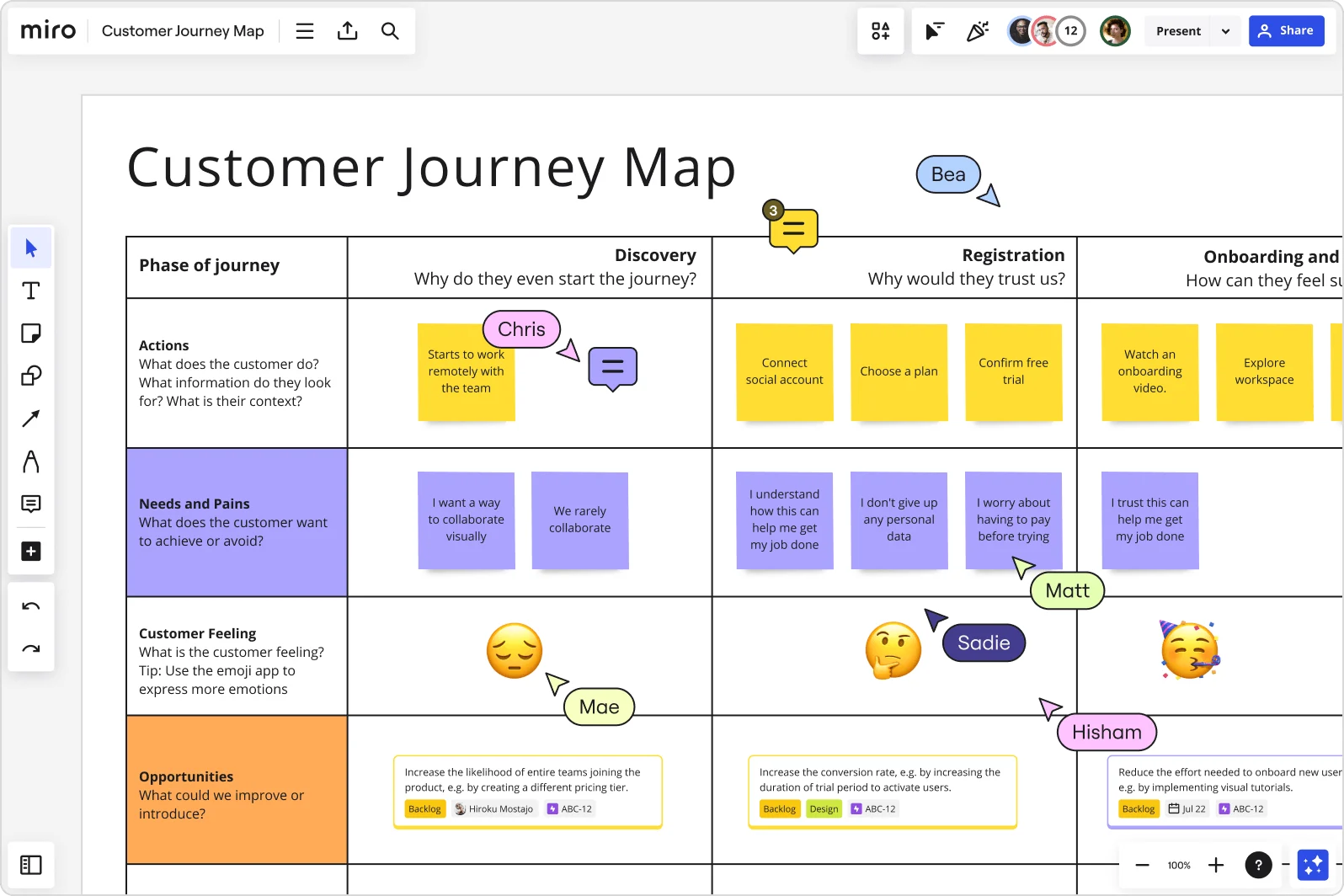
How to make a customer journey map?
Why make a customer journey map.
Customer journey mapping is a powerful tool for visualizing your customers' experience. It enables you to empathize with your customers and set them up for success. But for the uninitiated, customer journey mapping can seem intimidating, time-consuming, or even useless. We’re here to tell you it’s far from that. With the right guidance, you can use customer journey map tools to form a foundational part of your business.
Let’s be real: modern customers expect a guaranteed high-quality experience. According to a study conducted by customer strategist and researcher Esteban Kolsky, only 1 in 26 unhappy customers regularly complains – and the rest simply stop doing business with the company altogether. Ultimately, around 91% of unhappy customers will simply leave without a complaint. That means your business can be missing out on the valuable feedback you need to correct mistakes that are costing you customers.
This finding underlines just how crucial it is for companies to map their customer journeys. Simply put, by creating a CJM , you are likely to unearth issues you might not hear about directly from the customers themselves. That kind of information can be beneficial to your company’s bottom line. Let’s talk about how to make a customer journey map that’s valuable to your organization – and not a waste of time.
Before you get started
If you’re thinking about creating a customer journey map without a specific, measurable goal in mind ... stop. Back up and pause a minute. Consider the reason you need a CJM at all. You’re going to need to spend some time articulating the challenges your team faces, so you can more efficiently seek answers in your CJM.
CJMs are especially useful in scenarios like these:
You have a customer churn problem you’re looking to understand and solve.
You’re trying to understand the buying patterns of different personas.
Your company is shifting approaches (e.g. from a bottoms-up to top-down, inside-out to outside-in, etc.).
You’re about to release a new product or service.
You’re looking to assign team resources to specific touchpoints within the journey.
Write down the problem or reason you need a CJM first, then consider what kind of business goal you’re looking to achieve.
Customer journey maps are great for:
Identifying ways to engage or reach customers
Unearthing and addressing internal inefficiencies
Increasing conversions and ROI
We recommend making sure you’re setting measurable goals for your map before you get started. You can always adjust as you learn new things from your map, but it’s important to have an actual objective and KPI.
Common business KPIs to consider are:
Customer satisfaction scores
Retention or churn rates
Preliminary Customer Journey Mapping Work
Before you host a customer journey mapping workshop, it’s important to understand who needs to be involved, what tools you’ll be using to make your map, and what technology you’ll need to host your workshop. Here are a few important steps to take before making your customer journey map.
Map out your stakeholders
Your internal stakeholders are the people who will be impacted by the results of your customer journey map the most. Be sure to identify them before you get started, so you know who should be invited to your mapping workshop. Learn more in The Complete Stakeholder Mapping Guide .

Set up your CJM Canvas
Many teams prefer to use pen and paper to create their journey map, and remote teams need digital tools. Regardless of how you host your workshop, you’re going to need to digitize your map at some point to share it across your organization. Miro is a perfect visual canvas to use for your map – and a great tool when you don’t have the luxury of being in the same place as your team. Get started by opening up a board, and adding the templates you’ll need for your mapping exercise.
Now, with your digital canvas open, write down your goals and objectives on the board for the team to review during your workshop. You can even create a quick introductory presentation on a few slides to talk through at the beginning of your workshop.
Decide which CJM angle to take
There are different ways to structure your map, depending on your goal. Here are four common ways you can map your customer journey.
Current state : When you think of a CJM, you’re probably thinking of a current state map. These maps articulate the actions, thoughts, and emotions your customers experience while interacting with your brand. Use current state maps to improve the customer journey.
Day-in-the-life : These maps illustrate the actions, thoughts, and emotions your customers experience during their daily activities – regardless of whether they involve your brand. Use these types of maps to gain a broader understanding of who your customers are and to expand possible applications of your product.
Future state : As the name suggests, future state maps allow you to visualize how your customers will experience future actions, thoughts, and emotions when interacting with your brand. Use these aspirational maps to illustrate your vision for your organization’s future.
Service blueprint : To create a service blueprint, start with a simplified version of one of the other types of maps. Then add in the factors that contribute to the customer’s experience of your brand—including people, technologies, processes, and policies. Use service blueprints to identify concrete steps you must take to achieve your desired customer journey in the future. For this, you may want to consider adding another template to your board.
Once you’re ready to get started, share the Miro board with your stakeholder team and get ready for your kickoff meeting.
Running your CJM workshop
Now that you’ve invited your stakeholders and shared your workshop board, it’s time to get started. When running a customer journey mapping workshop, we recommend breaking it out into a few specific chunks:
The setup. Kick the meeting off by engaging your team with ice breakers, then present the goals and objectives of the session.
The persona exercise. First, start by identifying your target customer and understanding their point of view. This is about building empathy.
Mapping the customer journey. Now’s when you list out the touchpoints of your customer’s experience with your company.
Testing. Once you’ve mapped out the journey, go through it yourself to better empathize with the customer and understand the hurdles they may face/
Iterate on the map. Once you start to notice gaps, or opportunities for improvement, test out ways you can iterate on and improve the map.
After the session, make sure you gather the key insights you found during the exercise and share them with the team. This will help you form plans and align on next steps.
Now let’s dive into each of these areas.
Start the meeting with an icebreaker
Ice breakers are a great way to get everyone involved feeling loosened up, engaged, and ready to go. Try this Ice Breaker Template for a quick, fun exercise at the beginning of the meeting.
Present the CJM’s purpose & goals
Now it’s time to kick off the customer journey map exercise. Start by speaking to the purpose and goals you’ve identified for the map. It’s important to make sure your team understands what you’re trying to accomplish, or else you run the risk of the session getting off track.
Create personas
Now for your first official team exercise. Drawing on your objectives, start to create personas. Personas are snapshots of ideal customers. They allow you to visualize the individuals who benefit from your products or services. When you’re mapping out your customer journey, it’s important to visualize who the customer is – and that’s where personas can help.
Try to build as exhaustive a picture of your customer as you can. If you have demographic and psychographic data, include that in your personas. You might find it useful to send out a questionnaire to customers or prospects ahead of time to get their feedback on your products or services. Include questions like:
How did you hear about our company?
What comes to mind when you think of our brand?
How do you use our product?
How often do you use our product?
What goals do you want to achieve with our company?
Have you ever made a purchase with us? If so, why did you decide to purchase?
Have you ever interacted with our site intending to make a purchase but did not follow through? If so, what stopped you?
What can we do to improve your experience with our site?
How can we make it easier for you to purchase and use our products?
Remember, the goal of customer journey mapping is to center on the customer’s perspective and empathize with their experience of your product. The more complete your persona is, the more useful a tool your customer journey map will be.
List customer touchpoints
Touchpoints are all the places where your customers can interact with your brand. Think of them as signposts along a road. Drawing on your research, list all the touchpoints your customers and prospects use when visiting your site, as well as those you think they should be using.
It’s important to document the gap between touchpoints they are using and touchpoints you intend for them to use, because that helps you draw conclusions about the actions of your customers. Are they using fewer touchpoints than expected? More? This could mean your site is too complicated, or some obstacle is causing them to leave earlier than you might want.
When you’re building a list of touchpoints, be sure to include paid ads, email marketing, and third-party review sites or mentions. You can also access your Google Analytics and look at the Behavior Flow report which shows how users navigate between different pages on your site.
Test the customer journey
You’re not quite done! Next, test-drive the map yourself. Work through the CJM and see if you can start answering some questions you posed before you started mapping. How can you make it easier for customers to buy your product? How many people bounce once they click onto your site? If you’ve thoroughly built out the map, you should be able to answer these questions.
Test driving the map is important for a few reasons: For one, you want to make sure it accurately represents the customer’s journey. That ensures you’re in a good place to start making decisions based on your analysis of the map. Moreover, you want anyone from the organization to be able to use your map to perform their own analyses. Testing out the CJM transforms your map from a thought experiment into a practical tool.
Map resources you have and those you’ll need
As you’re mapping, you’ll become aware of missing pieces in the customer journey. Since your map touches on nearly every aspect of your business, you’ll quickly be able to take stock of what you’re missing. As you develop the map and get clarity on those missing parts, keep a running list of resources you have and those you’ll need to improve the customer’s journey.
Like many teams, your team might like to add those resources and tools into the map to predict how they might impact your business and drive revenue. Fleshing out the map with these added components will make it easier to get buy-in and augment parts of the customer’s journey.
Iterate on your map
After you’ve tested the map, you can start to make changes to your customer journey. And each time you do, you can also adjust the map. A customer journey map is powerful partly because it’s a living document. Review it on a monthly or quarterly basis to keep up the momentum, identify gaps as they arise, and further streamline and improve your customer journey.
Gathering and sharing insights
Now that you’ve completed your mapping exercise, make sure to list out key insights and takeaways so your team can align on what to do next. You can create a specific section on your board, or send takeaways out via email after the meeting.
Discover more
Service blueprint vs. journey map, benefits of customer journey mapping, customer experience vs. customer journey map, what is consumer decision-making process, buyer journey vs customer journey, the 7 steps of the customer journey, what is service blueprint, get on board in seconds, plans and pricing.
Send us an email
What is a customer journey map and how to make your own [examples included]
Written by by Kiran Shahid
Published on November 2, 2023
Reading time 12 minutes
Do you know what your customers see and do before they purchase from you?
They see your ads, interact with you on social media and explore your website before they buy. All these interactions—from the first ad impression to every “Please help” DM customers send—define your customer journey. To keep up with it all and better inform your social media marketing strategy , create a customer journey map as a blueprint to help you understand your customers at each stage.
Let’s explore what customer journey mapping is and how it helps your brand.

Social Customer Care by Sprout Social
What is customer journey mapping?
A customer journey map is a visual representation of each point of interaction your customers have with your company. You can style the map like a flowchart, timeline, table or even on sticky notes.
Creating the map is a great internal exercise. Along the way, you might find pain points or touchpoints you didn’t know existed. A basic customer journey map includes the buying stages (and support touchpoints) a customer goes through.

More detailed maps include:
- actions your customers take
- good and bad emotions your customers experienced
- departments involved in customer touchpoints
- content types you serve your customers
- solutions to pain points
What is a customer touchpoint?
A touchpoint on the customer journey map is the point of interaction a customer has with your brand. It doesn’t need to be a two-way interaction. Seeing a social media ad, getting a branded newsletter and asking a friend for a product recommendation are all touchpoints.
Customers may experience emotions and actions at touchpoints. When someone asks for product recommendations, people might mention your brand. You might not serve that recommendation to them directly but someone still introduces you to a potential customer.
What are the benefits of customer journey mapping?
A customer journey map puts the customer first by giving you a deeper understanding of how your customers interact with your brand. This enable you to make better decisions and improve customer experiences.
When coupled with social media market research , they help brands:
- Provide an overview of the resources your customers use . This helps determine the ROI of customer-centric engagement and service. For example, if blogs are your highest traffic sources, investing more in those channels makes sense.
- Identify content gaps . Pain points without solutions are an excellent source for content ideation and development . If customers need help with a specific product issue, for example, but find limited guidance, create in-depth video tutorials to address this pain point.
- Identify inefficiencies . Maybe some processes are repetitive, or some solutions cause more friction. If your customers have trouble checking out due to a complicated form, for example, simplify it to reduce cart abandonment rates.
- Generate marketing campaign ideas . A clear understanding of customer motivations and journey stages creates targeted campaigns. You can provide them with relevant content and incentives to move them closer to a purchase.
- Guide multiple departments. Streamline content creation, social customer care strategy and messaging optimization across every touchpoint. Departments use the customer journey map as a central reference to ensure a consistent and customer-focused approach.
- Enhance customer communication . Customer journey maps reveal critical touchpoints, like social media interactions, for timely and meaningful engagement. In fact, The Sprout Social Index™ shows 51% of customers believe the most memorable brands on social respond to customers.
Every business and industry has its unique customer journey maps, but the fundamentals remain the same.
Recently, our social team talked about using social media for the customer journey in the auto industry. Watch the video below to hear their discussion on touchpoints, customer experience and how legacy brands are going beyond traditional tactics like targeted ads to tell their story.
It’s a great example of how industry-specific customer journey follows the fundamentals but also has touchpoints specific to them.
What’s included in a customer journey map?
A customer journey map is like a detailed travel itinerary for your customer’s experience with your brand. It includes elements like:
1. The buying process
The buying process is the step-by-step path a customer follows to make a purchase decision. It tells you where customers drop off or face obstacles during making purchases.
Use prospecting tools, content management systems (CMS) and behavior analytics tools to gather data. Facebook Shops, Instagram Shopping and TikTok Shop data also provide valuable insights into how customers find products and engage with content via social commerce .
Pro tip : Categorize the journey into stages like awareness, consideration and decision to map these steps horizontally on the customer journey map.
Don’t forget to integrate feedback mechanisms, such as customer surveys or user testing. These offer qualitative insights into the buying process. Understanding the “why” behind customer behavior can be as important as knowing the “what.”
2. Emotions
Emotions show how customers feel at different touchpoints in their interaction with your brand. Emotions heavily influence purchase decisions and brand loyalty which is exactly why it’s so important to include them.
Think about it: When someone has a great experience with your brand and feels happy, they’re more likely to buy from you again. On the flip side, if they feel frustrated or unhappy, they’ll knock on your competitor’s door.
Use surveys or feedback forms to ask customers how they felt during their experience. You might have come across these smileys during your own shopping experience:

These scales are a convenient way to gauge how your customers feel at any point.
Pay attention to what they say on social media and in reviews. You can tell if they’re happy or upset by their tone.
Tools like Sprout Social use AI-driven sentiment analysis to dig into social listening data to give you insights on what people think about your brand.

These insights are handy when creating emotional marketing campaigns . When you know how customers feel, take actionable steps to solve any negative experiences and encourage positive ones.
3. User actions
User actions are the steps customers take when they interact with your brand. They include steps like visiting your website, clicking on a product, adding items to their cart or signing up for your newsletter.
Actions highlight what people do at each stage. Each of these actions tells you something about what customers are interested in and how close they are to making a purchase.
Analytics tools for your website or app are your best bet for such data. These tools show you which pages customers visit, what they click on and where they drop off.
Once you have this information, tailor your marketing efforts and content to align with the actions customers take at each stage.
4. User research
User research examines what customers search for or where they turn for information during the buying process. This part of the customer journey map helps you understand how customers gather information.
For example, in the awareness stage, buyers often rely on search engines like Google to research solutions to their problems. But it’s not just about where they go—it’s about what they’re looking for. Knowing their specific research topics allows you to address their pain points.
What’s the trick? Keep an eye on what customers search for online. Tracking keywords and phrases they use on search engines, as well as social media market research are good places to start.
Also, monitor discussions and conversations to get a deeper understanding of the questions, concerns and topics that are top-of-mind for your potential customers.
The key is to use this information to provide potential customers with what they need at each stage. Targeted content delivery positions your brand as a valuable source of information.
5. Solutions
This section outlines the actions and strategies your brand implements to address customer pain points and improve their overall experience.
It documents the specific solutions or improvements applied at each stage of the customer journey. These include steps like changes to website design that resolve issues and improve the customer experience.
It visualizes how your brand responds to customer needs and challenges at different touchpoints. Besides that, it’s a good reference to ensure your team implements the solutions and refines them to increase customer satisfaction.
What are the 7 steps to map the customer journey?
A strategic approach to building a map ensures you capture every touchpoint, anticipate customer desires and address potential pain points. Here are seven steps to build a journey map unique to your customers and business needs.
1. Set your goals
What do you want to get out of this process? And why does it matter to your business? Knowing your goals sets the stage for how you assemble your map.
Some examples of goals include:
- Identify the top three customer pain points. Use these pain points to create content.
- Understand customer interests and motivations to develop better products and services.
- Total the cost of customer interactions to set a better social media budget .
2. Decide on a customer journey map type
There are several different customer journey maps and each one has its advantages. When you decide which map to work with, you know which details to focus on.
These are four of the most common types of customer journey maps: current state, future state, day in the life and service blueprint. We’ll go further into detail on each one later on.
Understanding your goals and where your brand stands in its evolution will guide you in selecting the appropriate map type.
3. Create and define your customer personas
Which customers will you focus on? It’s difficult to map a customer journey if you don’t have a customer in mind. Customer personas are fictional characters that represent each of your target customer groups. They’re detailed with everything from demographics to interests to buying behavior.

If you’ve already created social media personas to understand your audience, you’re more than halfway there. But if you haven’t, then our buyer persona template or Xtensio’s will be useful. To really get to know someone’s purchase decisions and shopping processes, interview existing customers.
Pro tip: If you have distinctively different personas—such as, if you serve both a B2C and B2B market—set up different customer journey maps.
4. Break it down: touchpoints and stages

The customer journey map is divided into stages that usually fit within the funnel illustrated above. List out the stages to begin. Next, list out the main customer touchpoints that exist for your company. When you’re done with both lists, place the touchpoints into the different stages.
To get even more detailed, assign department owners to each touchpoint. You can identify where certain social media channels fit into the mix. And, you can assign predicted customer sentiment or emotions to different stages of the journey. It’s up to you how detailed you want the map to be.
5. Gather data and customer feedback
You need rock-solid data on how customers interact with your brand to create an accurate customer journey map. Focus on these three aspects:
Analyze existing data
Jump into the data you already have—more specifically website performance, chats with customer support and sales records. This information can tell you loads about how customers act, what they like and what frustrates them.
This quantitative data offers a foundational perspective on how customers interact with your brand, helping you identify both strengths and areas of improvement.
Conduct customer interviews
Get personal with one-on-one chats with customers. Ask them about their experiences, what bugs them and what they expect when they deal with your brand. These talks reveal qualitative insights that numbers can’t, like understanding the emotional and psychological aspects of the customer journey.
Create surveys and questionnaires
Turn to surveys and questionnaires for a more structured and broader approach to gathering feedback. Send them out to a bunch of customers and get structured feedback. Ask questions about their journey with your brand, how happy they are and where they think things could get better.
A combination of these three aspects gives you a 360-degree view of what your customers really experience with your brand.
6. Test and identify pain points
To confirm your customer touchpoints, you probably checked in on various departments and spoke to customers. This is great work but you need to take another step further: test it yourself. Go through the customer journey from the viewpoint of the customer.
While you’re testing the journey, keep an eye out for challenges, confusion or any frustrating moments. For example, if the website takes forever to load, if instructions aren’t clear or if reaching customer support is a headache, make detailed notes of these issues.
It’s also a smart move to collect feedback from both colleagues and customers who’ve gone through the journey. This way, you double-check and confirm your findings for a more complete picture.
A hands-on approach ensures your customer journey map reflects the real-world experience and equips you to take targeted actions to improve the overall customer journey.
7. Make changes and find solutions
So your map is complete. What’s next? You need to find or create solutions to the pain points you identified in the previous step.
Now’s the time to check in on the goals you established in step one and make the moves to smooth out the journey. Give yourself time and space to implement some of the solutions, whether a quarter or six months, and check back on the map to update it.
As you put these changes into action, make sure to watch your customer journey map closely. Don’t forget to keep it up to date to show the improvements and how they affect the customer experience. This keeps your customer journey map fresh and super useful for steering your brand toward delivering an exceptional customer experience.
4 types of customer journey maps and examples
Let’s take a look at the four most common customer journey maps and examples of each.
1. Current state
Current state customer journey maps are like an audit. You document how your customers experience their buying and service paths in your company’s current state. These are especially helpful to establish a baseline for your customer service experience.
Take a look at this simplified current state customer journey map from Nielsen-Norman.

The map follows the journey of “Jumping Jamie” as they navigate the process of switching to a different mobile plan. The map defines the current journey into four stages. Apart from the journey, it also highlights opportunities and metrics to track.
Current state maps are fantastic for sharing user frustrations with all departments. This helps you get everyone on board with investing in solutions and brainstorming ways to address user pain points.
2. Future state
Future state customer journey maps follow the same format as current state maps except they represent the ideal journey. You can use them alongside your current state maps to identify painpoints and areas to improve.
Here’s an example of a future state journey map:

Why does this visual work? It covers different states, feelings and even touchpoints in a cohesive format.
The map visualizes the best-case scenario to create a north star vision for your brand. It aligns your efforts toward achieving the ideal customer journey.
3. Day-in-the-life
Day-in-the-life customer journey maps outline one of your persona’s schedules as they go about their day. The interactions may or may not involve your company. Creating one of these maps helps you identify the best times and areas to interact with your customer.
Here’s a “day-in-the-life” visual from Pipedrive.

The map doesn’t just highlight when the persona does something, but it also highlights different touchpoints and the different people they interact with throughout the day. And, notice those thumbs ups and downs? Those highlight how the child feels during different activities too.
4. Service blueprint

A service blueprint customer journey map focuses solely on when you provide customer service. It ignores components like ads that might exist in other maps.
Miro, a collaborative online whiteboard for teams, created the above map with a bank in mind. You’ll notice how this map is only about a customer’s visit to the bank. This type of map helps brands look at individual service areas and interactions. It’s a macro version of the current and future state maps.
Get started with customer journey map templates
Creating a customer journey map doesn’t have to be overwhelming. There are plenty of free and paid templates out there to help you create one. If you think you’ll need more guidance or many maps, some companies offer special software to design a custom map. Build your first journey map or improve your existing one with these options.
- Current state template , provided by Bright Vessel.

- Customer journey map template by Moqups, a design and collaboration tool.

- Service blueprint template by Miro

- Customer journey map template by Mural, a planning tool.

- UXPressia’s customer journey map online tool , made specifically to create presentation-ready customer journey maps.
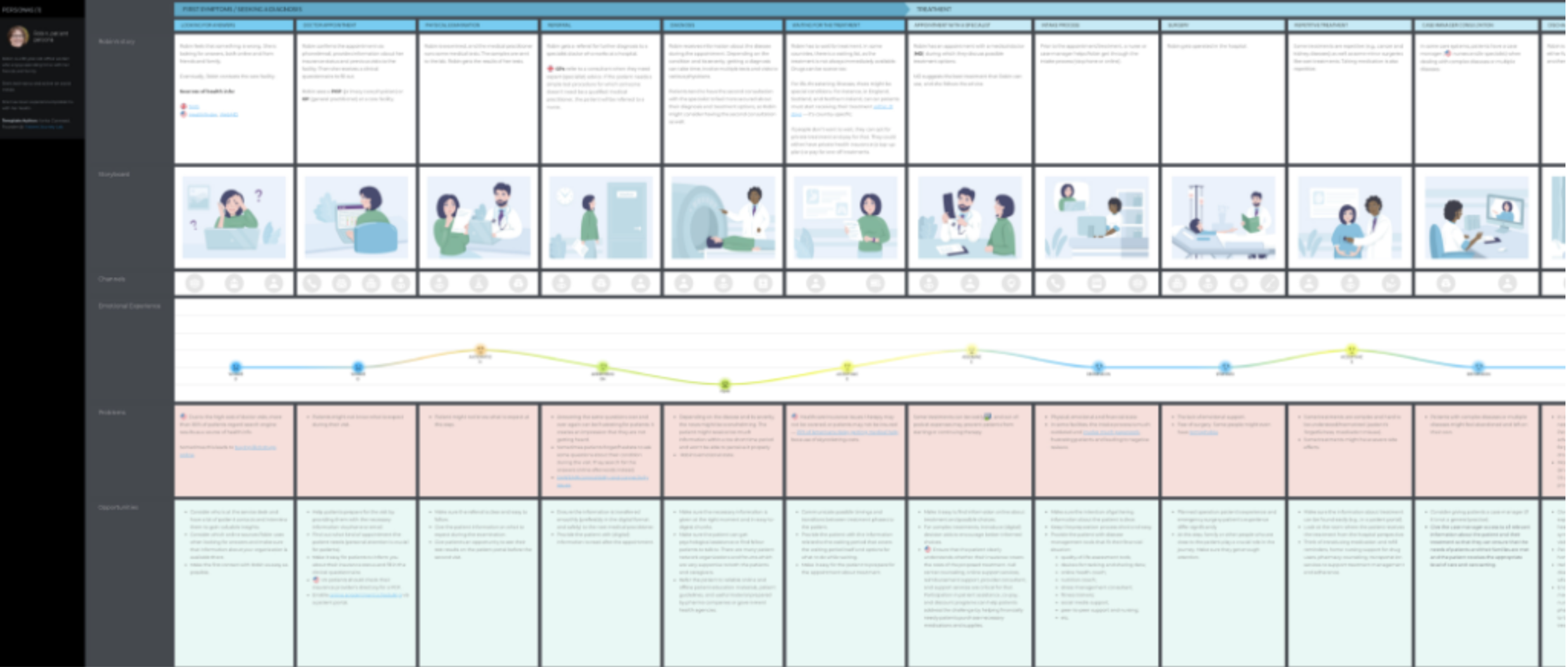
Create a strong foundation with a well-integrated customer journey map
A customer journey map gives you the recipe for crafting personalized, impactful interactions that build customer satisfaction and loyalty.
When you know what they are and why they’re important, it’s time to make yours. Use data to create a solid customer journey map that exceeds customer expectations at every touchpoint.
Check out how you can turn your B2B social media data into a revenue-driving powerhouse and create a memorable brand.
- Customer Care
- Customer Experience
Customer service chatbots: How to create and use them for social media
- Marketing Disciplines
Grow your brand with customer-centric marketing
How a sentiment score improves your brand strategy
How to build customer relationships with social media
- Now on slide
Build and grow stronger relationships on social
Sprout Social helps you understand and reach your audience, engage your community and measure performance with the only all-in-one social media management platform built for connection.
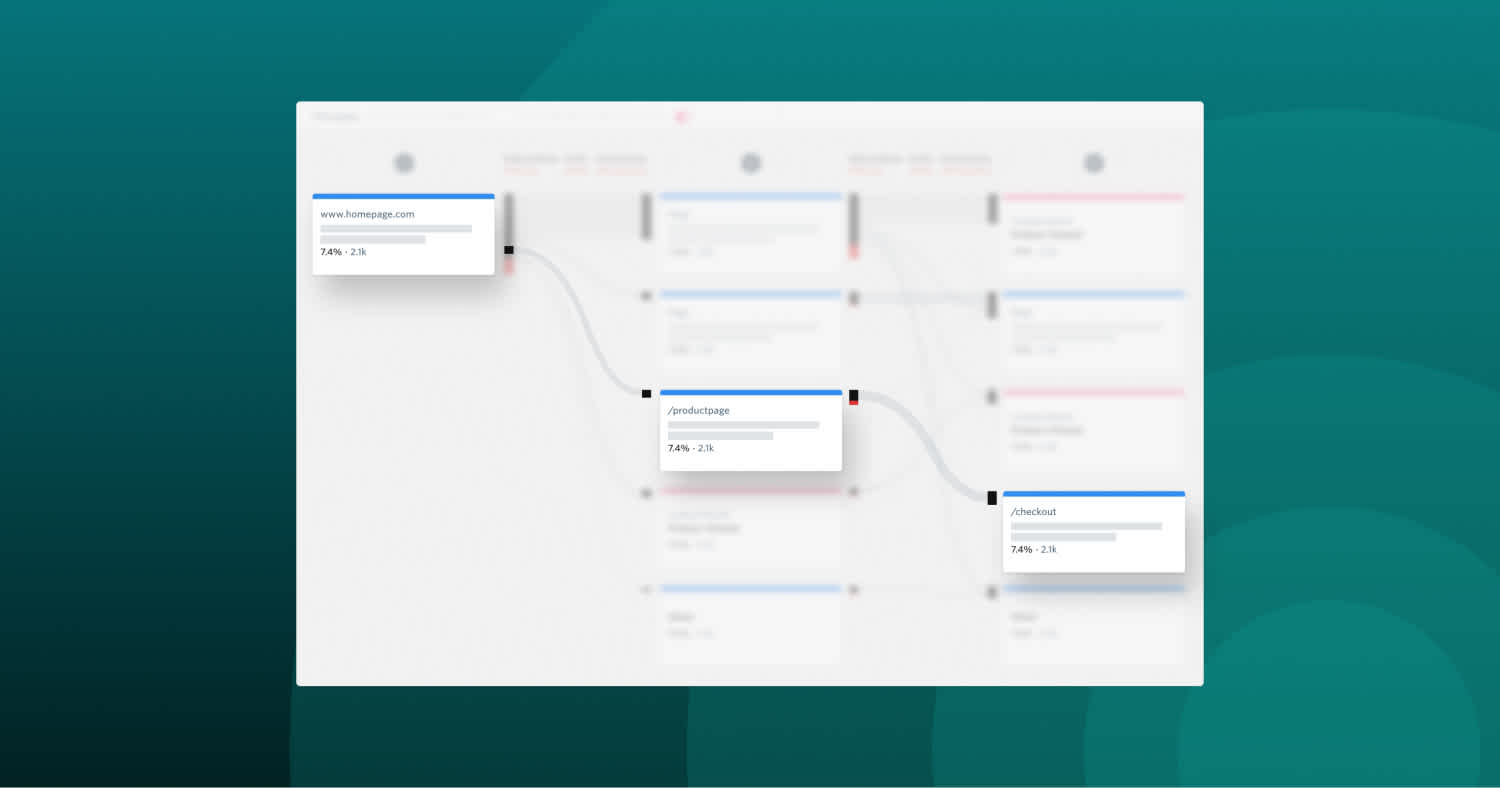
How to understand, use, and build customer journey maps
A customer journey map is key to building a solid marketing strategy. We cover everything you need to know about customer journey maps, their different types, examples, and the steps to making your own.
What is a customer journey map?
Why do you need a customer journey map, characteristics of customer journey maps.
- What are touchpoints?
- Different types of customer journey map
Journey map variations
- How to create a customer journey map
Customer journey map tools
- Return to top
The customer journey is a long and often unpredictable road. Understanding it can be even more complicated.
That’s why customer journey maps were invented: to understand the roadmap of a customer, from the very first touchpoint throughout the lasting life of their relationship with your business.
Customer journey maps (or user journey maps) can be an invaluable resource for companies, from marketing to sales to UX, and are known to help businesses increase their ROI by 13–22% if done correctly.
Below we cover journey maps from top to bottom, their importance, characteristics, and review examples, along with what you need to make your own.
>> Jump to get started learning how to create a customer journey map
Key takeaways:
Customer journey mapping is a strategic (and successful) approach to truly understanding your customers.
There are real and valuable business reasons to journey map.
Customer journey stages include awareness, research (or consideration), evaluation, and decision) to understand how customers interact with your business from discovery to purchase.
Customer touchpoints are every instance of interaction or engagement that happens along the journey.
There are current- and future-state customer journey maps that can help predict future behavior .
A customer journey map (sometimes called a user journey map, UX map, or CJM) is a visualization of the steps and experiences a customer has with a brand, from first contact to ongoing engagement, revealing both seen and unseen interactions.
User journey mapping lets you create personalized experiences across all touchpoints —for every individual—across all channels.
Companies can use this shared understanding to identify opportunities for innovation and improvement.
These maps can be simple or complex, depending on what you're looking to gain from them.
For any company, a customer journey map helps to enhance the customer experience and increase customer loyalty.
A customer journey map can prove invaluable for optimizing across multiple departments—marketing, sales, product, and customer service—in many, many ways. Mapping your customer journey can help you:
Promote a customer-centric culture internally and externally
Identify your ideal buyer and connect with customer needs
Glean customer journey insights into your audience that can drive revenue
Improve sales funnels & conversion rates authentically
Amplify customer experience by understanding the customer’s perspective
Reduce customer support tickets by locating customer pain-points
Aid in marketing campaigns
Generate repeat business
Decrease customer churn and increase customer lifetime value
Together, these advantages translate into higher sales for your business.
A typical customer journey map includes:
Actors—or potential profiles of customers—usually align with personas and their actions in the map are rooted in data . These actors will be the foundation of your map, and they will dictate the actions needed to create the desired outcome.
Customer personas and buyer personas: What’s the difference?
A buyer persona is a profile that showcases your ideal customer based on existing customer data and market research. Buyer personas help humanize the ideal customer you are trying to attract, which helps you understand them better and pick the right marketing strategy to convert them.
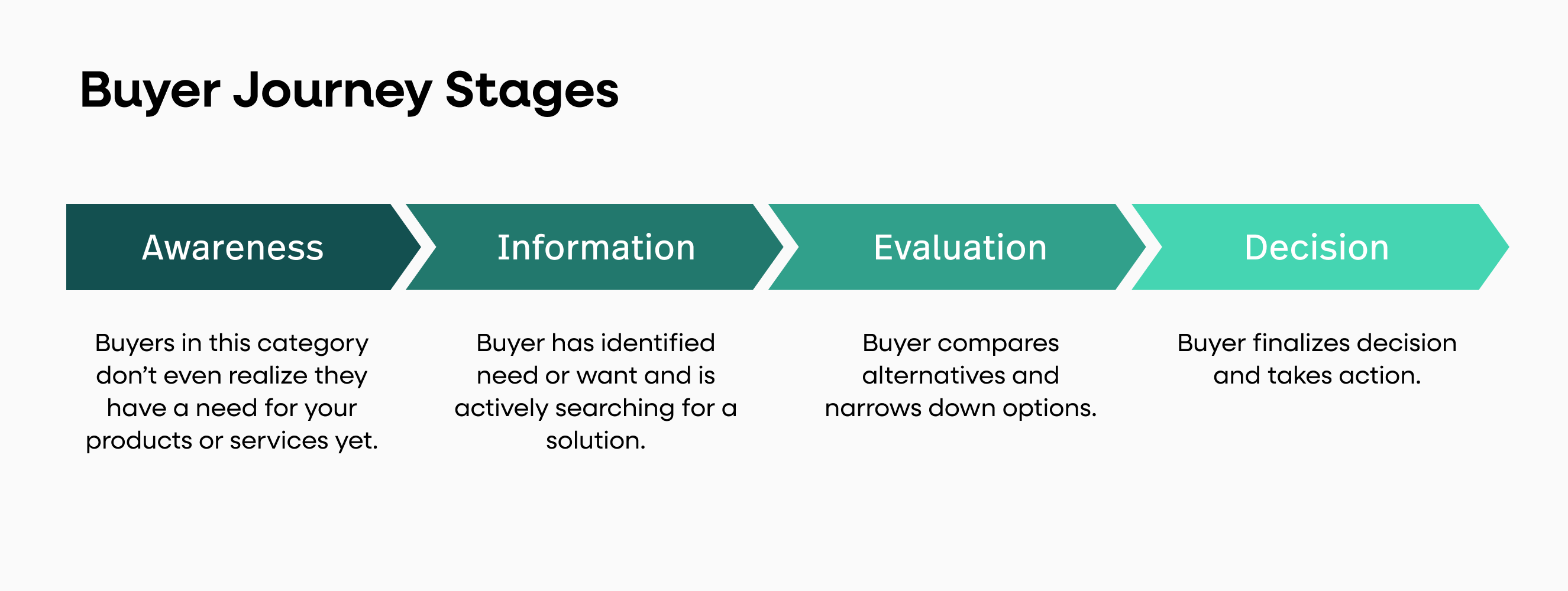
A buyer persona is your ideal customer—they’re in research mode. You can have more than one buyer persona for your company, and understanding this buyer is the key to creating a successful customer experience. This buyer will turn into your customer.
Here’s what makes up your buyer persona:
Demographics —including personal, professional, and specific (age, gender, location, education, income, marital status, skills, routines, etc.)
Goals —including personal and professional, priorities, and challenges
Values —including personal and professional, and what they find to be important in products and companies
Preferences —including the content they consume, their communication choices, communities, groups, or associations, and how they spend their day, on and offline
All of these characteristics make up customer journey maps on the buying path.
Customer journey stages
Journey phases are the different high-level stages in the customer roadmap. They provide organization for the rest of the information in the journey map (actions, thoughts, and emotions).
The stages will vary from scenario to scenario, and each organization will usually have data to help it determine what these phases are for a given scenario. Often you will see awareness, research, evaluation, and decision making in the customer phases.
Customer expectations
Journey maps are best for scenarios that involve a sequence of events, describe a process, or might involve multiple channels.
Pain points are a specific problem that customers or prospective customers of your business are experiencing in the industry.
Scenarios can be real (for existing products and services) or anticipated—for products that are yet in the design stage.
Actions, mindset, and sentiment
Every customer has a particular action that they take, because of a mindset that they have and will express it in their own sentiment.
Actions: When a customer engages with your brand with a purpose.
Mindset : Correspond to users' thoughts, questions, motivations, and information needs at different stages in the journey.
Emotions : How customers feel about your brand, whether positive, negative, or neutral. Plot these emotions in a single line across the journey phases, signaling the emotional highs and lows of the experience.
Opportunities
Opportunities of a customer journey map are desired outcomes. Maps should include key components, which can depend on the goal of the user journey mapping initiative.
Opportunities are also insights gained from mapping—they speak to how the user experience can be optimized.
To create a customer journey map, identify the personas, map the triggers that lead to desired outcomes, and discuss opportunities.
What are customer journey touchpoints?
Customer journey touchpoints are individual transactions through which the customer interacts with a business.
There are about 5–7 minimum touchpoints along a customer journey. Customer journey touchpoints for omnichannel brands are everywhere:
social media posts
product demos
advertisements
brick and mortar visits
website(s) clicks
You’ll also have the added returning customer touchpoints to consider—like how engaged they are with your product, if they are returning to your website or if they are attending your events for the second or third time.
Examples of customer touchpoints
Identifying each touchpoint is crucial for creating a customer journey map that will drive a better customer experience. Once you’ve identified the touchpoints, list out possible customer actions for each.
Some actions that derive from customer touchpoints might be:
Downloading an eBook
Clicking on your FAQ
Requesting a demo or call
Subscribing to your blog
Clicking a paid ad
It’s important to know which touchpoints to invest time and resources into. Your map maps out the areas you can improve, retain and scale.
Types of customer journey maps
Each customer journey map has a different objective and business focus. There are six types to familiarize yourself with:
Current state —These illustrate what customers do , think, and feel as they interact with your business currently.
Future state —These illustrate what customers will do, think, and feel as they interact with your business in the future.
Day in the life —These examine everything that customers or prospects do, think, and feel (within a specific area), whether that involves your product or not.
Service blueprint —This is a diagram that usually starts with a basic version of an existing or future state journey map.
Circular —These are used for subscription-based models to visualize the customer journey as a circle or loop. This helps reinforce the importance of customer retention and lifetime value.
Empathy —These are used to create a shared understanding around the wants, needs, thoughts, and actions of a customer.
Journey maps are meant to be used as a strategic planning tool. Use these definitions to guide you towards aspects of other methods that your team has not previously considered.
Journey map vs. experience map
A journey map is specific to a product or service, while an experience map is more general and can be used outside of a business's scope.
Since experience maps are more generic in nature, they can also be used to find pain points in a product or service for a future journey map.
Journey map vs. service blueprint
If journey maps are a product of experience maps, they will need a blueprint to direct them there.
Service blueprints are a continuation of journey maps in the service industry. They lead the roadmap for service-based customer journeys.
Journey map vs. user story map
User stories are used in Agile to plan features or functionalities, much like a future customer journey map.
In the user story map case, each feature is condensed down to a deliberately brief description from a user’s point of view. The typical format of a user story is a single sentence:
“As a [type of user], I want to [goal], so that [benefit].”
How to create a customer journey map
When you set out to create your own journey map, try drawing everything out on a whiteboard or digitizing it on a spreadsheet to get the big picture. The goal is to find and resolve any customer pain points. Here are eight steps to creating your own customer journey map.
Step 1: Set your objectives for the map
Before the whiteboard comes out, it’s important to set up clear objectives for the map. How do you do this?
Collect customer feedback from all company stakeholders, your team, and your customers. You can do this by forms, surveys, interviews, spotlights, or good old-fashioned conversation.
Ask questions like:
How do you feel about this feature?
How easy was it to find us?
Were there any points of frustration during your interaction with us?
Set goals within the customer journey map like seeing your product through your customer’s eyes, ways to improve your product or service, and how it all impacts your future.
Step 2. Define your customer persona
Your customer is the core of your journey map, so the first step is defining your target customer persona.
A customer or buyer persona is an in-depth understanding of who your customer really is, what they are trying to solve, and how they interact with your business.
The first thing you need to decide is which type of journey you’re going to map:
Persona —a profile of a specific customer type
Target —a profile of a potential customer
Market —a segment of customers
If you're creating your first map, it's best to pick your most common customer persona and consider the route they would typically take when engaging with your business for the first time.
From the point of interest to the product lifeline, track each step along the way to get a true sense of your target persona.
Once you've created distinct personas, you can use them to dictate customer journey maps that describe each persona's experience at various points during their lifecycle with your company.
Step 3: Highlight your target customer personas
Take your journey map persona list and pinpoint your target customer. To do this, dig deep and understand what each customer wants to achieve as they go through the customer journey.
A great way to go about doing this is to first identify the paths that your customer may take on your site.
For instance, if your customer is a member, the first thing that they might do is to log in. These instances will help you determine engagement for each customer.
Here are some different ways to obtain and understand customers' goals:
Survey or interview different customer groups
Conduct user testing feedback
Study customer support correspondence
With this insight, you can then determine where your customer will go along their journey.
Step 4. Determine customer journey stages
Journey maps are organized by customer stages (sometimes referred to as phases ).
Each stage represents a goal your customer is trying to achieve in their journey. You should build a customer journey map with stages that represent your customer's goal-oriented journey, not your internal process steps.
Based on the persona, define the stages that your customer experiences with you over time. To figure out your stages, answer this question:
What does it take for a customer to start from awareness to decision throughout the buying process?
The typical customer journey stages are:
Awareness —how customers found out about you
Research —how you can solve their problem
Evaluation —how you compare against others
Decision —how they chose you
The goal : to determine how, when, and where they discover you, choose you over competitors, purchase from you, and maintain a relationship with you.
Step 5. Identify customer touchpoints
Your buyer journey map will be built off of customer touchpoints. Customer touchpoints are your brand's points of customer contact, from start to finish.

For example, here are a few ways customers may find you:
Search inquiry
Customer review
Social media post
These are just a few touchpoints; there are many more. Identifying these customer touchpoints is an important step towards creating a journey map and ensuring your customers are satisfied every step of the way. It’s also a pivotal part of how you will define your map.
Step 6. Map the current state
It’s time to conduct customer research for your map. This will include information about your customer’s intentions, motivations, digital footprint, and interpretation of your brand.
Most customers are happy to help if they believe you are genuinely interested in their experience and will use your feedback to improve things for others.
For each stage of the journey, try to identify:
What are my customer’s goals?
What type of experience do they want?
What steps are needed to complete that process?
How do they feel during each touchpoint?
What other thoughts, feelings or frustrations do they have during certain stages?
Beyond this information, be sure to look at patterns of how they conduct themselves online, where they frequent, and what they share.
Step 7. Understand motivations, frustrations, and resources
This step involves looking at the totality of the customer experience (CX) with your company.
Every business will look through the lens of its customer personas uniquely. Walking through each journey map stage with your team will help you identify any friction points within the customer experience.
You know your customers best. Here are a few example questions to get you started:
Where could friction appear in this particular touchpoint?
Are people abandoning purchases because of this?
Are customers unaware of this solution that you've provided? If so, why not?
These questions can be answered with customer behavior data, using a behavioral data platform like Fullstory , which delivers a complete, retroactive view of how people interact with your site or app. By finding out how visitors engage with your product and service, you can understand what resources you will need for growth.
Examine customer emotions and motivations.
Every action your customer takes is motivated by emotion. The emotional driver of each of your customer's actions is usually caused by a pain point or a problem.
So, get to know what roadblocks are stopping customers from making desired actions (again with digital intelligence) and get in front of motivation.
Overcome obstacles like cost, product friction , and onboarding frustration with customer experience intelligence.
Take the customer journey yourself.
Follow the customer journey yourself. Analyze the results to show where customer needs aren’t being met by seeing it through your customer’s point of view.
Pro tip: Document the customer journey for each of your personas and make note of the differences. It will help for future user journey maps.
Determine the resources you have and the ones you'll need.
It's important to take inventory of the resources you have and the ones you'll need to improve the customer's journey.
Using your map, you can advise leadership to invest in the right tools that will help your team manage customer demand. Do you have what it takes to solve the customer’s problem?
Step 8: Evaluate, adjust and scale
As with any process, you’ll need to test it over time. Data analysis is used to identify customers’ behavior and pain points that need changing along the way.
Use digital experience and customer intelligence to keep you informed on the user journey. This means relying on a solution to let your customers show you what’s actually happening. With features like session replay , you can understand exactly what they are going through and proactively fix it.
Always include your team and keep stakeholders involved to keep the roadmap clear.
Your customer journey map checklist
This guide on creating a customer journey map should help you truly understand the impact of your product or service. By stepping into your customer’s shoes, you will gain the insight needed to improve the entire experience.
Now, you’re ready to create your map. Here are the questions you will ask yourself while creating a customer journey map:
☑ Set clear objectives for your map ☑ Define your customer persona ☑ Highlight your target personas ☑ Determine customer stages ☑ Identify customer touchpoints ☑ Map the current state ☑ Understand motivations, frustrations, and what tools you’ll need ☑ Evaluate, adjust, and get ready to grow
Use the data and let your customers do the rest.
6 customer journey map templates
Having a template is a great way to get started. There are a few different templates to choose from:
Current state
The current state journey map visualizes the current experience with your product or service. It involves defining the scope of the customer experience with customer touchpoints.
This type of customer journey map is designed with the considerations, thoughts, feelings, and actions of your customers in mind. Current state mapping is a practical approach to identify existing pain points and create a shared awareness of the end-to-end customer experience.
Day-in-the-life
A day-in-the-life journey map is another simple grid map based on time, created especially for the daily grind of the customer. Instead of different journey stages, it represents times in the day related to actions based on decisions in the path of purchasing.
This template helps you visualize your customer’s daily routine even if these actions are outside your company. It typically is organized chronologically to systematically show the course of the habits of the day.
Day-in-the-life's are great for giving you insights into all the thoughts, needs, and pain points users experiences throughout their day. You can use this type of map to evaluate when your product or service will be most valuable in your customer’s day.
Future-state
With a future-state journey map template, your goal is to learn how your customers feel about a new product launch or about how they will require your service in the future.
Future-state journey mapping is a useful approach to explore possible customer expectations and to create new experiences. Mapping out a future customer journey helps to align your team around a common goal—the betterment of the customer experience.
Service blueprint
A service blueprint helps you design a roadmap of your service process—much like building a house. The goal is to be able to make projected changes to the service where needed and to be able to visualize each step in the eyes of the customer.
Service blueprint maps reflect the perspective of the organization and its employees and visualize the things that need to happen behind the scenes in order for the customer journey to take place.
Service blueprints are created when making procedural changes, or when trying to pinpoint solutions to roadblocks in the customer journey on a website.
A circular customer journey map is just that—circular instead of linear or graph-like to showcase a different type of business model. For instance, a SaaS company may find it more useful to visualize the customer journey as a loop or wheel.
This subscription-based journey map does a nice job of portraying both the customer interactions and sentiments, as well as their journey from awareness to purchase.
The empathy journey map is a bit different because it aligns with the customer's feelings and emotions. Empathy is a big factor in the customer journey and this template is designed to help teams align their customer journey mapping exercise with these types of needs.
With empathy, you can get into your customer’s shoes and truly feel what they feel as it pertains to your product or service.
As with anything, you’ll need customer journey mapping tools to help you . The key is to find the right tool that works with your team and workflow.
Here are a few tools to consider:
PowerPoint or Google Slides
With the right map and the right tools, you can overcome roadblocks and open a path to scalability and success.
Enhance your journey mapping process with customer intelligence. Look at behavioral data points like heatmaps , scroll maps , and other insights you can glean from session replay . Combining these quantitative and qualitative insights will help you in your journey-mapping process.
Using journey maps to drive organizational change
It may not be easy to get buy-in to support the changes in strategic planning that result from customer journey mapping.
You can use what insights you’ve gleaned from the current state journey map in these beneficial ways:
Align your organization around the customer viewpoint. Engage with each department and set up a commitment to put the customer experience moments top of mind with an initiative for growth.
Enlist team members and partners to generate empathy for customers. Use your journey map to bring together relevant teams to train on customer experience best practices.
Supplement a new strategy with internal communications that encourage better customer service. As new initiatives roll out, use internal channels to communicate how you’re improving the experience of the customer, and how team members can help.
Optimize your user journeys with Fullstory
Understanding your users' digital experience and optimizing your most important touchpoints can be make-or-break.
With Fullstory Journeys, you can easily see how users explore your site or app and see step-by-step page navigations and other key interactions along the way. This lets you identify if users are using your site how you intended; what the most common navigation paths are; and how users typically arrive at your most critical pages.
It's no longer a guessing game—it's data-driven and actionable.
Fullstory's behavioral data platform combines the quantitative insights of customer journeys and product analytics with picture-perfect session replay for complete context that helps you uncover opportunities.
Sign up for a free 14-day trial to see how Fullstory can help you combine your most invaluable quantitative and qualitative insights and eliminate blind spots.
Frequently asked questions about customer journey maps
Who uses customer journey maps.
For any brand or company that wants to learn their customer, from the point of motivation to the turning point of frustration, a customer journey map is the best tactic to do so. Journey maps are best for scenarios that describe a sequence of events. You might want to map multiple scenarios for one persona, depending on your project goals.
How often should I update a customer journey map?
If business goals change, so could your customer’s goals. If you roll out a new product or service, you may want to edit or update your customer journey map. Keeping your maps updated can help you reach your goals as a team.
How many customer journey maps do I need?
The number of different customer journey maps needed all depends on your target audience. If you have multiple customer personas, it would be best to create different journey maps to suit each one.
At the very least, be sure to create a customer journey map for the current and future state so you can aid in predicting future trends of the customer journey in alignment with your product and service.
Who should be involved in the mapping process?
Anyone that is involved in making your product or service successful should have a hand in the mapping process. Sales, marketing, customer success, and product teams all should be involved in customer journey mapping. Every team member will benefit from truly understanding their customers to make for a better customer experience.
What is a user journey map in design thinking?
User journey maps for design thinking is an iterative process of studying the user so that they can engage with a system with more agility. It redefines customer problems in an attempt to identify alternative solutions that might not be obvious with the initial level of understanding.
Related posts
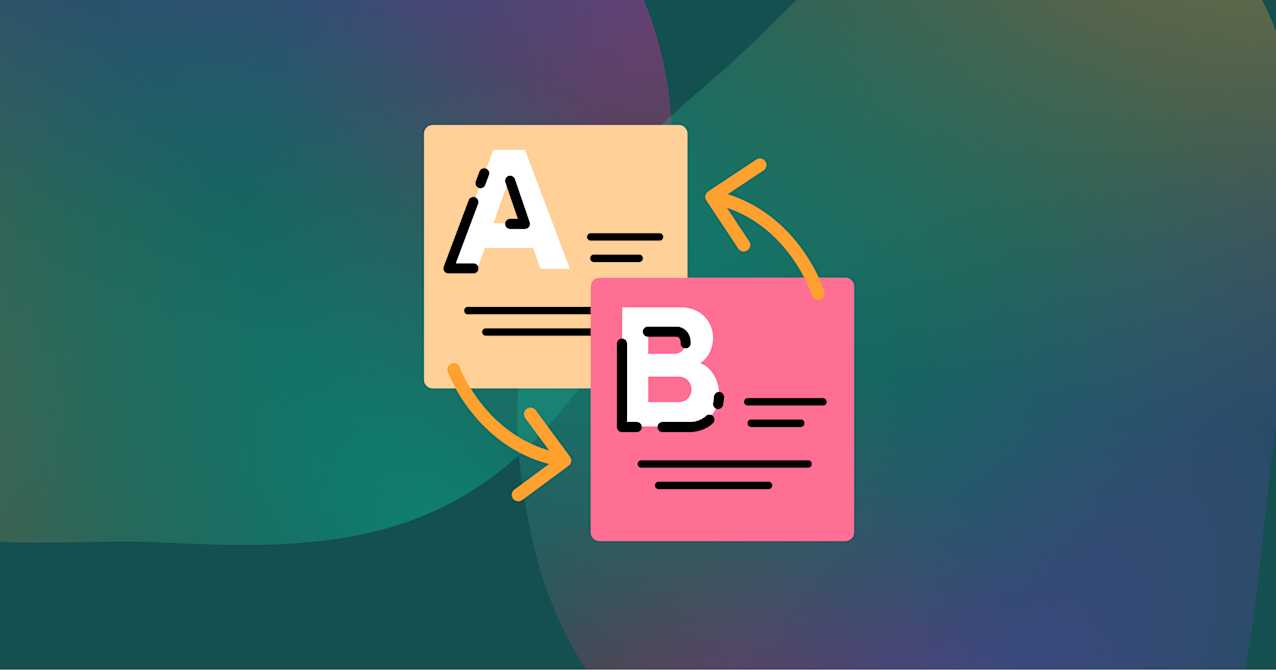
A/B testing is the process of comparing two versions of the same product to determine which is the most compelling for users.
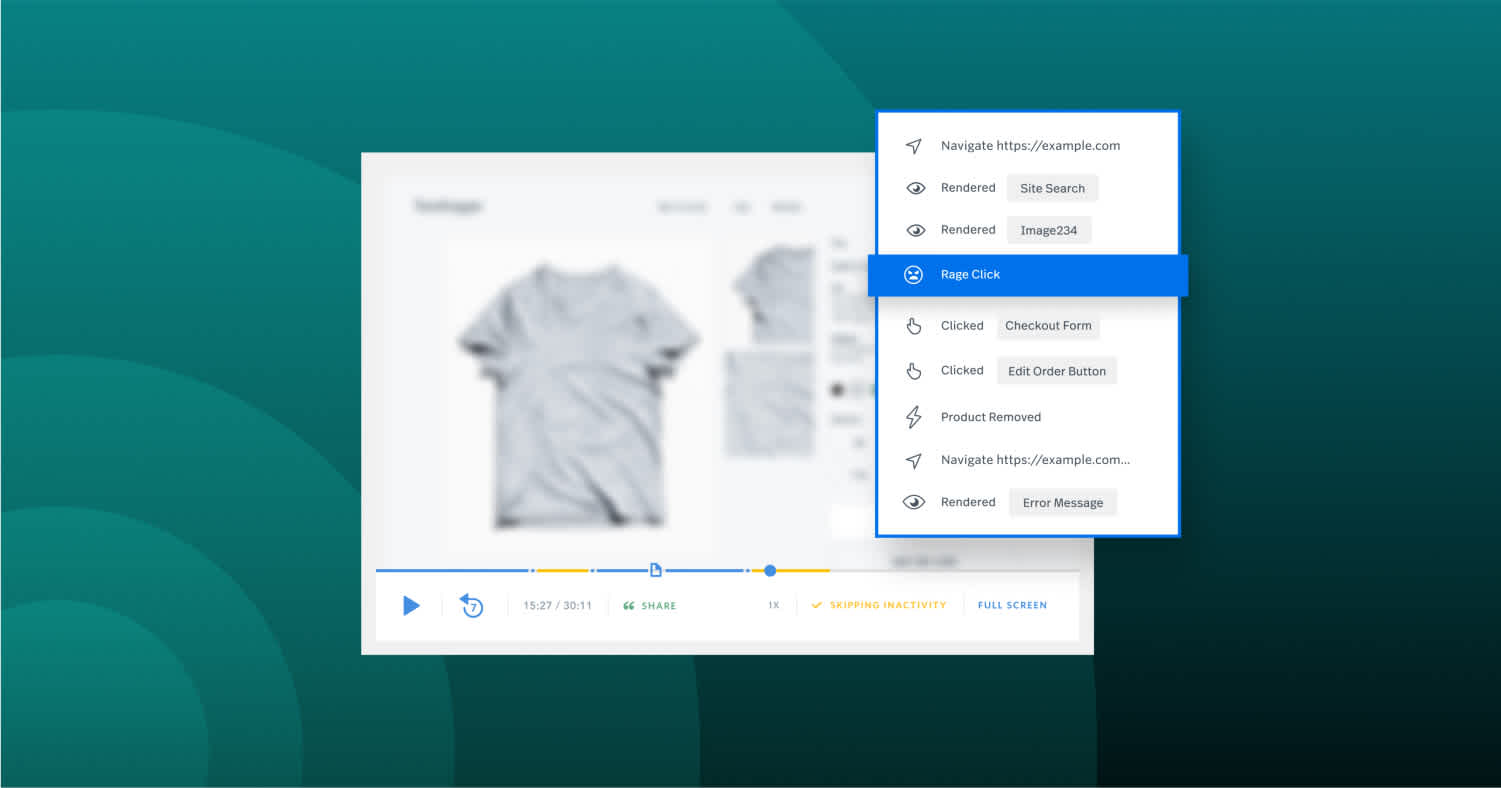
Session replay reproduces your user's online experience. But how should you use it? And how can you learn from it?
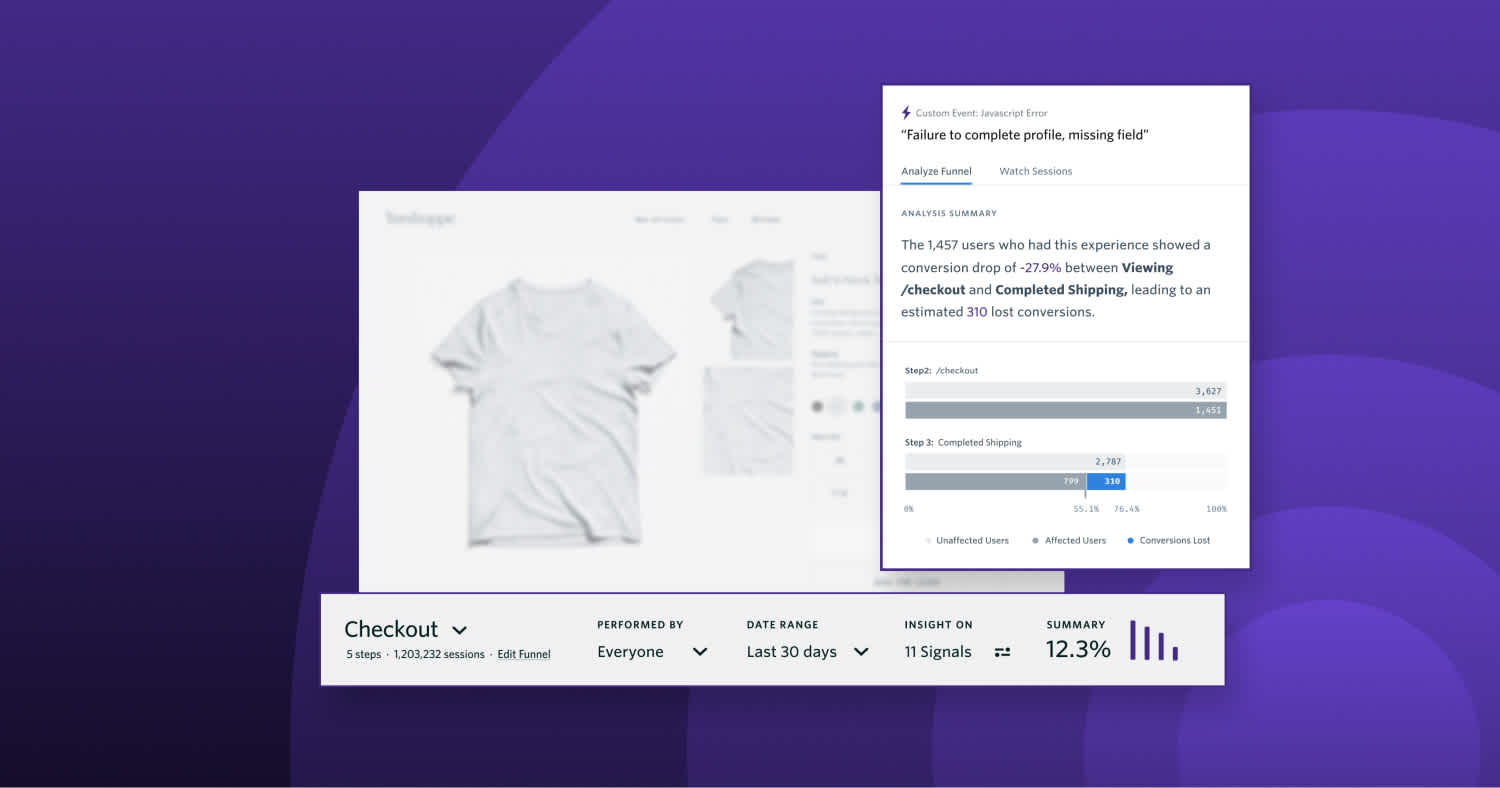
A comprehensive guide to product analysis and analytics platforms, how important they are, and why they’re a valuable asset for your bottom line.
Root out friction in every digital experience, super-charge conversion rates, and optimize digital self-service
Uncover insights from any interaction, deliver AI-powered agent coaching, and reduce cost to serve
Increase revenue and loyalty with real-time insights and recommendations delivered to teams on the ground
Know how your people feel and empower managers to improve employee engagement, productivity, and retention
Take action in the moments that matter most along the employee journey and drive bottom line growth
Whatever they’re are saying, wherever they’re saying it, know exactly what’s going on with your people
Get faster, richer insights with qual and quant tools that make powerful market research available to everyone
Run concept tests, pricing studies, prototyping + more with fast, powerful studies designed by UX research experts
Track your brand performance 24/7 and act quickly to respond to opportunities and challenges in your market
Explore the platform powering Experience Management
- Free Account
- Product Demos
- For Digital
- For Customer Care
- For Human Resources
- For Researchers
- Financial Services
- All Industries
Popular Use Cases
- Customer Experience
- Employee Experience
- Net Promoter Score
- Voice of Customer
- Customer Success Hub
- Product Documentation
- Training & Certification
- XM Institute
- Popular Resources
- Customer Stories
- Artificial Intelligence
- Market Research
- Partnerships
- Marketplace
The annual gathering of the experience leaders at the world’s iconic brands building breakthrough business results, live in Salt Lake City.
- English/AU & NZ
- Español/Europa
- Español/América Latina
- Português Brasileiro
- REQUEST DEMO
- Experience Management
- Customer Journey Mapping
What is customer journey mapping?
Customer journey map template, the customer journey mapping process, data inputs for your customer journey map, why should you use customer journey maps, the uses of customer journey mapping, how to improve a customer journey, tools to help you with your journey mapping, try qualtrics for free, customer journey mapping 101: definition, template & tips.
22 min read Find out about how to start customer journey mapping, and how to improve it for the benefit of your customers and the business.
If you want to improve your customer experience you need to be able to understand and adapt the customer journey you offer when someone interacts with your organization. Whether their journey is entirely online , offline, or a blend of both, there are multiple journeys a customer might undergo.
Understanding the customer journey in depth helps you identify and take action on customer pain points and repeat what’s working. By doing this, you will improve the overall experience that your customers have, which will have better outcomes for your business.
Outlining the potential customer journeys your audience might go through requires a process called customer journey mapping.
Free Course: Customer journey management & improvement
Creating a customer journey map is the process of forming a visual representation of customers’ processes, needs , and perceptions throughout their interactions and relationship with an organization. It helps you understand the steps customers take – the ones you see, and don’t – when they interact with your business.
It enables you to assess:
- Insights – from your existing customer journey, how to understand it better
- Impact – how to optimize budgets and effort for changes we want to make to the customer experiences
- Issues/opportunities – Diagnose the existing customer journey
- Innovation – where you might want to completely change the existing customer experience
A customer journey map gives you deeper insight into the customer, so you can go beyond what you already know. Many brands see the customer journey as something that is visible – where the customer interacts with the brand. But in reality, this is not true, and only accounts for a percentage of the entire customer journey. Creating a customer journey map gets you thinking about the aspects of the journey you don’t see, but have equal weight and importance to the entire experience.
When mapping out the customer journey, you are looking for the moments that matter – where there is the greatest emotional load.
If you’re buying a car, then the greatest moment of emotional load is when you go to pick the car up because it’s yours , after picking the color, choosing the model, and waiting for it to be ready.
Ensuring these moments match your customers’ expectations of your product, brand and service teams are key to helping you reach your business goals. But you can only do that by understanding the journey your customers go on in order to get there, what they’re thinking and needing from you at that time. Developing a customer journey map puts you in their shoes so you can understand them better than ever before.
Getting started when creating a customer journey map template doesn’t have to be difficult. However, your customer journey map template will need to cover several elements in order to be effective.
There are several ingredients that make up the anatomy of a customer journey, all of which should be looked at carefully so that you can find out where the customer journey runs smoothly and meets customer needs at that moment in time – and where the experience does not, and needs some improvement.
Understanding their behaviors and attitudes also means you can fix bad experiences more effectively too because you know why you haven’t met your customers’ expectations and what you need to do to make amends. There may be times when things go wrong, but it’s how you adapt and what you do to fix these experiences that separates the best. Knowing how the customer will be feeling makes taking that decisive action much easier.
When exploring and visualizing the customer journey we are assessing:
- Customer behavior What is your customer trying to do?
- Customer attitudes What is your customer feeling/saying?
- The on-stage experience Who/what is your customer directly interacting with? (This includes various channels, such as TV ads or social media)
- The off-stage experience Who/what needs to be in place but which your customer is NOT directly aware of?
So what could the customer journey map examples look like when starting the process of buying a car?
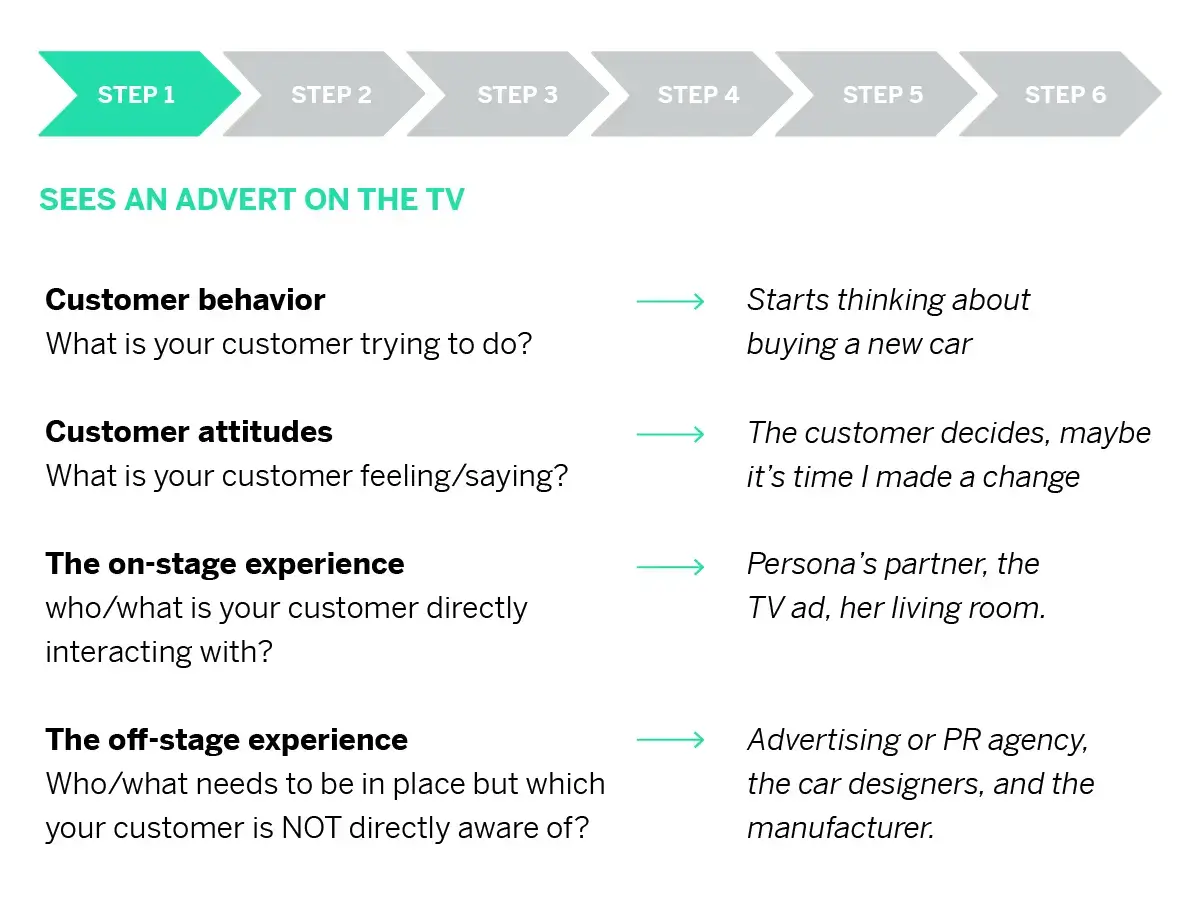
Customer journey vs process flow
Understanding customer perspective, behavior, attitudes, and the on-stage and off-stage is essential to successfully create a customer journey map – otherwise, all you have is a process flow. If you just write down the touchpoints where the customer is interacting with your brand, you’re typically missing up to 40% of the entire customer journey.
There is no single customer journey. In fact, there are multiple. The best experiences combine multiple journeys in a seamless way to create a continuous customer lifecycle as outlined below.
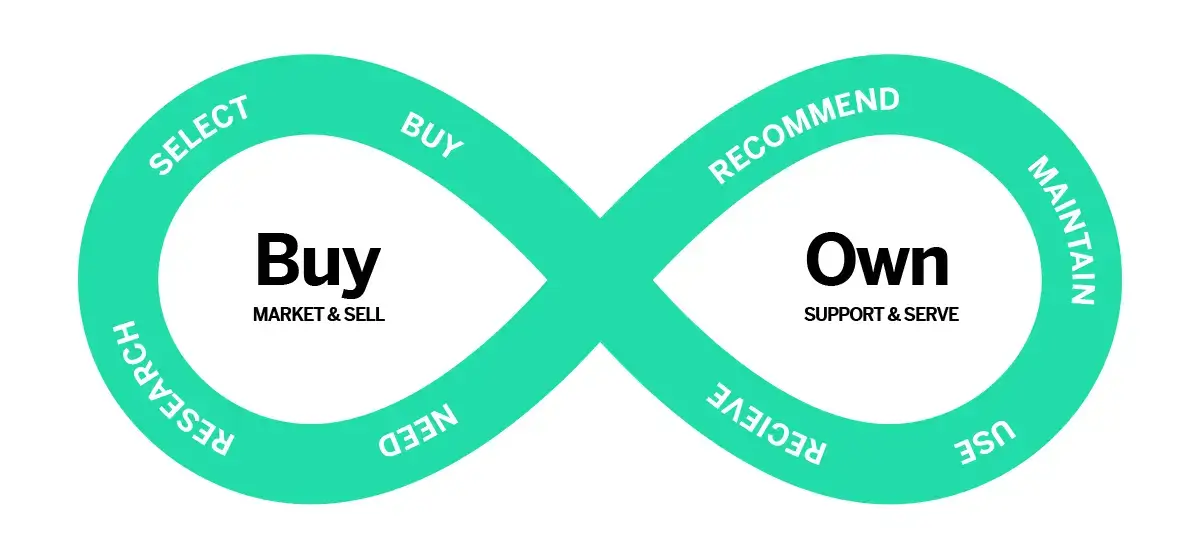
Getting started with customer journey map templates
To begin, start by choosing a journey that you would like to create a customer journey map for and outline the first step that customers will take.
You can use this customer journey map template below to work out the customer behaviors, attitudes, the on-stage and off-stage processes – and the KPIs attached to measuring the success of this experience.
Download our free journey mapping template here
The step-by-step process of mapping the customer journey begins with the buyer persona .
Step 1 – Create a customer persona to test
In order to effectively understand the customer journey, you need to understand the customer – and this is where creating a persona really helps. You may base this around the most common or regular customers, big spend, or new customers you haven’t worked with before. This persona is beyond a marketing segment , but that can be a great place to begin if you’re just starting out on the mapping process for your organization.
What do you include? Start with these characteristics.
- Family status
- Professional goals
- Personal goals
These personas help you gain a deeper understanding of your customers and can be derived from insights and demographic data , or even customer interviews . This works for both B2B and B2C business models, but in B2B especially you’ll have multiple customers for each opportunity so it’s recommended you build out multiple personas.
To begin, start with no more than three personas to keep things simple.
Create a diverse team
When creating a customer journey map, you also need to build out a diverse mapping team to represent the whole business. Include frontline staff , day-to-day management, corporate teams, HR, and business support functions. They will give you vital feedback, advice, and perspectives you hadn’t thought of.
Step 2 – Choose a customer journey for mapping
Select a customer journey map to construct, then build a behavior line. This might be a new customer journey, renewal, or fixing a product issue. You might also choose this based on the most frequent customer journeys taken, or the most profitable.
Step 3 – Work through the mapping process
Ask yourself the following:
- Who are the people involved in this journey? E.g. if you’re in a car dealership, that might be the customer, the sales rep, and front-of-house staff.
- What are the processes or the things that happen during this journey?
- What are the customer attitudes ? What are they feeling at this time? Go beyond excitement or frustration. Bring these feelings to life. This car is my dream come true!
- What is the moment that matters? Identify the greatest moment of emotional load. The make or break where everything could be good up until that point, but if you get that moment of maximum impact wrong, then all that’s good is forgotten. The best experience brands get this moment right and identifying it is an important first step to achieving that. In that moment, ask yourself what are the things/people/processes involved? Think about this for the whole business – across your product , brand , and service teams.
- But beyond identifying this moment, you need to establish what your customers’ needs are. What are they getting out of this moment? How do their needs change if this experience goes badly? Knowing the answer to these questions can help you deliver experiences that will resonate , and respond quickly to unforeseen circumstances or issues.
- And finally, how do you measure how effectively you are meeting customer needs throughout the journey? Set KPIs to put benchmarks in place for your customer journey map and customer experience and track your progress.
Step 4 – Innovate
When you are mapping out your customer journey, brainstorm ideas for how to improve that moment that really matters . These ideas don’t need to be practical, but by putting together a diverse mapping team from around the business you can begin to filter through these ideas.
Then, test it.
Ask yourself: Is it feasible? Is it viable? Is it desirable? Don’t ask can we do it, ask should we do it? Then you can start to differentiate yourself from your competitors.
Step 5 – Measure
Use the customer journey map to decide on your measurement framework.
Who are you measuring? What are you measuring? When on the journey are you measuring it? And why? And finally, what metrics and KPI’s are in place to measure this?
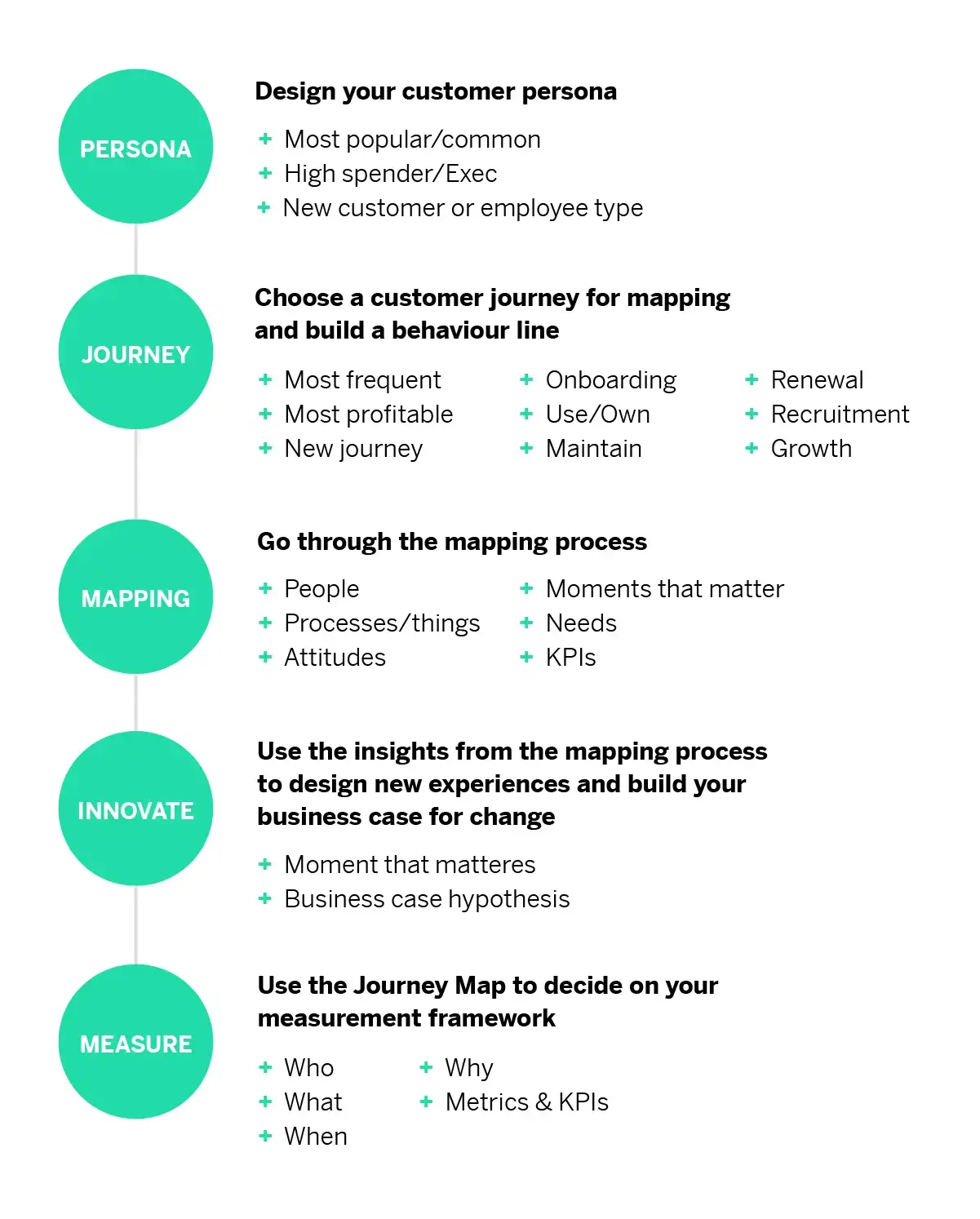
Your customer journey map process will require you to use several different data inputs to get an accurate picture of how your customers behave and where you can improve their experience.
A customer journey map is often developed using data gleaned from customer feedback you’ve requested . While this type of market research is useful, your research process needs to be deeper to gain a richer, more accurate understanding of your customer’s behavior.
To create a customer journey map that accurately reflects the truth of customer actions and intentions, you need to take into account both solicited and unsolicited data.
Use solicited data to understand the voice of the customer
Solicited data includes the customer feedback you gain when you conduct research through surveys such as Net Promoter Score (NPS) or ask customers for feedback on social media. This approach can be very useful for understanding your customer’s point of view , rather than just making assumptions about how they think and behave.
However, your target audiences won’t tell you everything about what they plan to do when undergoing their customer journey. Though they might tell you that they’ve had a great experience in a particular part of their customer journey, this type of feedback presents a few issues:
- You have to know when to ask for feedback : You might already have a customer journey in mind when asking for feedback – but do you know all the routes a customer might take in your customer journey map?
- It’s a snapshot: When you survey customers, you’ll likely only get insights into their experience at that particular moment about a specific touchpoint
- It’s what customers say they think/will do, not what they actually think/will do: You’re relying on your customers to accurately reflect their sentiment and intentions in their responses, which isn’t always the case. For your customer journey map to be effective, you need to find the truth
- Your sample size might be too small : If you’re trying to understand how a relatively niche customer journey is doing, you might find that the number of customers who have not only taken the customer journey but are willing to respond with feedback is very limited. You can’t risk survey fatigue by polling the same audience several times, so your insights are limited
- You’re only getting part of the picture : You will likely have several types of useful customer data on file, but these are often not considered as part of the process when creating a customer journey design because solicited data takes precedence
You’ll need to infer how customers feel to be able to accurately predict the actions a customer takes. To do so, you’ll need to look at unsolicited data.
Unsolicited data
Unsolicited data covers everything your customers aren’t telling you directly when you ask them and contextual data that you likely already collect on them, such as purchase history. It can be taken from various sources, such as your website and social channels, third-party sites, customer calls, chat transcripts, frontline employee feedback , operational sources, and more.
This type of data is nuanced, but it allows you to establish the truth of your customers’ experience. The ability to gather unsolicited customer feedback from every channel enables you to see more than just what a customer tells you directly. Using real-time feedback gathering and natural language understanding (NLU) models that can detect emotion, intent, and effort, you’ll be able to understand your customers’ actions in a more profound way. Unsolicited data offers you a 100% response rate that better indicates what your customers actually think of each step in their customer journey.
Rather than be limited to a small sample size of customers who respond to surveys, you’ll be able to build an accurate picture of the average customer on each step of the customer journey map by using this richer insight data with your own operational data.
Why using solicited and unsolicited data is important data
With solicited data, you don’t always see why a customer behaves or thinks as they do. For example, a customer might tell you that they would recommend you to a friend or family – but they don’t renew their subscription with you. A customer might be an ideal candidate for a particular journey, but they abandon their basket when prompted to give their personal details. Understanding the why behind customer actions is key for designing a great customer journey, and that’s why both solicited and unsolicited data collection and evaluation are necessary for creating great customer journey maps.
Of course, knowing how customers will actually respond to your customer touchpoints is only part of the process. You may need to develop more than one customer journey map and create sub-audiences for your customer personas to accurately see where you can rectify pain points and improve outcomes. You will need to collect and analyze contextual data across all customer journey touchpoints and develop a highly detailed journey map that can unveil routes your customers might be taking without your knowledge.
Qualtrics can overlay solicited and unsolicited data to provide an all-encompassing picture of your customer journey map, no matter how complex. Creating an effective customer journey map is easier with all your data collated and analyzed together, with actionable insights created automatically.
A customer journey map creates a common understanding for the organization of how a customer interacts during different stages of the customer lifecycle, and the roles and responsibilities of the different teams in charge of fulfilling that experience.
It will also bring an organization together, and foster empathy and collaboration between teams because people will know what is required from everyone in the business to deliver the experiences that customers expect. This will help you to develop a shared sense of ownership of the customer relationship, which ultimately drives a customer-centric culture . With everyone working towards a common goal, communication of what you learn about the customer and the journey they go through is vital in order to drive best practices throughout the organization.
Creating an accurate customer journey map will help your customer service team to focus on more specific issues, rather than handling problems generated by a less-tailored customer journey. Your customer experience will be improved with a customer journey that’s personalized to the specific personas you have generated. You’ll have put yourself in your customer’s shoes and adapted your strategy to reflect your customer’s perspective – which in turn will create more memorable experiences.
Creating a customer journey map will influence your journey analytics across the business. So for example, it will determine what you ask, who you ask, when you ask, why you ask it and how you ask questions in your Voice of the Customer Program .
So when should you use customer journey mapping?
There are four main uses:
- Assess the current state of your customer journey Understand and diagnose the specific issues in current experiences
- Understand what the future state of your customer journey should look like Design, redesign and create new experiences
- Blueprints For implementing change
- Communication Bringing teams together to train and scale up best practices.
Take stock and take action
To improve the customer journey you need a clear vision of what you want to achieve and you need to make a distinction between the present and the future.
- What is your customer journey right now?
- What does the future state of your customer journey look like?
This is why organizations blueprint their customer journey because they can see what works and act accordingly. By understanding your customers’ attitudes and needs at critical times in the journey, you can make amends to better meet them – and develop contingencies to cope when these needs aren’t or can’t be met. For example, during a sudden, unexpected surge in demand.
Orchestrate your customer journey
To offer your customers truly optimized experiences, you’ll need to go further than just creating a customer journey map. You’ll also need to orchestrate journeys using real-time customer behavior to adapt your strategy as your customers make choices. Orchestrating a journey means taking dynamic action towards optimizing your customer’s experience, using real-time customer behavior as informative data.
Improve your employee experience
Use your diverse mapping team to come up with ideas that incorporate experience from all aspects of the business to improve the customer journey – and remember that this has a significant payoff for your employees too. Improving the employee journey – by giving teams the tools to make a difference – can have a positive knock-on effect for the customer and improve their experience in those key moments. This is because employees have the autonomy and motivation in their roles to help their customers, and realize their own potential.
Your customer journey map isn’t just designed to improve the customer experience. Creating an accurate customer journey map can help you to improve your business outcomes.
Being able to link operational data to key touchpoints in a customer journey is transformative for organizations. This is because improving segments of the customer journey will see a direct impact on your business. The Qualtrics Journey Optimizer helps you do just that. By analyzing areas for improvement as outlined by your customer journey map, organizations can take actions that will have maximum benefit for their customers, and the business too.
With Qualtrics, you’ll:
- Create a common understanding throughout your workforce of how a customer interacts with your organization, and you’ll know the roles and responsibilities of your different teams
- Develop empathy and collaboration between teams, working together to achieve the same outcome
- Develop a shared sense of ownership of the customer relationship which ultimately drives a customer-centric culture
Free course: Customer journey management & improvement
Related resources
Customer Journey
Customer Interactions 11 min read
Consumer decision journey 14 min read, customer journey orchestration 12 min read, customer journey management 14 min read, customer profiles 16 min read, customer journey stages 12 min read, buyer's journey 16 min read, request demo.
Ready to learn more about Qualtrics?
Customer Journey Mapping
Journey mapping helps you visualize how customers experience your product or service, and how they feel along the way. Scroll to step 6 for a real-life example from one of our product teams!
USE THIS PLAY TO...
Understand the customer journey from a specific persona's perspective so that you can design a better experience.

Running the play
Depending on how many touchpoints along the customer journey you're mapping, you might break the journey into stages and tackle each stage in pairs.
Sticky notes
Whiteboards.io Template
Define the map's scope (15 min)
Ideally, customer journey mapping focuses on the experience of a single persona in a single scenario with a single goal. Else, the journey map will be too generic, and you'll miss out on opportunities for new insights and questions. You may need to pause creating a customer journey map until you have defined your customer personas . Your personas should be informed by customer interviews , as well as data wherever possible.
Saying that, don't let perfect be the enemy of good! Sometimes a team just needs to get started, and you can agree to revisit with more rigor in a few months' time. Once scope is agreed on, check your invite list to make sure you've got people who know the details of what customers experience when using your product or service.
Set the stage (5 min)
It's really important that your group understands the user persona and the goal driving their journey. Decide on or recap with your group the target persona and the scope of the journey being explored in your session. Make sure to pre-share required reading with the team at least a week ahead of your session to make sure everyone understands the persona, scope of the journey, and has a chance to delve deeper into research and data where needed. Even better- invite the team to run or attend the customer interviews to hear from customers first hand!
E.g. "We're going to focus on the Alana persona. Alana's role is project manager, and her goal is to find a scalable way for her team to share their knowledge so they spend less time explaining things over email. We're going to map out what it's like for Alana to evaluate Confluence for this purpose, from the point where she clicks that TRY button, to the point where she decides to buy it – or not."
Build a customer back-story (10 min)
Have the group use sticky notes to post up reasons why your target persona would be on this journey in the first place. Odds are, you'll get a range of responses: everything from high-level goals, to pain points, to requested features or services. Group similar ideas and groom the stickies so you can design a story from them.
These narratives should be inspired by actual customer interviews. But each team member will also bring a different perspective to the table that helps to broaden the lens.
Take a look at the example provided in the call out of this section. This back story starts with the pain points – the reasons why Alana would be wanting something like Confluence in the first place.
- E.g., "Her team's knowledge is in silos"
Then it basically has a list of requirements – what Alana is looking for in a product to solve the bottom pain points. This is essentially a mental shopping list for the group to refer to when mapping out the customer journey.
- E.g., "Provide structure"
Then it has the outcomes – goals that Alana wants to achieve by using the product
- E.g., "To keep my team focused on their work instead of distracted by unnecessary emails and shoulder-taps"
And finally the highest-level goal for her and her team.
- E.g., "Improve team efficiency"
Round off the back story by getting someone to say out loud what they think the overall story so far is, highlighting the main goals the customer has. This ensures a shared understanding that will inform the journey mapping, and improve the chances that your team will map it from the persona's point of view (not their own).
- E.g., "Alana and her team are frustrated by having to spend so much time explaining their work to each other, and to stakeholders. They want a way to share their knowledge, and organize it so it's easy for people outside their team to find, so they can focus more energy on the tasks at hand."

For example...
Here's a backstory the Confluence team created.
Map what the customer thinks and feels (30-60 min)
With the target persona, back story, and destination in place, it's time to walk a mile in their shoes. Show participants how to get going by writing the first thing that the persona does on a sticky note. The whole group can then grab stickies and markers and continue plotting the journey one action at a time.
This can also include questions and decisions! If the journey branches based on the answers or choices, have one participant map out each path. Keep in mind that the purpose of this Play is to build empathy for, and a shared understanding of the customer for the team. In order to do this, we focus on mapping the current state of one discrete end to end journey, and looking for opportunities for improvement.
To do a more comprehensive discovery and inform strategy, you will need to go deeper on researching and designing these journey maps, which will need to split up over multiple sessions. Take a look at the variation below for tipes on how to design a completely new customer journey.
Use different color sticky notes for actions, questions, decisions, etc. so it's easier to see each element when you look at the whole map.
For each action on the customer journey, capture which channels are used for the interactions. Depending on your context, channels might include a website, phone, email, postal mail, face-to-face, and/or social media.
It might also help to visually split the mapping area in zones, such as "frontstage" (what the customer experiences) versus "backstage" (what systems and processes are active in the background).
Journey mapping can open up rich discussion, but try to avoid delving into the wrong sort of detail. The idea is to explore the journey and mine it for opportunities to improve the experience instead of coming up with solutions on the spot. It's important not only to keep the conversation on track, but also to create an artefact that can be easily referenced in the future. Use expands or footnotes in the Confluence template to capture any additional context while keeping the overview stable.
Try to be the commentator, not the critic. And remember: you're there to call out what’s going on for the persona, not explain what’s going on with internal systems and processes.
To get more granular on the 'backstage' processes required to provide the 'frontstage' customer value, consider using Confluence Whiteboard's Service Blueprint template as a next step to follow up on this Play.

ANTI-PATTERN
Your map has heaps of branches and loops.
Your scope is probably too high-level. Map a specific journey that focuses on a specific task, rather than mapping how a customer might explore for the first time.
Map the pain points (10-30 min)
"Ok, show me where it hurts." Go back over the map and jot down pain points on sticky notes. Place them underneath the corresponding touchpoints on the journey. Where is there frustration? Errors? Bottlenecks? Things not working as expected?
For added value, talk about the impact of each pain point. Is it trivial, or is it likely to necessitate some kind of hack or work-around. Even worse: does it cause the persona to abandon their journey entirely?
Chart a sentiment line (15 min)
(Optional, but totally worth it.) Plot the persona's sentiment in an area under your journey map, so that you can see how their emotional experience changes with each touchpoint. Look for things like:
- Areas of sawtooth sentiment – going up and down a lot is pretty common, but that doesn't mean it's not exhausting for the persona.
- Rapid drops – this indicates large gaps in expectations, and frustration.
- Troughs – these indicate opportunities for lifting overall sentiments.
- Positive peaks – can you design an experience that lifts them even higher? Can you delight the persona and inspire them to recommend you?
Remember that pain points don't always cause immediate drops in customer sentiment. Sometimes some friction may even buold trust (consider requiring verification for example). A pain point early in the journey might also result in negative feelings later on, as experiences accumulate.
Having customers in the session to help validate and challenge the journey map means you'll be more confident what comes out of this session.
Analyse the big picture (15 min)
As a group, stand back from the journey map and discuss trends and patterns in the experience.
- Where are the areas of greatest confusion/frustration?
- Where is the journey falling short of expectations?
- Are there any new un-met needs that have come up for the user type?
- Are there areas in the process being needlessly complicated or duplicated? Are there lots of emails being sent that aren’t actually useful?
Then, discuss areas of opportunity to improve the experience. E.g., are there areas in the process where seven steps could be reduced to three? Is that verification email actually needed?
You can use quantitative data to validate the impact of the various opportunity areas identified. A particular step may well be a customer experience that falls short, but how many of your customers are actually effected by that step? Might you be better off as a team focused on another higher impact opportunity?
Here's a user onboarding jouney map our Engaging First Impressions team created.
Be sure to run a full Health Monitor session or checkpoint with your team to see if you're improving.
MAP A FUTURE STATE
Instead of mapping the current experience, map out an experience you haven't delivered yet. You can map one that simply improves on existing pain points, or design an absolutely visionary amazeballs awesome experience!
Just make sure to always base your ideas on real customer interviews and data. When designing a totally new customer journey, it can also be interesting to map competitor or peer customer journeys to find inspiration. Working on a personalised service? How do they do it in grocery? What about fashion? Finance?
After the mapping session, create a stakeholder summary. What pain points have the highest impact to customers' evaluation, adoption and usage of our products? What opportunities are there, and which teams should know about them? What is your action plan to resolve these pain points? Keep it at a summary level for a fast share out of key takeaways.
For a broader audience, or to allow stakeholders to go deeper, you could also create a write-up of your analysis and recommendations you came up with, notes captured, photos of the group and the artefacts created on a Confluence page. A great way of sharing this information is in a video walk through of the journey map. Loom is a great tool for this as viewers can comment on specific stages of the journey. This can be a great way to inspire change in your organization and provide a model for customer-centric design practices.
KEEP IT REAL
Now that you have interviewed your customers and created your customer journey map, circle back to your customers and validate! And yes: you might learn that your entire map is invalid and have to start again from scratch. (Better to find that out now, versus after you've delivered the journey!) Major initiatives typically make multiple journey maps to capture the needs of multiple personas, and often iterate on each map. Remember not to set and forget. Journeys are rapidly disrupted, and keeping your finger on the pulse of your customer's reality will enable your team to pivot (and get results!) faster when needed.
Related Plays
Customer Interview
Project Poster
Want even more Playbook?
Drop your email below to be notified when we add new Health Monitors and plays.
Thanks! Now get back to work.
Got feedback?
Drop a question or comment on the Atlassian Community site.
Shared understanding
Different types of teams need to share an understanding of different things.
LEADERSHIP TEAMS
The team has a shared vision and collective purpose which they support, and confidence they have made the right strategic bets to achieve success.
Proof of concept
Project teams.
Some sort of demonstration has been created and tested, that demonstrates why this problem needs to be solved, and demonstrates its value.
Customer centricity
Service teams.
Team members are skilled at understanding , empathizing and resolving requests with an effective customer feedback loop in place that drives improvements and builds trust to improve service offerings.

Journey Mapping 101

December 9, 2018 2018-12-09
- Email article
- Share on LinkedIn
- Share on Twitter
Journey maps are a common UX tool. They come in all shapes, sizes, and formats. Depending on the context, they can be used in a variety of ways. This article covers the basics: what a journey map is (and is not), related terminology, common variations, and how we can use journey maps.
In This Article:
Definition of a journey map, key components of a journey map, journey-map variations, why use journey maps.
Definition: A journey map is a visualization of the process that a person goes through in order to accomplish a goal.
In its most basic form, journey mapping starts by compiling a series of user actions into a timeline. Next, the timeline is fleshed out with user thoughts and emotions in order to create a narrative. This narrative is condensed and polished, ultimately leading to a visualization.
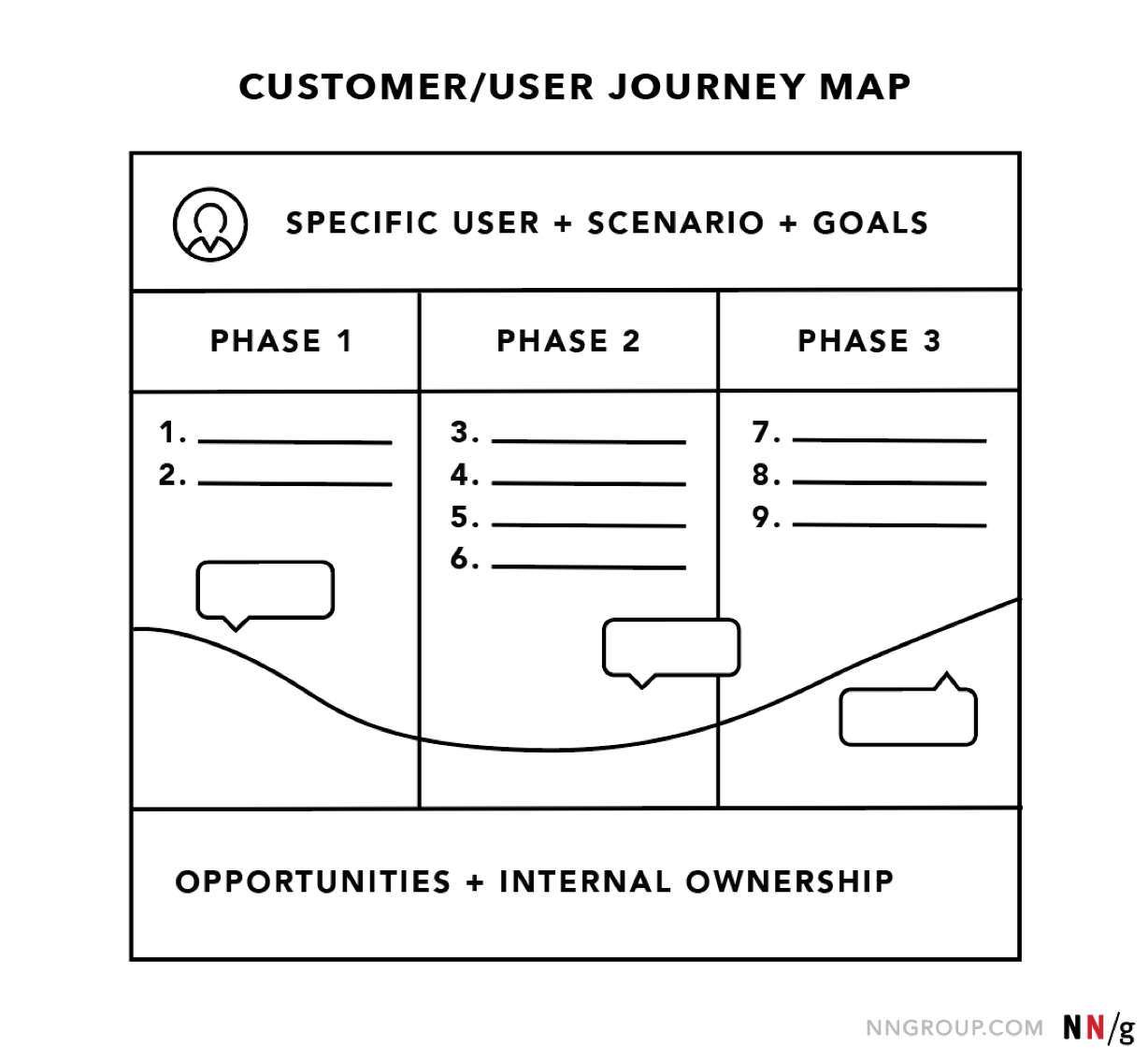
The terms ‘user journey map’ and ‘customer journey map’ can be used interchangeably. Both reference a visualization of a person using your product or service.
While the argument can be made that the term ‘customer’ does a disservice to the method (because, especially for certain business-to-business products, not all of end users are technically customers, i.e., product buyers), alignment on what you call the map is far less important than alignment on the content within the map.
Journey maps come in all shapes and sizes. Regardless of how they look, journey maps have the following 5 key elements in common:
Scenario + Expectations
Journey phases, actions, mindsets, and emotions, opportunities.
The actor is the persona or user who experiences the journey. The actor is who the journey map is about — a point of view. Actors usually align with personas and their actions in the map are rooted in data.
Provide one point of view per map in order to build a strong, clear narrative. For example, a university might choose either a student or a faculty member as actor — each would result in different journeys. (To capture both viewpoints, the university will need to build two separate maps, one for each of the two user types.)
The scenario describes the situation that the journey map addresses and is associated with an actor’s goal or need and specific expectations. For example, one scenario could be switching mobile plans to save money, and expectations for it include to easily find all the information needed to make a decision.
Scenarios can be real (for existing products and services) or anticipated — for products that are yet in the design stage.
Journey maps are best for scenarios that involve a sequence of events (such as shopping or taking a trip), describe a process (thus involve a set of transitions over time), or might involve multiple channels .
Journey phases are the different high-level stages in the journey. They provide organization for the rest of the information in the journey map (actions, thoughts, and emotions). The stages will vary from scenario to scenario; each organization will usually have data to help it determine what these phases are for a given scenario.
Here are some examples:
- For an ecommerce scenario (like buying Bluetooth speakers), the stages can be discover, try, buy, use, seek support.
- For big (or luxury) purchases (like buying a car), the stages can be engagement, education, research, evaluation, justification.
- For a business-to-business scenario (like rolling out an internal tool), the stages could be purchase, adoption, retention, expansion, advocacy.
These are behaviors, thoughts, and feelings the actor has throughout the journey and that are mapped within each of the journey phases.
Actions are the actual behaviors and steps taken by users. This component is not meant to be a granular step-by-step log of every discrete interaction. Rather, it is a narrative of the steps the actor takes during that phase.
Mindsets correspond to users’ thoughts, questions, motivations, and information needs at different stages in the journey. Ideally, these are customer verbatims from research.
Emotions are plotted as single line across the journey phases, literally signaling the emotional “ups” and “downs” of the experience. Think of this line as a contextual layer of emotion that tells us where the user is delighted versus frustrated.
Opportunities (along with additional context such as ownership and metrics) are insights gained from mapping; they speak to how the user experience can be optimized. Insights and opportunities help the team draw knowledge from the map:
- What needs to be done with this knowledge?
- Who owns what change?
- Where are the biggest opportunities?
- How are we going to measure improvements we implement?

There are several concepts closely related and thus easily confused with journey maps.
It is important to note that this section is only meant to help your personal understanding and clarification of these terms. It is not advised to debate or attempt to shift a whole organization’s language to abide by the definitions stated here. Instead, use these definitions to guide you towards aspects of another method that your team has not previously considered.
Journey Map vs. Experience Map
Think of an experience map as a parent to a journey map. A journey map has a specific actor (a singular customer or user of a product) and specific scenario (of a product or service), while an experience map is broader on both accounts — a generic human undergoing a general human experience.
The experience map is agnostic of a specific business or product. It’s used for understanding a general human behavior; in contrast, a customer journey map is specific and focused on a particular business or product.
For example, imagine the world before the ridesharing market existed (Uber, Lyft, Bird, or Limebike, to name a few). If we were to create an experience map of how a person gets from one place to another, the map would likely include walking, biking, driving, riding with a friend, public transportation, or calling a taxi. Using that experience map we could then isolate pain points: unknown fares, bad weather, unpredictable timing, paying in cash, and so on. Using these pain points, we would then create a future journey map for specific product: how does a particular type of user call a car using the Lyft app?
Journey Map vs. Service Blueprint
If journey maps are the children to experience maps, then service blueprints are the grandchildren. They visualize the relationships between different service components (such as people or processes) at various touchpoints in a specific customer journey.
Think of service blueprints as a part two to customer journey maps. They are extensions of journey maps, but instead of being focused on the user (and taking the user’s viewpoint), they are focused on the business (and take its perspective).
For the Lyft scenario above, we would take the journey map and expand it with what Lyft does internally to support that customer journey. The blueprint could include matching the user to a driver, contacting the driver, calculating fares, and so on.
Journey Map vs. User Story Map
User stories are used in Agile to plan features or functionalities. Each feature is condensed down to a deliberately brief description from a user’s point of view; the description focuses on what the user wants to do, and how that feature will help. The typical format of a user story is a single sentence: “As a [type of user], I want to [goal], so that [benefit].” For example, “As a checking account holder, I want to deposit checks with my mobile device, so that I don’t have to go to the bank.”
A user story map is a visual version of a user story. For example, take the user story above (“As a checking account holder, I want to deposit checks with my mobile device, so that I don’t have to go to the bank.”) and imagine writing out the different steps that the team plans for the user to take when using that functionality. These steps could be: logging in, beginning deposit, taking picture of check, and entering transaction details. For each step, we can document required features: enabling camera access, scanning check and auto filling numbers, and authorizing signature. In a user story map, these features are written on sticky notes, then arranged based on the product release that each functionality will be added to.
While, at a glance, a user story map may look like a journey map, journey maps are meant for discovery and understanding (think big picture), while user story maps are for planning and implementation (think little picture).
Although a journey map and user story map may contain some of the same pieces, they are used at different points of the process. For example, imagine our journey map for Lyft indicated that a pain point appeared when the user was in a large group. To address it, the team may introduce a multicar-call option. We could create a user story map to break this feature (multicar call) into smaller pieces, so a product-development team could plan release cycles and corresponding tasks.
The benefits of journey maps (and most other UX mappings ) are two-fold. First, the process of creating a map forces conversation and an aligned mental model for the whole team. Fragmented understanding is a widespread problem in organizations because success metrics are siloed; it is no one’s responsibility to look at the entire experience from the user’s standpoint. This shared vision is a critical goal of journey mapping, because, without it, agreement on how to improve customer experience would never take place.
Second, the shared artifact resulting from the mapping can be used to communicate an understanding of your user or service to all involved. Journey maps are effective mechanisms for conveying information in a way that is memorable, concise, and that creates a shared vision. The maps can also become the basis for decision making as the team moves forward.
Journey mapping is a process that provides a holistic view of the customer experience by uncovering moments of both frustration and delight throughout a series of interactions. Done successfully, it reveals opportunities to address customers’ pain points, alleviate fragmentation, and, ultimately, create a better experience for your users.
Additional articles are available, discussing:
- When to create customer journey maps
- The 5-step process
- Journey mapping in real life
Free Downloads
Related courses, journey mapping to understand customer needs.
Capture and communicate UX insights across complex interactions
Omnichannel Journeys and Customer Experience
Create a seamless, cohesive cross-channel experience
Interaction
Generating Big Ideas with Design Thinking
Unearth user pain points to drive breakthrough design concepts
Related Topics
- Customer Journeys Customer Journeys
- Design Process
Learn More:
Please accept marketing cookies to view the embedded video. https://www.youtube.com/watch?v=2W13ext26kQ
Customer Journey Mapping 101

Interactive UX Maps 101
Megan Brown · 4 min

Journey Mapping: 2 Decisions to Make Before You Begin
Kate Kaplan · 3 min

Scenario Mapping for Design Exploration
Kim Flaherty · 3 min
Related Articles:
The 5 Steps of Successful Customer Journey Mapping
Kate Kaplan · 6 min
Parking Lots in UX Meetings and Workshops
Sarah Gibbons · 5 min
When and How to Create Customer Journey Maps
User Experience vs. Customer Experience: What’s The Difference?
Kim Flaherty · 5 min
Journey Mapping: 9 Frequently Asked Questions
Alita Joyce and Kate Kaplan · 7 min
Luxury Shopping User Groups and Journeys
Kate Moran · 14 min

How to create a customer journey map
Lucid Content
Reading time: about 8 min
How to Make a Customer Journey Map
- Conduct persona research
- Define customer touchpoints
- Map current states
- Map future states
Steve Jobs, the genius behind Apple’s one-of-a-kind customer experience, said, “You’ve got to start with the customer experience and work back toward the technology, not the other way around.”
Nowadays, a clear vision and strategy for customer interactions is no longer an optional “nice-to-have”—it’s essential. As you refine your customer experience, a customer journey map is one of the most powerful ways to understand your current state and future state.
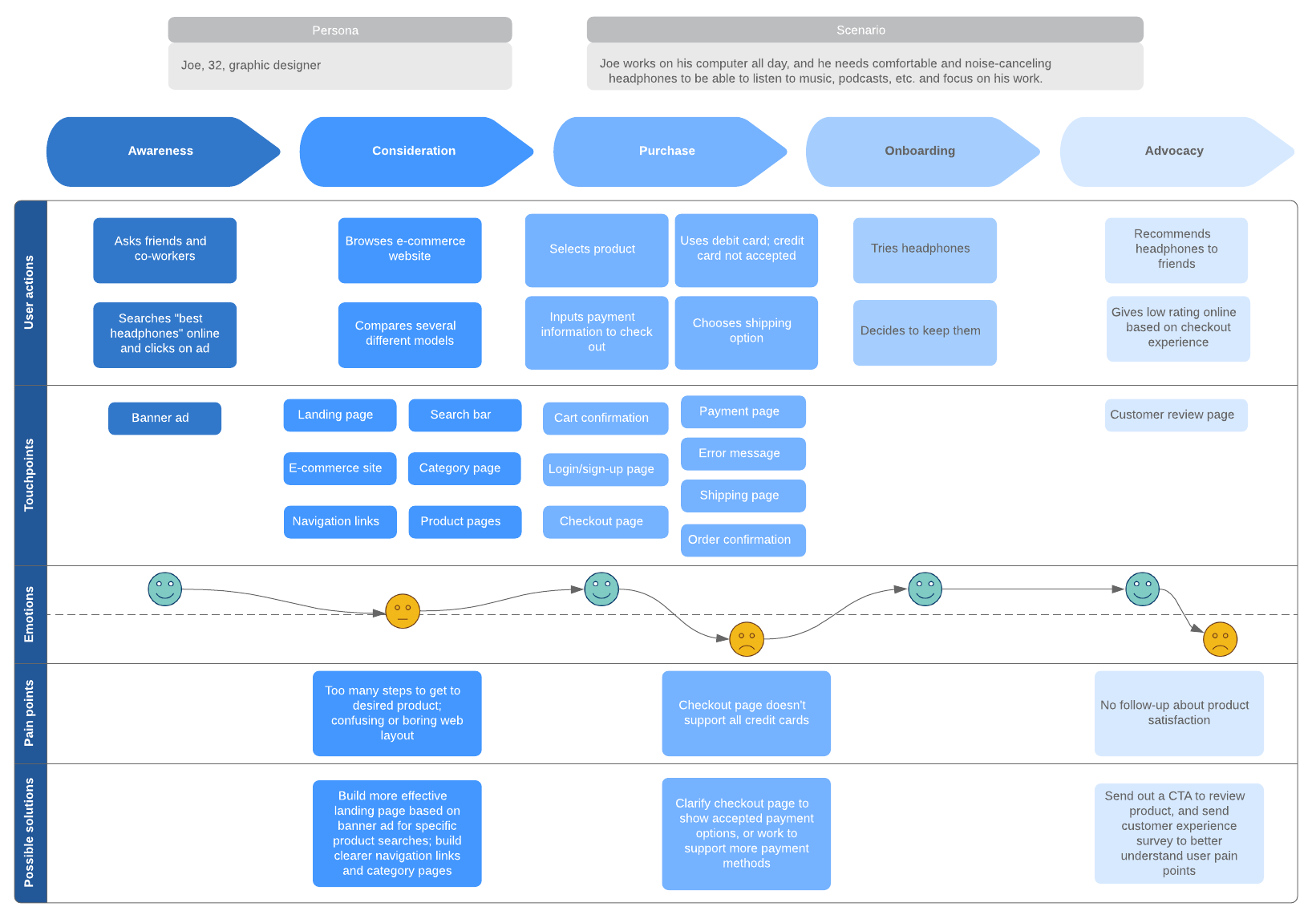
A customer journey map is a diagram that shows the process your customers go through in interacting with your business, such as an experience on the website, a brick and mortar experience, a service, a product, or a mix of those things.
What is a customer journey map?
A customer journey map is a visual representation of a customer’s experience with your brand. These visuals tell a story about how a customer moves through each phase of interaction and experiences each phase. Your customer journey map should include touchpoints and moments of truth, but also potential customer feelings, such as frustration or confusion, and any actions you want the customer to take.
Customer journey maps are often based on a timeline of events, such as a customer’s first visit on your website and the way they progress towards their first in-product experience, then purchase, onboarding emails, cancellation, etc.
Your customer journey maps may need to be tailored to your business or product, but the best way to identify and refine these phases is to actually talk to your customers. Research your target audiences to understand how they make decisions, decide to purchase, etc. Without an essential understanding of your customers and their needs, a customer map will not lead you to success. But, a well-constructed and researched customer journey map can give you the insights to drastically improve your business’s customer experience.
The benefits of customer journey mapping
Customer journey mapping is a powerful tool for uncovering insights into your customer experience, driving business goals, and building resilience in a changing market. In a 2022 report, Hanover Research found that 94% of businesses said their customer journey maps help them develop new products and services to match customer needs. Another 91% said their maps drove sales.
But understanding a customer’s journey across your entire organization does so much more than increase your revenue. It enables you to discover how to be consistent when it comes to providing a positive customer experience and retaining customer loyalty.
This was especially evident in recent years as top of improving marketing, customer journey maps emerged as a valuable way to understand evolving buyer behavior. In fact, 1 in 3 businesses used customer journey maps to help them navigate the changing landscape during the pandemic.
When done correctly, customer journey mapping helps to:
- Increase customer engagement through channel optimization.
- Identify and optimize moments of truth in the CX.
- Eliminate ineffective touchpoints.
- Shift from a company to a customer-focused perspective.
- Break down silos between departments and close interdepartmental gaps.
- Target specific customer personas with marketing campaigns relevant to their identity.
- Understand the circumstances that may have produced irregularities in existing quantitative data.
- Assign ownership of various customer touchpoints to increase employee accountability.
- Make it possible to assess the ROI of future UX/CX investments.
Following the process outlined above, customer mapping can put your organization on a new trajectory of success. Yet, according to Hanover Research, only 47% of companies currently have a process in place for mapping customer journeys. Making the investment to map your customer journey and solidify that process as part of your company’s DNA can result in significant advantages in your competitive landscape, making your solution the go-to option that customers love.
Customer journey maps can become complicated unless you keep them focused. Although you may target multiple personas, choose just one persona and one customer scenario to research and visualize at a time. If you aren’t sure what your personas or scenarios might be, gather some colleagues and try an affinity diagram in Lucidchart to generate ideas.
1. Set goals
Without a goal, it will be difficult to determine whether your customer journey map will translate to a tangible impact on your customers and your business. You will likely need to identify existing—and future—buyers so you can set goals specifically for those audiences at each stage of their experience.
Consider gathering the key stakeholders within your company—many of whom likely touch different points of the customer experience. To set a logical and attainable goal, cross-functional teamwork is essential. Gather unique perspectives and insights about each part of the existing customer journey and where improvements are needed, and how those improvements will be measured.
Pro Tip : If you don’t already have them in place, create buyer personas to help you focus your customer journey map on the specific types of buyers you’re optimizing for.
2. Conduct persona research
Flesh out as much information as possible about the persona your customer journey map is based on. Depending on the maturity of your business, you may only have a handful of records, reports, or other pre-existing data about the target persona. You can compile your preliminary findings to draft what you think the customer journey may look like. However, the most insightful data you can collect is from real customers or prospective customers—those who have actually interacted with your brand. Gather meaningful customer data in any of the following ways:
- Conduct interviews.
- Talk to employees who regularly interact with customers.
- Email a survey to existing users.
- Scour customer support and complaint logs.
- Pull clips from recorded call center conversations.
- Monitor discussions about your company that occur on social media.
- Leverage web analytics.
- Gather Net Promoter Score (NPS) data.
Look for information that references:
- How customers initially found your brand
- When/if customers purchase or cancel
- How easy or difficult they found your website to use
- What problems your brand did or didn’t solve
Collecting both qualitative and quantitative information throughout your research process ensures your business makes data-driven decisions based on the voice of real customers. To assist when conducting persona research, use one of our user persona templates .

Discover more ways to understand the Voice of the Customer
3. Define customer touchpoints
Customer touchpoints make up the majority of your customer journey map. They are how and where customers interact with and experience your brand. As you research and plot your touchpoints, be sure to include information addressing elements of action, emotion, and potential challenges.
The number and type of touchpoints on your customer journey map will depend on the type of business. For example, a customer’s journey with a SaaS company will be inherently different than that of a coffee shop experience. Simply choose the touchpoints which accurately reflect a customer’s journey with your brand.
After you define your touchpoints, you can then start arranging them on your customer journey map.
4. Map the current state
Create what you believe is your as-is state of the customer journey, the current customer experience. Use a visual workspace like Lucidchart, and start organizing your data and touchpoints. Prioritize the right content over aesthetics. Invite input from the stakeholders and build your customer journey map collaboratively to ensure accuracy.
Again, there is no “correct” way to format your customer journey map, but for each phase along the journey timeline, include the touchpoints, actions, channels, and assigned ownership of a touchpoint (sales, customer service, marketing, etc.). Then, customize your diagram design with images, color, and shape variation to better visualize the different actions, emotions, transitions, etc. at a glance.
Mapping your current state will also help you start to identify gaps or red flags in the experience. Collaborators can comment directly on different parts of your diagram in Lucidchart, so it’s clear exactly where there’s room for improvement.
5. Map future states
Now that you’ve visualized the current state of the customer journey, your map will probably show some gaps in your CX, information overlap, poor transitions between stages, and significant pain points or obstacles for customers.
Use hotspots and layers in Lucidchart to easily map out potential solutions and quickly compare the current state of the customer journey with the ideal future state. Present your findings company-wide to bring everyone up to speed on the areas that need to be improved, with a clear roadmap for expected change and how their roles will play a part in improving the customer journey.
Customer journey map templates
You have all the right information for a customer journey map, but it can be difficult to know exactly how to start arranging the information in a digestible, visually appealing way. These customer journey mapping examples can help you get started and gain some inspiration about what—and how much—to include and where.
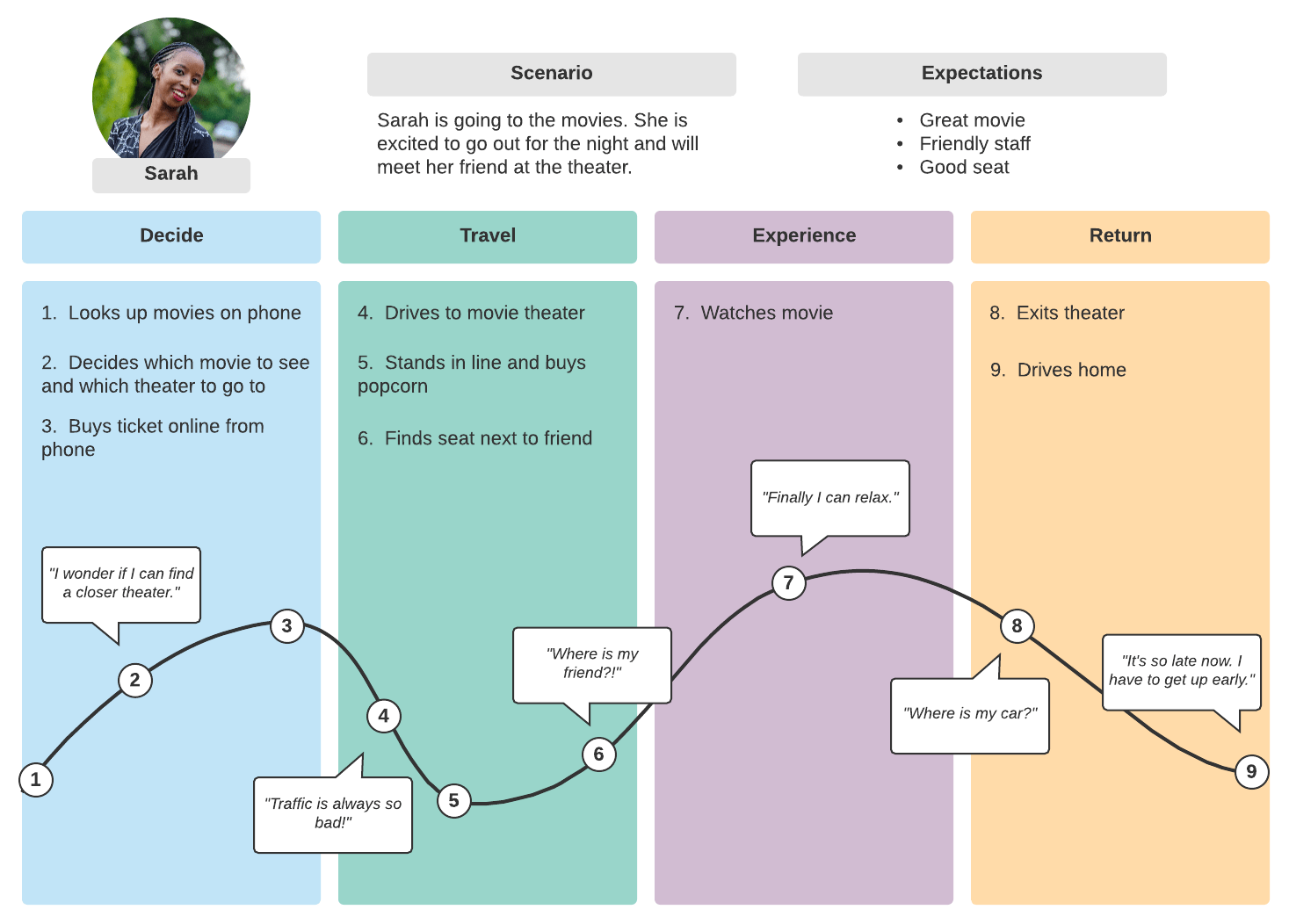
Don’t let the possibility of a bad customer journey keep you up at night. Know the current state of the customer journey with you business, and make the changes you need to attract and keep customers happy.
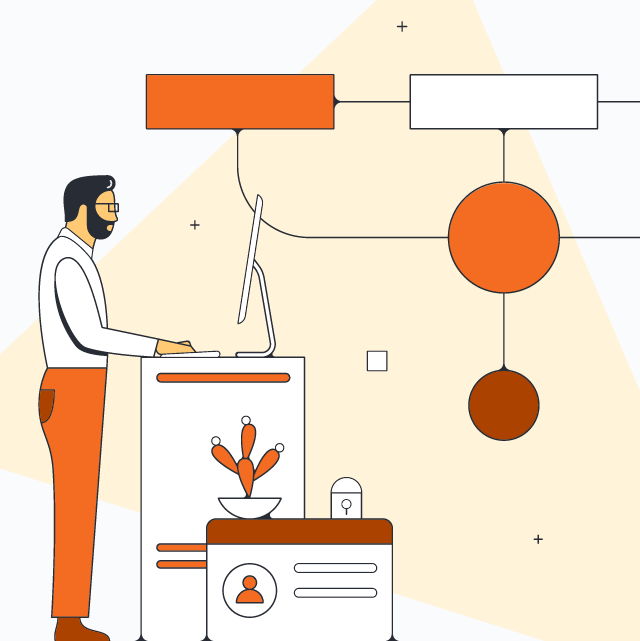
Customer journey mapping is easy with Lucidchart.
About Lucidchart
Lucidchart, a cloud-based intelligent diagramming application, is a core component of Lucid Software's Visual Collaboration Suite. This intuitive, cloud-based solution empowers teams to collaborate in real-time to build flowcharts, mockups, UML diagrams, customer journey maps, and more. Lucidchart propels teams forward to build the future faster. Lucid is proud to serve top businesses around the world, including customers such as Google, GE, and NBC Universal, and 99% of the Fortune 500. Lucid partners with industry leaders, including Google, Atlassian, and Microsoft. Since its founding, Lucid has received numerous awards for its products, business, and workplace culture. For more information, visit lucidchart.com.
Bring your bright ideas to life.
or continue with
By registering, you agree to our Terms of Service and you acknowledge that you have read and understand our Privacy Policy .
Affordable & In-Depth Customer Journey Mapping
Navigate the complex customer journey to identify key touch points, pinpoint problem areas and uncover opportunities for high-impact improvement.
Why use Hanover
- Map what matters to you — focus on pre-purchase engagement, the customer experience or the entire customer journey
- Use the data that you have — we can use both qualitative and quantitative data sources to create an accurate map
- Understand the journey of multiple audiences — map the journey for each of your key audience segments
- Get actionable data — you'll get a visual journey map and expert analysis that includes key findings, pain points and recommendations for improvement

How it works
Illuminate every stage of the customer journey by analyzing activities and events throughout the purchase journey to identify influential factors and current pain points to help you engage more effectively with your customers.
Define your audience
Decide which part of the journey you want to map.
(pre-purchase, post-purchase or the entire journey)
Receive your journey map with key findings
How it helps.
- Connect demand to what and why customers buy
- Engage your brand’s most valuable buyers
- Grow buyer ROI through customized marketing and advertising
- Leverage key touchpoints to get more customers
- Enhance customer retention and satisfaction by addressing pain points and improving service delivery

What people say

Speak with a Customer Journey Expert
Copyright © 2020 Hanover Research All Rights Reserved | Privacy Policy
Mapping your journey to SAP S/4HANA Cloud Private Edition : A practical guide for senior IT leadership
Learn how SAP wants to support and guide by conveying the latest developments for moving to SAP S/4HANA and SAP S/4HANA Cloud Private Edition in a practical, condensed, down-to-earth guide for executives, project managers, decision-makers, and senior IT leadership. Download the Document

COMMENTS
Provide up to 26 locations and Route Planner will optimize, based on your preferences, to save you time and gas money. Find the shortest routes between multiple stops and get times and distances for your work or a road trip. Easily enter stops on a map or by uploading a file. Save gas and time on your next trip.
Plan your road trip or vacation with the best free itinerary and road trip planner. Wanderlog lets you to make itineraries with friends, mark routes, and optimize maps — on web or mobile app ... Use Wanderlog to map your journey to figure out the best routes, keep track of hotel and flight bookings and reservations, and read guides from other ...
Roadtrippers offers an automated road trip planner. Let us do the planning for you! Enter in a few key details and we'll craft a custom tailored trip just for you. All plans include access to curated trip guides, Extraordinary Places, and 5 million points of interest. Test drive the best features of Roadtrippers Premium for free!
Trace your itinerary - TravelMap. My itinerary. This is a free demo version of our mapping software. Create an account to save your current itinerary and get access to all our features. Otherwise your data will be automatically deleted after one week.
Did you know: If you use the Roadtrippers mobile app, your trips will instantly auto-sync over... Ready for navigation and good times! Search. The ultimate road trip planner to help you discover extraordinary places, book hotels, and share itineraries all from the map.
Right-click or long-tap on a point or segment for more options. On The Go Map calculates the distance of your route as you create it. Click the distance display to switch between miles and kilometers. to show an elevation profile for your route as you create it. To change the routing mode of an existing segment, right click or long-tap on it.
You can do a lot more than just map your travels on Travellerspoint. Creating an account is totally free and gives you acess to other handy features like: NEW 2024 VERSION ... Create a map of all your travels and embed it on your own blog or website. An excellent tool for planning future trips as well as plotting out previous travels.
Breaking down the customer journey, phase by phase, aligning each step with a goal, and restructuring your touchpoints accordingly are essential steps for maximizing customer success. Here are a few more benefits to gain from customer journey mapping. 1. You can refocus your company with an inbound perspective.
Here's our beginner customer journey mapping framework to help you create your first complete map in 2 and ½ working days: Day 1: preliminary customer journey mapping work. Day 2: prep and run your customer journey mapping workshop. Final ½ day: wrap up and share your results.
Present the CJM's purpose & goals. Now it's time to kick off the customer journey map exercise. Start by speaking to the purpose and goals you've identified for the map. It's important to make sure your team understands what you're trying to accomplish, or else you run the risk of the session getting off track.
The journey map exercise is focused on the customer experience with your organization so it is critical that all members of the organization that interact with customers participate in the exercise. This might include: members of the call centre or customer service. marketing team members. persons responsible for analytics review and monitoring.
This way, you double-check and confirm your findings for a more complete picture. A hands-on approach ensures your customer journey map reflects the real-world experience and equips you to take targeted actions to improve the overall customer journey. 7. Make changes and find solutions. So your map is complete.
Pilot your journey map. Before presenting your map, ask a colleague or team member to view and explain key takeaways from the artifact. One participant wrote, "Ask a colleague or team member to have a pre-client/stakeholder demo so you can work out as many kinks as possible." This type of exercise will help reveal points of confusion ahead ...
Set goals within the customer journey map like seeing your product through your customer's eyes, ways to improve your product or service, and how it all impacts your future. Step 2. Define your customer persona. Your customer is the core of your journey map, so the first step is defining your target customer persona.
Customer journey vs process flow. Understanding customer perspective, behavior, attitudes, and the on-stage and off-stage is essential to successfully create a customer journey map - otherwise, all you have is a process flow. If you just write down the touchpoints where the customer is interacting with your brand, you're typically missing up to 40% of the entire customer journey.
Define the map's scope (15 min) Ideally, customer journey mapping focuses on the experience of a single persona in a single scenario with a single goal. Else, the journey map will be too generic, and you'll miss out on opportunities for new insights and questions. You may need to pause creating a customer journey map until you have defined your ...
A customer journey map helps you gain a better understanding of your customers so you can spot and avoid potential concerns, make better business decisions and improve customer retention. The map ...
Definition: A journey map is a visualization of the process that a person goes through in order to accomplish a goal. In its most basic form, journey mapping starts by compiling a series of user actions into a timeline. Next, the timeline is fleshed out with user thoughts and emotions in order to create a narrative.
Customer journey mapping can be done in a variety of ways and for many different purposes. Custellence has the flexibility and structure that makes it suitable for most kinds of customer journeys. Here are the essential steps how to map your customer journey and create value by using Custellence. All kinds of journeys can be mapped in Custellence The customer journey map comes in many versions ...
Simply choose the touchpoints which accurately reflect a customer's journey with your brand. After you define your touchpoints, you can then start arranging them on your customer journey map. 4. Map the current state. Create what you believe is your as-is state of the customer journey, the current customer experience.
Map what matters to you — focus on pre-purchase engagement, the customer experience or the entire customer journey; Use the data that you have — we can use both qualitative and quantitative data sources to create an accurate map; Understand the journey of multiple audiences — map the journey for each of your key audience segments
Mapping your journey to SAP S/4HANA Cloud Private Edition : A practical guide for senior IT leadership. Learn how SAP wants to support and guide by conveying the latest developments for moving to SAP S/4HANA and SAP S/4HANA Cloud Private Edition in a practical, condensed, down-to-earth guide for executives, project managers, decision-makers ...
A buyer journey map helps brands stand in the shoes of their customers. Following their steps, they head north on Awareness Street toward Consideration Road, turn left, and continue for 0.5 miles until Decision Stage is on their right. Of course, there are quite a few more steps involved than that. Customer journey mapping helps make sense of ...